-
Air raids in Ukraine began as Trump and Putin spoke, Zelensky calls for more Patriot missiles
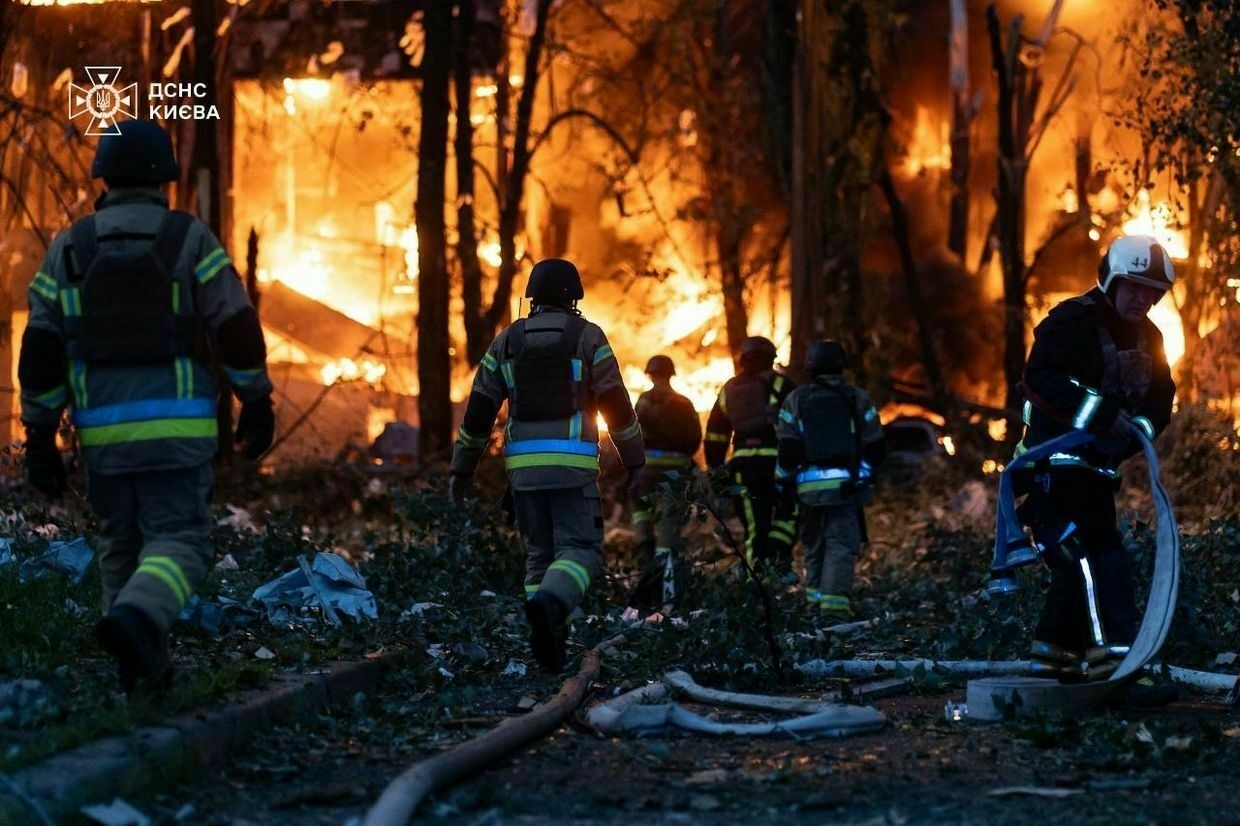
President Volodymyr Zelensky called for more air defence for Ukraine after a massive drone and missile attack on Ukraine’s capital overnight on July 4.
According to Zelensky, as U.S. President Donald Trump and Russian President Vladimir Putin were talking on the phone on July 3, air raid sirens blared across Ukraine.“Moreover, the first air raids in our cities and regions began yesterday almost simultaneously with the start of media discussions of President Trump’s phone call with Putin,” Zelesnky wrote. “Russia is once again demonstrating that it is not going to end the war and terror."
The overnight attack struck Kyiv and several other regions, injuring at least 23 people and setting off dozens of fires in Ukraine’s capital. Russian forces launched more than 550 aerial weapons, including over 330 Iranian-type Shahed drones and multiple types of missiles, including ballistic missiles, Zelensky said.
Kyiv was the main target. Ukraine’s military said it shot down 270 aerial threats, while 208 additional drones were jammed by electronic warfare. Interceptor drones also downed dozens more, Zelensky said, calling their growing use a key defense priority.
Zelensky stressed the need for continued and increased military aid from allies, especially air defenses. “Patriots and their missiles are real defenders of life,” Zelensky said. “It is very important to maintain the support of partners in ballistic missile defense."
Despite Russia’s escalating attacks and Ukraine’s desperate need for air defense munitions, the U.S. has decided to halt shipments of Patriot missiles and other promised weapons to Kyiv, claiming it needs to secure its own stockpiles.
Beyond Kyiv, strikes also hit the Dnipropetrovsk, Sumy, Kharkiv, Chernihiv, and Kyiv oblasts, according to Zelensky. Fires and damage were reported in nearly every district of the capital, including residential buildings, schools, medical facilities, and railway infrastructure.
Local authorities described the night as “terroristic.” Kyiv Mayor Vitali Klitschko reported fires in at least five districts. Air quality in the city remained dangerously poor by morning, as noted by the Ministry of Environmental Protection.
Meanwhile, Russian state media reported that during the Trump-Putin call, Putin reiterated his determination to continue pursuing the Kremlin’s goals in Ukraine, despite mounting international calls for a ceasefire.
Zelensky called on Ukraine’s allies, particularly the United States, to apply massive and immediate pressure on Russia. “We need to ensure that for every such attack on people and lives, they (Russia) feel the corresponding sanctions and other blows to their economy, their earnings, their infrastructure,” he said. “Only this can bring faster change."
Ukraine scrambles to clarify extent of US military aid pause and ‘whether everything will continue’When the U.S. Department of Defense (DOD) halted the transfer of critical air defense missiles and other weapons to Ukraine, Kyiv and its partners were caught off-guard and are now left scrambling for clarity on the scope and length of the Trump administration’s decision. The White House confirmed the halt after a July 1 report by Politico said shipments were paused due to concerns over the size of domestic stockpiles. The decision “was made to put America’s interests first following a DOD rev The Kyiv IndependentAndrea Januta
The Kyiv IndependentAndrea Januta
-
Ukrainian drones strike Moscow, Rostov oblasts, Russian officials say
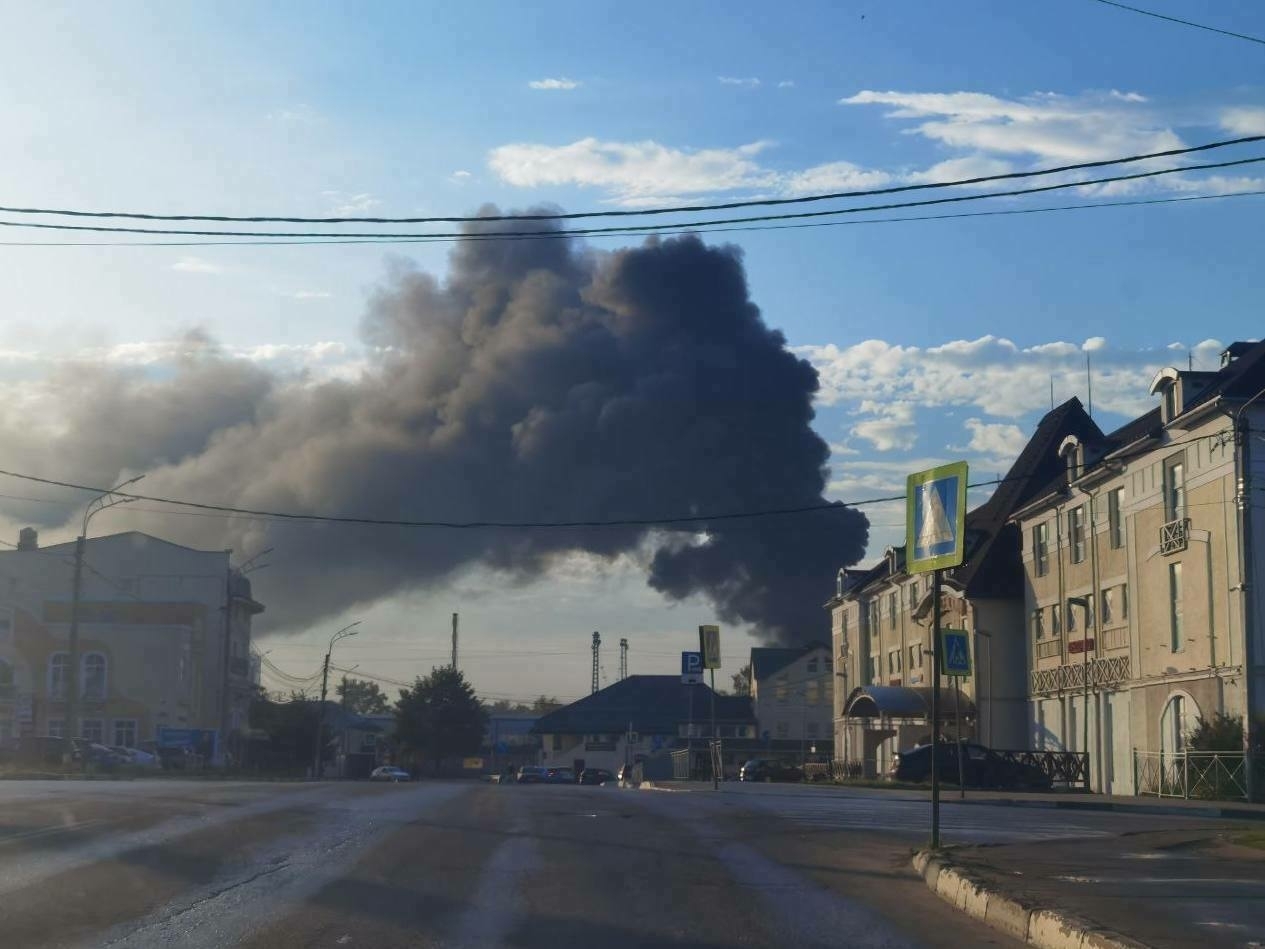
Several drone attacks targeted Moscow Oblast and multiple settlements in the southern Rostov Oblast overnight on July 4, Russian officials reported.
Yuriy Slyusar, acting governor of Rostov Oblast, said a number of towns in the region were struck by drones. In the city of Azov, the attack reportedly damaged several cars and shattered windows in residential buildings. Debris from one drone allegedly fell onto a local stadium.
In the village of Dolotinka, a drone strike reportedly caused the collapse of a section of a residential apartment building, killing an elderly woman. Authorities said 20 residents were evacuated from the damaged structure.
In Sergiyev Posad in Moscow Oblast, four explosions were reported around 5 a.m. near the Zvezdochka neighborhood, accompanied by the sound of drone engines, according to local residents. Oksana Yerokhanova, head of the district, said a power substation was damaged in the incident.
Two people were injured in Sergiyev Posad, according to Governor Andrei Vorobyov.
Russia’s Defense Ministry later claimed that air defense systems had intercepted or destroyed 48 Ukrainian drones overnight. According to the ministry, 26 were downed over Rostov Oblast, 12 over Kursk Oblast, six over Belgorod Oblast, three over Oryol Oblast, and one over Lipetsk Oblast.
The Kyiv Independent could not independently verify these claims. Ukrainian authorities have not commented on the incidents.
Ukraine scrambles to clarify extent of US military aid pause and ‘whether everything will continue’When the U.S. Department of Defense (DOD) halted the transfer of critical air defense missiles and other weapons to Ukraine, Kyiv and its partners were caught off-guard and are now left scrambling for clarity on the scope and length of the Trump administration’s decision. The White House confirmed the halt after a July 1 report by Politico said shipments were paused due to concerns over the size of domestic stockpiles. The decision “was made to put America’s interests first following a DOD rev The Kyiv IndependentAndrea Januta
The Kyiv IndependentAndrea Januta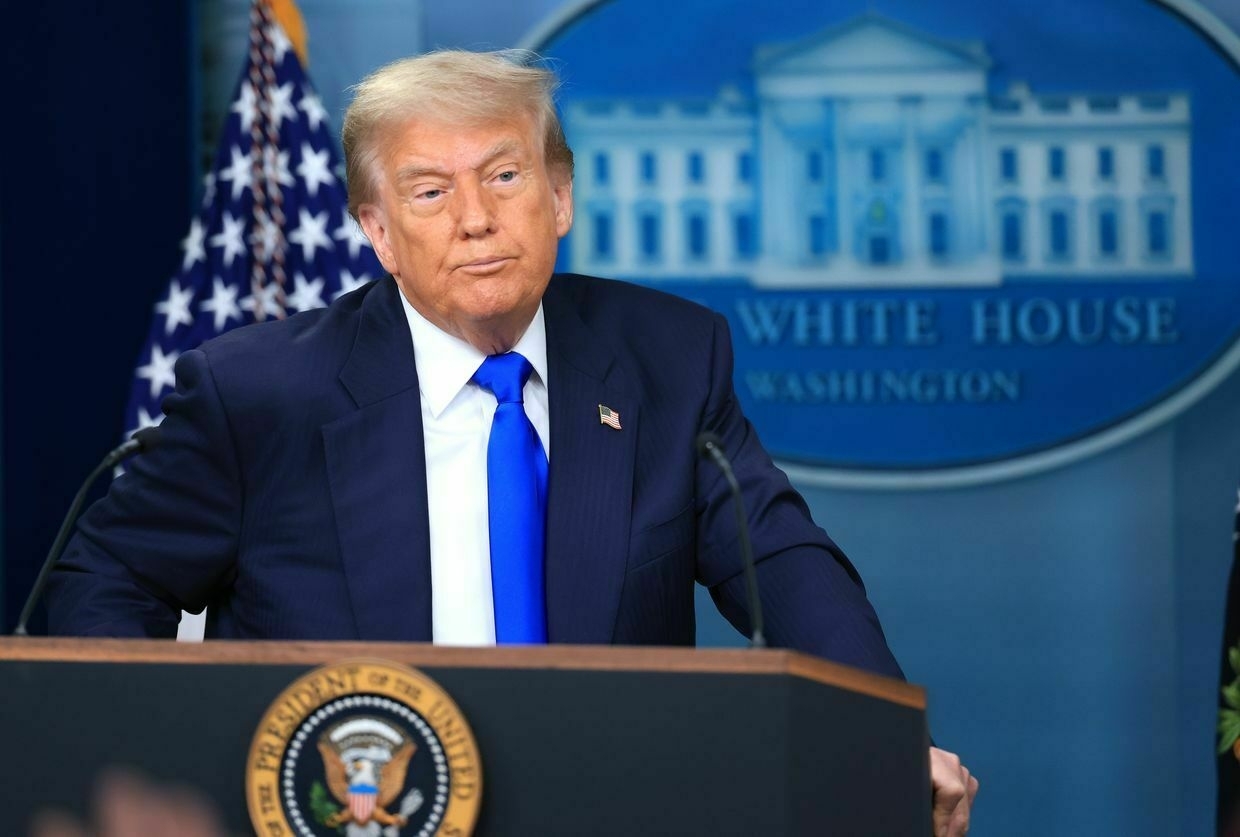
-
Trump's pause on Russia sanctions under investigation by Senate Democrats

Three Democratic Senators have launched an investigation into U.S. President Donald Trump’s refusal to impose new sanctions against Russia, the legislators announced in a joint statement on July 3.
Since taking office in January, Trump has passed no new sanctions against Moscow. In some cases, he has even eased restrictions, even as Russia intensifies its full-scale war against Ukraine.
Senate Democrats Jeanne Shaheen, Elizabeth Warren, and Chris Coons called on the administration to impose new penalties on the Kremlin and said they planned to investigate Trump’s “five-month pause” on sanctions.
“Americans should be asking why a president who says he wants to end a major war is instead letting the aggressor run rampant,” the senators said in a joint statement issued July 3.
The statement followed an analysis by the New York Times (NYT), published July 2, which found that Washington’s slowed momentum on sanctions created more opportunities for shell companies to funnel sanctioned goods into Russia.
Former U.S. President Joe Biden imposed an average of 170 new sanctions per month on entities tied to Moscow between 2022-2024, according to the NYT. Overall, the Biden administration slapped 6,200 penalties on individuals, businesses, ships, and aircraft connected to Russia.
Without new sanctions to maintain pressure on Moscow, the effects of the Biden sanctions regime have begun to erode, the NYT reported. An analysis of trade records and other data. showed that over 130 companies in China and Hong Kong are advertising sales of sanctioned computer chips to Russia. Despite this illegal activity, none of the companies have been sanctioned.
Ukraine scrambles to clarify extent of US military aid pause and ‘whether everything will continue’When the U.S. Department of Defense (DOD) halted the transfer of critical air defense missiles and other weapons to Ukraine, Kyiv and its partners were caught off-guard and are now left scrambling for clarity on the scope and length of the Trump administration’s decision. The White House confirmed the halt after a July 1 report by Politico said shipments were paused due to concerns over the size of domestic stockpiles. The decision “was made to put America’s interests first following a DOD rev The Kyiv IndependentAndrea Januta
The Kyiv IndependentAndrea Januta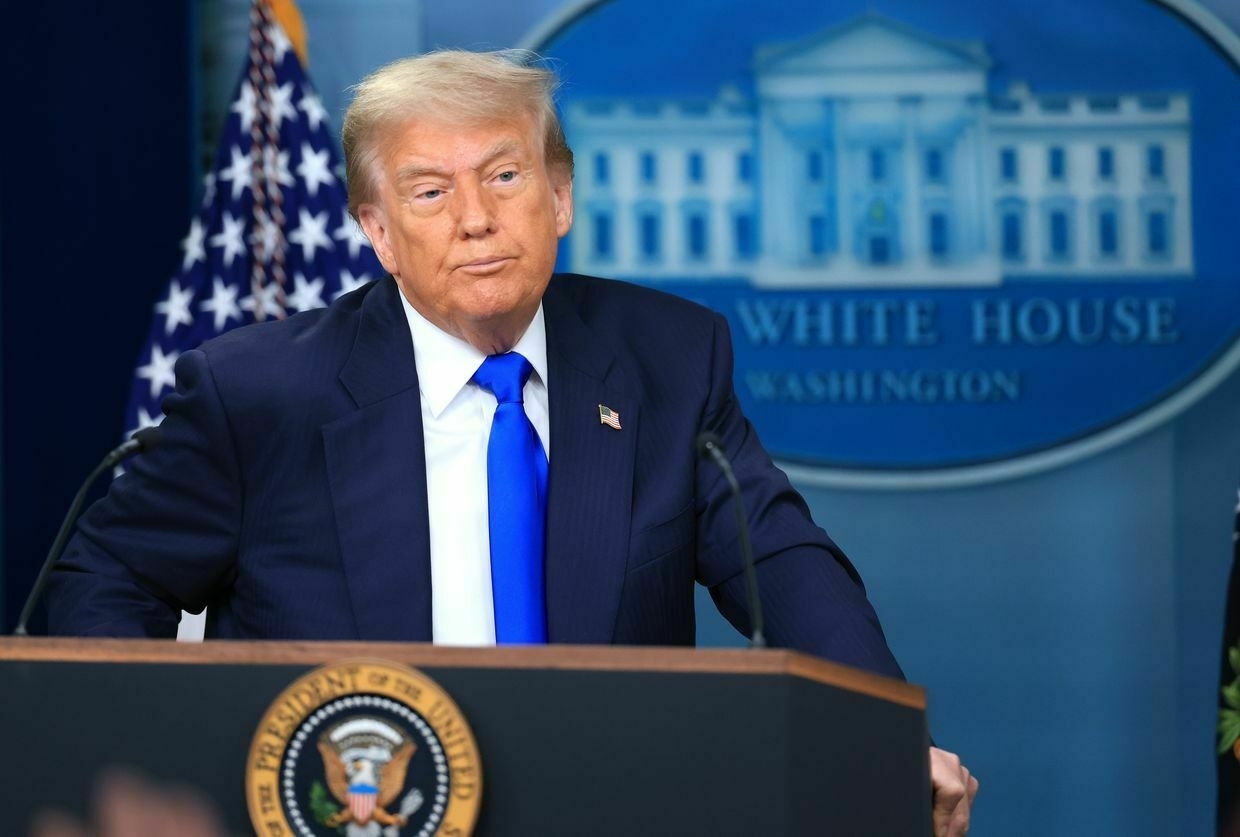
“On top of halting key assistance to Ukraine, President Trump has blocked regular updates to our sanctions and export controls for five months and counting—enabling a growing wave of evaders in China and around the world to continue supplying Russia’s war machine,” Senators Shaheen, Warren, and Coons said in their statement.
The senators called on Trump to “actively enforce the existing sanctions against Russia” and urged the administration to partner with EU and G7 nations to mount pressure on Moscow.
“Instead of taking clearly available steps to pressure the aggressors, President Trump is doing nothing and we will be investigating this missed opportunity to push for an end to this war,” they said.
Along with letting U.S. sanctions on the Kremlin go stagnant, the Trump administration has removed sanctions on Karina Rotenberg, the wife of a key ally of Russian President Vladimir Putin, and notably exempted Russia from its sweeping “Liberation Day” tariffs.
reportedly obstructed bipartisan congressional efforts to target the Russian economy. Trump has asked Republican senators to weaken a proposed sanctions bill and has urged delays in a vote on the legislation.
The bipartisan sanctions bill, introduced by Republican Senator Lindsey Graham and Senate Democrat Richard Blumenthal, seeks to impose a 500% tariff on imports from countries that continue purchasing Russian oil and raw materials.
Ukraine war latest: Putin tells Trump Russia won’t back down from its war aims in UkraineKey developments on July 3: * Putin tells Trump Russia won’t back down from its war aims in Ukraine * Deputy commander of Russian Navy killed in Ukrainian strike in Kursk, Russian official confirms * Ukraine signs major drone co-production deal with US Swift Beat, Zelensky announces * Russia targets Ukrainian conscription offices to disrupt mobilization, military spokesperson says after Poltava attack * ‘One of Russia’s most critical targets’ — Ukraine confirms strike on missile battery pl The Kyiv IndependentThe Kyiv Independent news desk
The Kyiv IndependentThe Kyiv Independent news desk
-
'We haven't' — Trump denies US pausing weapons to Ukraine, despite Pentagon decision to halt shipments
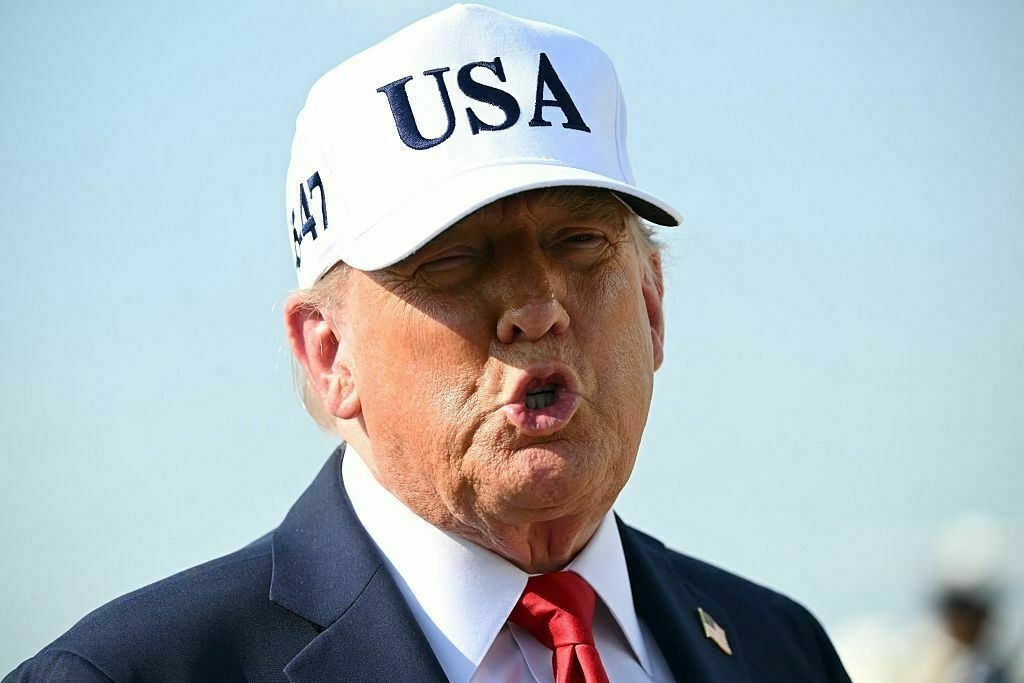
U.S. President Donald Trump brushed off a reporter’s question on July 3 about pausing weapons deliveries to Ukraine, claiming Washington is “giving weapons” to Kyiv.
The Pentagon previously confirmed that the U.S. has already halted some military aid shipments to Ukraine in order to conduct what it calls a “capability review” of its own stockpiles.
“Why did you pause weapons shipments to Ukraine?” a reporter asked Trump as the president prepared to board Air Force One.
“We haven’t,” Trump replied. “We’re giving weapons.”
Trump then offered a contradictory answer, saying the U.S. is “trying to help” Ukraine while also claiming that former U.S. President Joe Biden depleted the country’s weapons stocks with military aid to Kyiv and that Washington must defend its own interests.
“But we’ve given so many weapons — but we are giving weapons, and we’re working with (Ukraine), we’re trying to help them,” Trump said.
“But we haven’t… You know, Biden emptied out our whole country giving them weapons and we have to make sure that we have enough for ourselves."
Trump then asked the reporter which media outlet he represented.
“The New York Times,” the journalist said.
“Ah, no wonder,” Trump replied.
Ukraine scrambles to clarify extent of US military aid pause and ‘whether everything will continue’When the U.S. Department of Defense (DOD) halted the transfer of critical air defense missiles and other weapons to Ukraine, Kyiv and its partners were caught off-guard and are now left scrambling for clarity on the scope and length of the Trump administration’s decision. The White House confirmed the halt after a July 1 report by Politico said shipments were paused due to concerns over the size of domestic stockpiles. The decision “was made to put America’s interests first following a DOD rev The Kyiv IndependentAndrea Januta
The Kyiv IndependentAndrea Januta
Reports that the U.S. had suddenly paused some weapons shipments — including deliveries of desperately needed air defense missiles — left officials in Kyiv scrambling for answers. Trump’s response provides little clarity and even less reassurance to Ukrainians facing increasingly deadly Russian missile attacks night after night.
The decision to halt the shipments “was made to put America’s interests first following a (U.S. Defense Department) review of our nation’s military support and assistance to other countries across the globe,” White House Deputy Press Secretary Anna Kelly said in a statement after Politico broke the story on July 1.
The Washington Post later reported that a shipment of U.S. weapons, including advanced air defense systems and precision missiles, was halted in Poland where it was awaiting delivery to Ukraine.
U.S. State Department Spokesperson Tammy Bruce, like Trump, insisted that the U.S. was not pulling support from Ukraine.
“This is not — I will reinforce this — this is not a cessation of us assisting Ukraine or of providing weapons,” Bruce told reporters at a briefing.
“This is one event in one situation, and we’ll discuss what else comes up in the future. But be wary of painting too broad a brush there."
Trump’s remarks about the weapons shipments followed an update on his July 3 phone call with Russian President Vladimir Putin.
“We had a call. It was a pretty long call. We talked about a lot of things,” he said.
Their conversation brought the Kremlin no closer to agreeing to a ceasefire, according to Trump.
“No, I didn’t make any progress with (Putin) today at all,” he said.
Ukraine war latest: Putin tells Trump Russia won’t back down from its war aims in UkraineKey developments on July 3: * Putin tells Trump Russia won’t back down from its war aims in Ukraine * Deputy commander of Russian Navy killed in Ukrainian strike in Kursk, Russian official confirms * Ukraine signs major drone co-production deal with US Swift Beat, Zelensky announces * Russia targets Ukrainian conscription offices to disrupt mobilization, military spokesperson says after Poltava attack * ‘One of Russia’s most critical targets’ — Ukraine confirms strike on missile battery pl The Kyiv IndependentThe Kyiv Independent news desk
The Kyiv IndependentThe Kyiv Independent news desk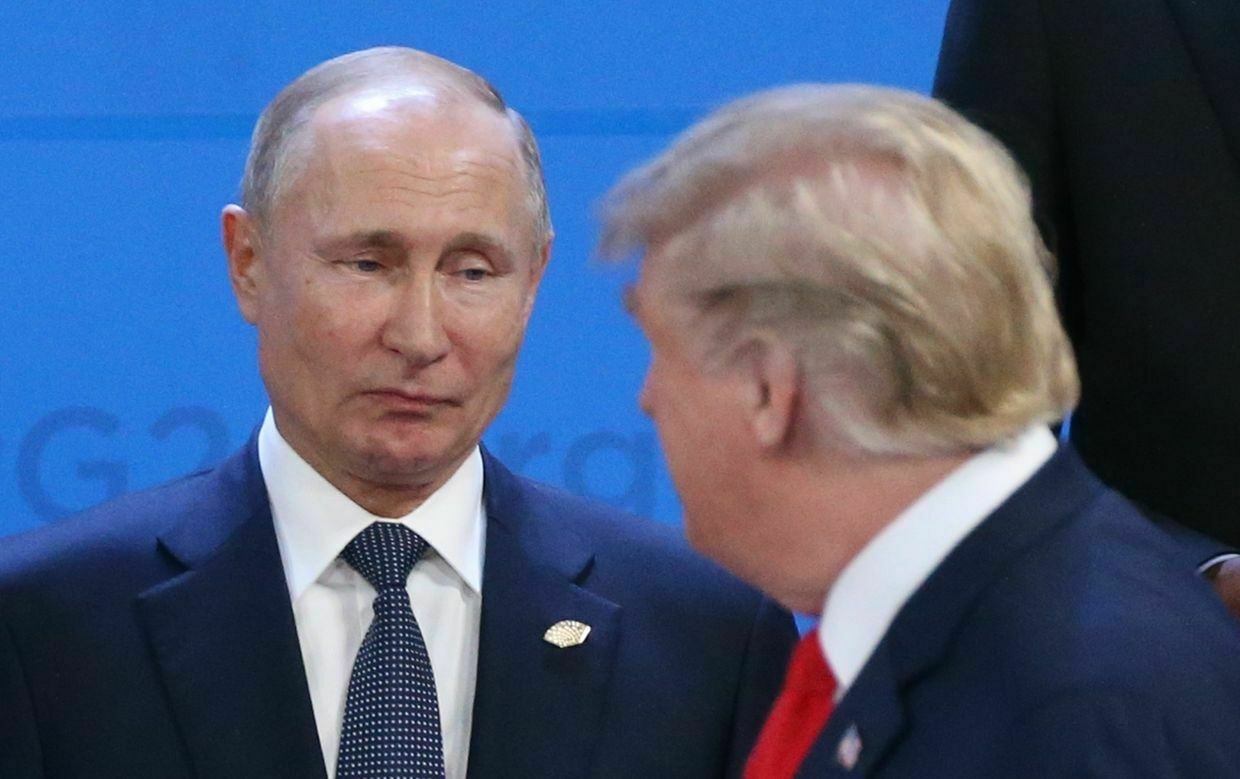
-
China's foreign minister tells EU that Beijing cannot afford Russia to lose in Ukraine, media reports
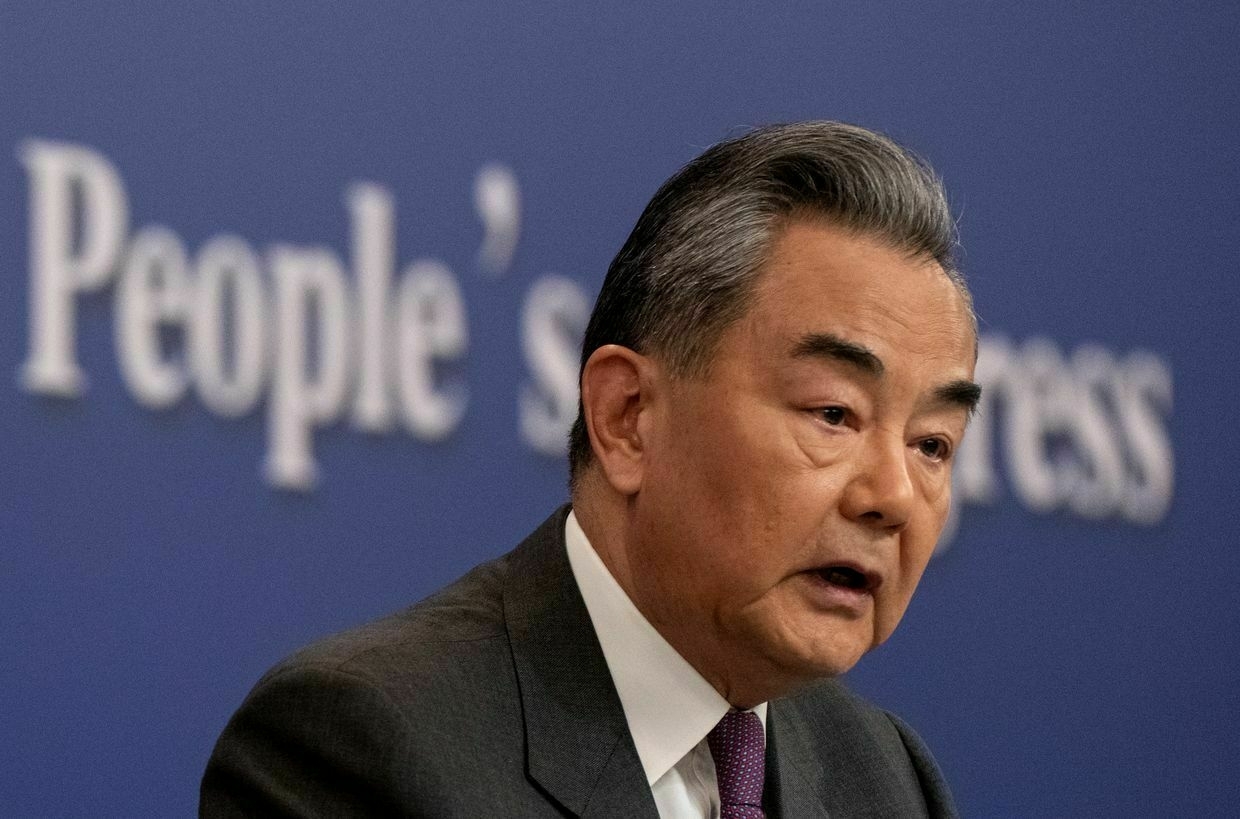
China’s Foreign Minister Wang Yi reportedly told the EU’s top diplomat Kaja Kallas on July 3 that the country cannot afford for Russia to lose the war in Ukraine amid fears the U.S. would shift focus towards Beijing, the South China Morning Post (SCMP) reported, citing sources familiar with the conversation.
As the war in Ukraine drags on, Wang’s reported comments suggest that Russia’s war in Ukraine may serve China’s strategic needs as focus is deviated away from Beijing’s mounting preparation to launch its own eventual invasion into Taiwan.
China has been a key ally to Russia during its full-scale war, helping Moscow evade Western sanctions and becoming the leading source of dual-use goods fueling the Russian defense industry.
U.S. President Donald Trump, who has not managed to broker a promised ceasefire between Moscow and Kyiv, has long viewed China as the United States' main adversary and is predominantly focused on relations between the two nations.
In June, Bloomberg reported Trump is pulling back from pressuring China over its support for Russia’s war effort, instead prioritizing other aspects of the U.S.-China relationship. The publication reported that the administration lowered the issue of Russia’s war against Ukraine on its list of foreign policy priorities and is focusing on bilateral issues with Beijing, though they noted Trump could still shift course.
The frankness of Wang’s reported admission was greeted with surprise by EU official, according to SCPM, amid China’s past public statements in favor of a peace deal.
Wang on July 3 again reportedly rejected Western accusations that it was providing funding and weaponry to support Moscow’s war effort in Ukraine. President Volodymyr Zelensky on May 29 said that China had stopped selling drones to Ukraine and Western countries while continuing to supply them to Russia.
Wang’s comments come amid waning support from Kyiv’s main military backer, the United States. On July 1, the U.S. Defense Department paused shipments of key weapons systems to Ukraine, including Patriot air defense missiles and precision-guided munitions.
As Russian-Chinese relations continue to grow, Russian President Vladimir Putin agreed to meet Chinese President Xi Jingping in September in China for the Shanghai Cooperation Organization summit.
Trump says he “didn’t make any progress” with Putin following phone callWhen asked if he had made any progress with Putin on the call, Trump responded: “No, I didn’t make any progress with him today at all.” The Kyiv IndependentDmytro Basmat
The Kyiv IndependentDmytro Basmat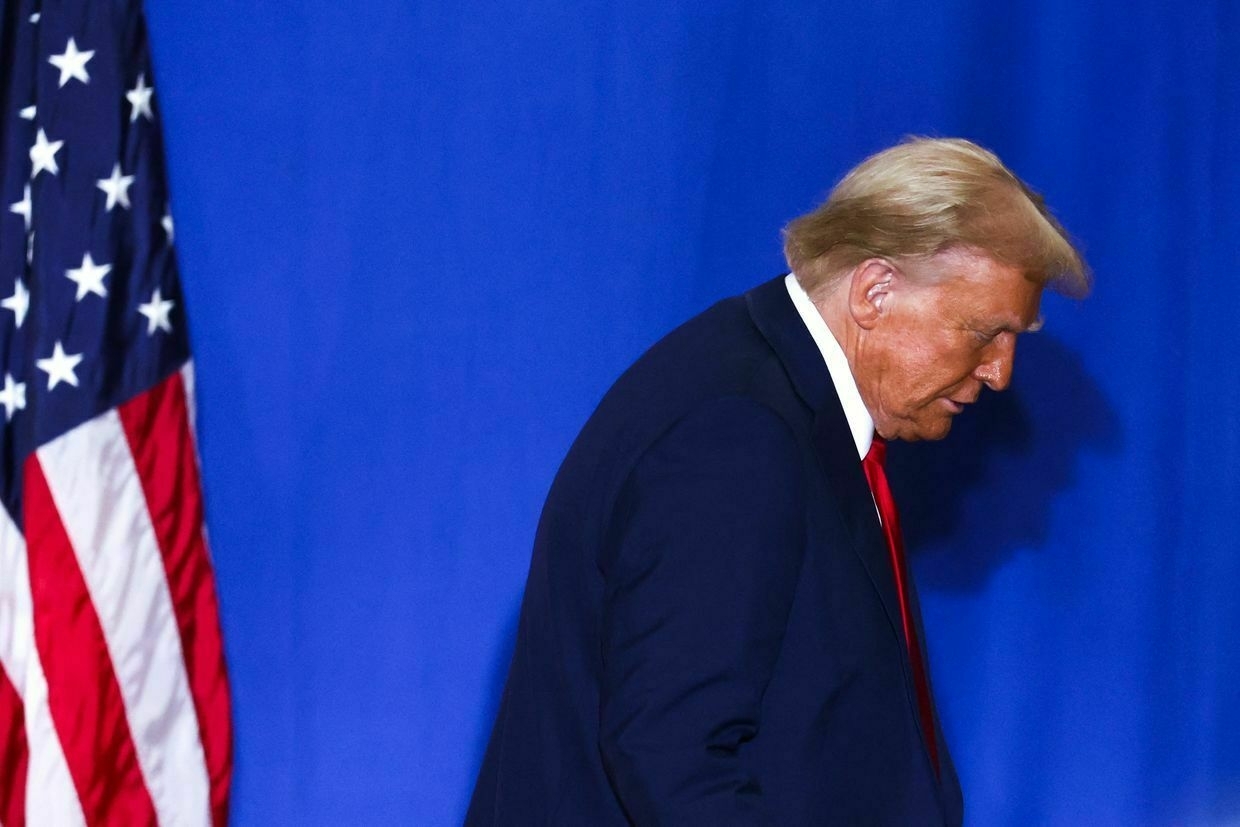
-
Trump says he "didn't make any progress" with Putin following phone call
<img src=“https://cdn.uploads.micro.blog/110176/2025/e4515f441d.jpg" alt=“Trump says he “didn’t make any progress” with Putin following phone call”>
U.S. President Donald Trump told reporters on July 3 that he “didn’t make any progress” on ending the war in Ukraine during his call with Russian President Vladimir Putin earlier in the day.
“We had a call. It was a pretty long call. We talked about a lot of things,” Trump said ahead of his flight to an Iowa event.
When asked if he had made any progress with Putin on the call, Trump responded: “No, I didn’t make any progress with him today at all."
The two leaders held an hour-long conversation early in the on July 3 focused on Russia’s war in Ukraine and the situation in the Middle East. The call marks the sixth conversation between the two men since Trump took office in January.
Kremlin aide Yury Ushakov told reporters earlier in the day that Putin said “Russia will continue to pursue its goals” in the war against Ukraine.
“Our president said that Russia will pursue its goals, specifically addressing the root causes that led to the current situation, and will not back down from these objectives,” Ushakov added.
The White House did not provide a read out of the meeting, and Trump did not provide further comment on the phone call.
Since taking office, Trump has attempted to broker a ceasefire between Ukraine and Russia to no avail. Despite two rounds of negotiations between Kyiv and Moscow, Putin has refused to implement a ceasefire, citing his maximalist demands.
While Trump has expressed frustration with Russia’s continued aggression, his administration has not imposed new sanctions nor taken steps to pressure the Kremlin directly.
Putin’s message came amid a surge of Russian drone and missile attacks across Ukraine that have killed and injured hundreds of civilians in recent weeks.
The strikes have destroyed numerous infrastructure as Russia intensifies its assault despite repeated calls from Kyiv, Washington, and European leaders for an unconditional ceasefire.
The phone call also came just a day after the U.S. Defense Department paused shipments of key weapons systems to Ukraine, including Patriot air defense missiles and precision-guided munitions. Ukraine’s Foreign Ministry has warned that the delay undermines defense efforts and risks emboldening Russia to escalate further.
President Volodymyr Zelensky, speaking from Denmark earlier in the day, said that achieving peace would require direct talks between national leaders.
The president described Trump and Putin as “completely different people” but emphasized that only Putin makes decisions in Russia.
“In Russia, only Putin makes decisions, which is why we need a meeting at the leadership level if we want to have peace,” Zelensky said.
Putin tells Trump Russia won’t back down from its war aims in UkraineThe hour-long conversation between the two presidents focused on Russia’s war in Ukraine and the situation in the Middle East, according to Kremlin aide Yury Ushakov.<img src=“https://cdn.uploads.micro.blog/110176/2025/6351a104b1.jpg" alt=“Trump says he “didn’t make any progress” with Putin following phone call” data-sanitized-class=“kg-bookmark-icon”>The Kyiv IndependentTim Zadorozhnyy<img src=“https://cdn.uploads.micro.blog/110176/2025/54880f3fc6.jpg" alt=“Trump says he “didn’t make any progress” with Putin following phone call”> -
Russia becomes first country to recognize Afghanistan's Taliban government
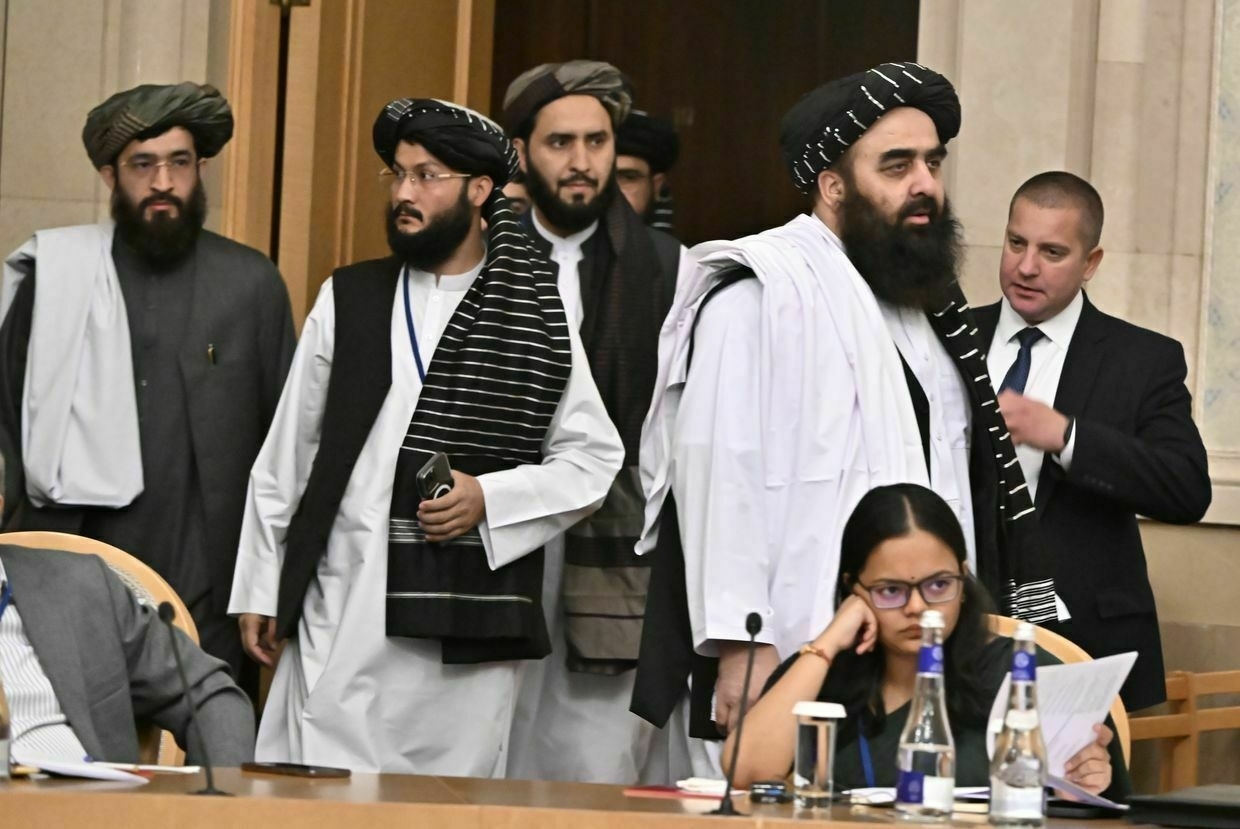
Russia became the first country to recognize the Taliban as the ruling government of Afghanistan on July 3, Russia’s Foreign Ministry announced.
“We believe that the act of official recognition of the government of the Islamic Emirate of Afghanistan will give impetus to the development of productive bilateral cooperation between our countries in various fields,” the Foreign Ministry said in a statement.
The Taliban, an Islamist militant group, seized control of Afghanistan in August 2021 following the withdrawal of U.S. and NATO forces, toppling the Western-backed government.
Despite its control over the country, the Taliban-led administration has not been formally recognized by any other state due to its failure to meet international commitments on human rights, governance, and counter-terrorism.
Russian state media outlet TASS reported that Russian President Vladimir Putin made the final decision based on advice from Foreign Minister Sergey Lavrov.
As relations with Western governments fell apart following Moscow’s full-scale invasion of Ukraine in February 2022, the Kremlin has increasingly looked to work closely with totalitarian regimes, including North Korea and Iran, to advance economic and military partnerships.
In recent years, Moscow has expanded engagement with the Taliban, deepening trade ties and investing in Afghan infrastructure. The Taliban also regularly participates in Russian economic and educational forums.
In recent months, Russia’s Supreme Court ruled to suspend the ban on dealings with the Taliban, and Russia’s State Duma passed legislation in December 2024 allowing the possibility of removing organizations from the list of banned terrorist groups.
Putin has previously referred to the Taliban as “allies,” while Foreign Minister Sergey Lavrov has called them “sane people."
The Taliban, however, continues to enforce strict Islamic law, banning women from education, restricting social interactions, and carrying out the public stoning of women to death.
Ukraine war latest: Putin tells Trump Russia won’t back down from its war aims in UkraineKey developments on July 3: * Putin tells Trump Russia won’t back down from its war aims in Ukraine * Deputy commander of Russian Navy killed in Ukrainian strike in Kursk, Russian official confirms * Ukraine signs major drone co-production deal with US Swift Beat, Zelensky announces * Russia targets Ukrainian conscription offices to disrupt mobilization, military spokesperson says after Poltava attack * ‘One of Russia’s most critical targets’ — Ukraine confirms strike on missile battery pl The Kyiv IndependentThe Kyiv Independent news desk
The Kyiv IndependentThe Kyiv Independent news desk
-
Ukraine war latest: Putin tells Trump Russia won't back down from its war aims in Ukraine
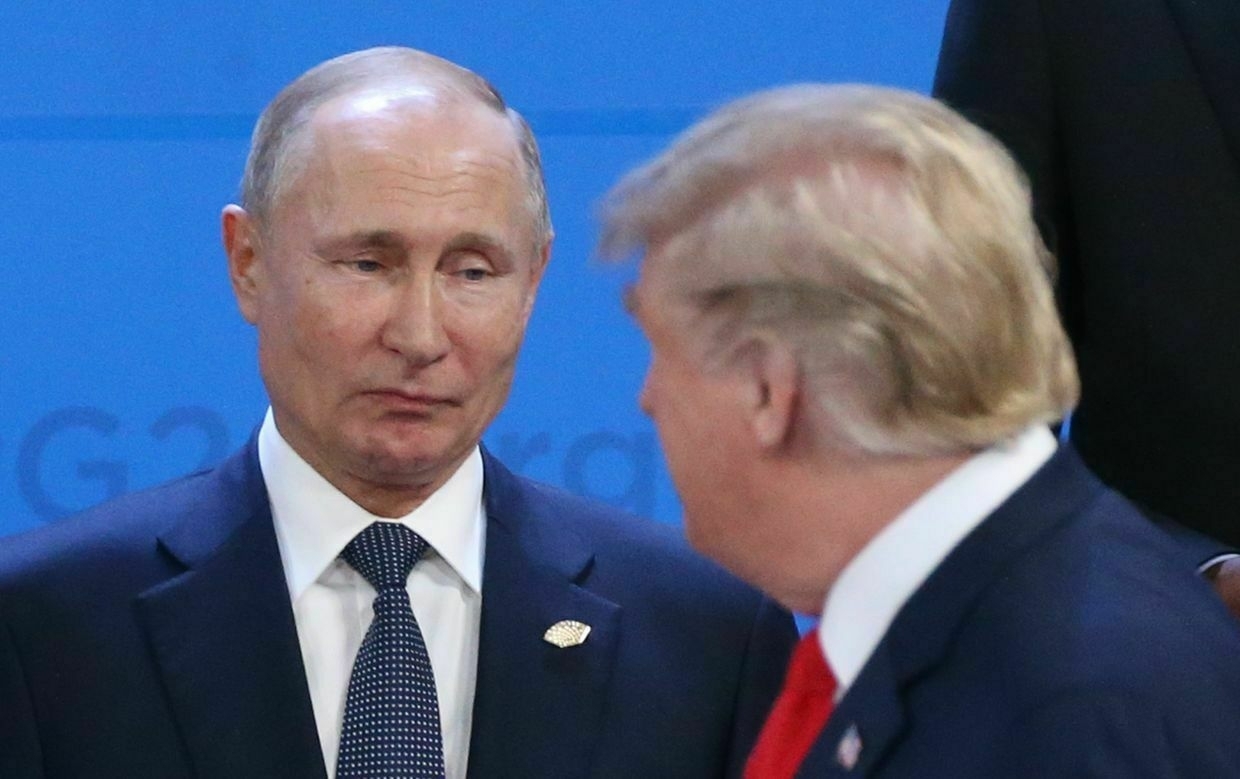
Key developments on July 3:
- Putin tells Trump Russia won’t back down from its war aims in Ukraine
- Deputy commander of Russian Navy killed in Ukrainian strike in Kursk, Russian official confirms
- Ukraine signs major drone co-production deal with US Swift Beat, Zelensky announces
- Russia targets Ukrainian conscription offices to disrupt mobilization, military spokesperson says after Poltava attack
- ‘One of Russia’s most critical targets’ — Ukraine confirms strike on missile battery plant in Lipetsk
During a phone call with U.S. President Donald Trump on July 3, Russian President Vladimir Putin said “Russia will continue to pursue its goals” in the war against Ukraine, Kremlin aide Yury Ushakov said.
The hour-long conversation between the two presidents focused on Russia’s war in Ukraine and the situation in the Middle East, according to Ushakov.
“Trump once again emphasized the need to end military hostilities as soon as possible. Vladimir Putin noted that Russia continues to seek a political negotiated solution to the conflict,” Ushakov said.
“Our president said that Russia will pursue its goals, specifically addressing the root causes that led to the current situation, and will not back down from these objectives."
The Kremlin aide added that the two leaders discussed cultural diplomacy, specifically the exchange of films promoting what Ushakov described as “traditional values close to Russia and the U.S. presidential administration."
Putin’s message came amid a surge of Russian drone and missile attacks across Ukraine that have killed and injured hundreds of civilians in recent weeks.
The strikes have destroyed numerous infrastructure as Russia intensifies its assault despite repeated calls from Kyiv, Washington, and European leaders for an unconditional ceasefire.
The phone call also came just a day after the U.S. Defense Department paused shipments of key weapons systems to Ukraine, including Patriot air defense missiles and precision-guided munitions. Ukraine’s Foreign Ministry has warned that the delay undermines defense efforts and risks emboldening Russia to escalate further.
President Volodymyr Zelensky, speaking from Denmark earlier in the day, said that achieving peace would require direct talks between national leaders.
The president described Trump and Putin as “completely different people” but emphasized that only Putin makes decisions in Russia.
“In Russia, only Putin makes decisions, which is why we need a meeting at the leadership level if we want to have peace,” Zelensky said.
According to Ushakov, the presidents did not discuss the possibility of a meeting, but “the idea is in the air,” and they agreed to continue communication.
Moscow and Kyiv have held two rounds of face-to-face talks in Istanbul this year, first on May 16 and again on June 2, following more than three years with no direct negotiations.
The meetings resulted in several prisoner exchanges, but no steps toward a ceasefire.
While Trump has expressed frustration with Russia’s continued aggression, his administration has not imposed new sanctions nor taken steps to pressure the Kremlin directly.
Ukraine scrambles to clarify extent of U.S. military aid pause and ‘whether everything will continue’When the U.S. Department of Defense (DOD) halted the transfer of critical air defense missiles and other weapons to Ukraine, Kyiv and its partners were caught off-guard and are now left scrambling for clarity on the scope and length of the Trump administration’s decision. The White House confirmed the halt after a July 1 report by Politico said shipments were paused due to concerns over the size of domestic stockpiles. The decision “was made to put America’s interests first following a DOD rev The Kyiv IndependentAndrea Januta
The Kyiv IndependentAndrea Januta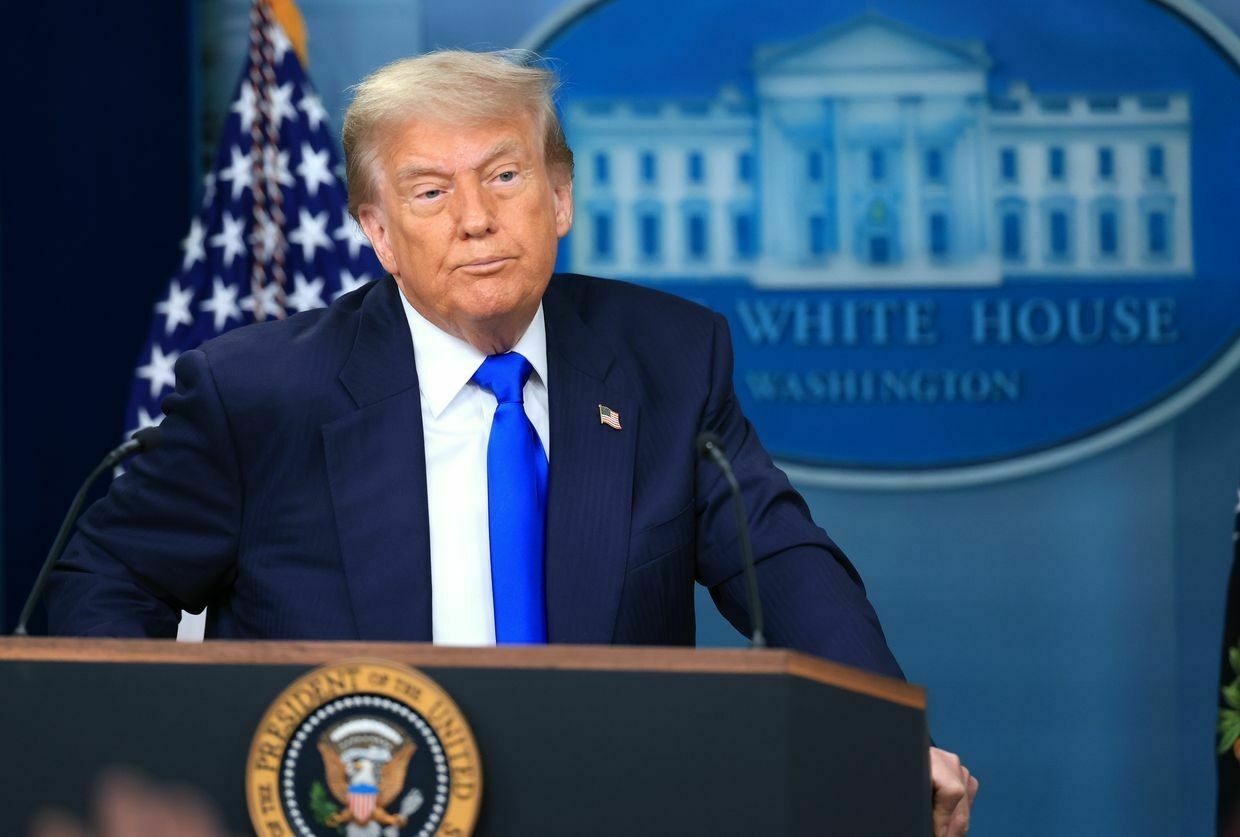
Deputy commander of Russian Navy killed in Ukrainian strike in Kursk, Russian official confirmsA deputy commander of Russia’s navy has been killed in a Ukrainian strike in Kursk Oblast, a Russian official confirmed on July 3.
Major General Mikhail Gudkov was killed alongside his deputy and several other Russian soldiers, Oleg Kozhemyako, governor of Russia’s Primorsky Krai, said in a post on social media.
According to Russian milbloggers, 22 people in total were killed as a result of a Ukrainian HIMARS strike in Russia’s Kursk Oblast bordering Ukraine. Kyiv has yet to comment on the attack.
Gudkov was appointed deputy commander of the Russian Navy in March 2025. Prior to that, he led the 155th Separate Marine Brigade, which was involved in combat operations against Ukraine.
Ukraine has accused the 155th Separate Marine Brigade of committing numerous war crimes. According to the country’s Air Assault Forces, members of the brigade are responsible for executing prisoners of war and humiliating captured Ukrainian soldiers.
Gudkov held the titles of Hero of Russia and Hero of Primorye, Russia’s far eastern region where he previously served, Kozhemyako said.
HIMARS, whose prowess became a popular motif of internet memes, was a game-changer for Ukraine when it first arrived in the summer of 2022.
Initially supplied with GMLRS rockets with a range of around 70 kilometers, they allowed Ukraine to target Russian forces on the other side of the front line far more accurately than they had previously.
In the fall of 2023, the U.S. began supplying Kyiv with an older model of ATACMS – fired from HIMARS launchers – with a range of around 165 kilometers, greatly increasing the range that Ukraine could strike within.
Russia’s high-ranking military officials have been killed on a regular basis throughout the full-scale invasion — a recent report from BBC Russia identified ten generals 10 generals and 524 lieutenant colonels and colonels.
Ukrainian forces launched a cross-border incursion into Russia’s Kursk Oblast in August 2024, making it the first large-scale invasion of Russian territory by foreign troops since World War II. The move was intended to disrupt a planned Russian offensive targeting Ukraine’s Sumy Oblast and to relieve pressure on the Donetsk front.
Since then, Ukraine claims it has inflicted 63,402 Russian troop casualties in the oblast, including 25,625 killed and 971 captured. Ukrainian forces also say they have destroyed or damaged over 5,664 pieces of Russian military equipment in the area.
Russia retook most of the lost territory during a renewed offensive in March 2025, supported by North Korean troops.
Former Russian proxy mayor reportedly killed in explosion in occupied LuhanskManolis Pilavov had been wanted in Ukraine since 2015 on charges including attempting to violently overthrow the constitutional order and violating Ukraine’s territorial integrity. The Kyiv IndependentTim Zadorozhnyy
The Kyiv IndependentTim Zadorozhnyy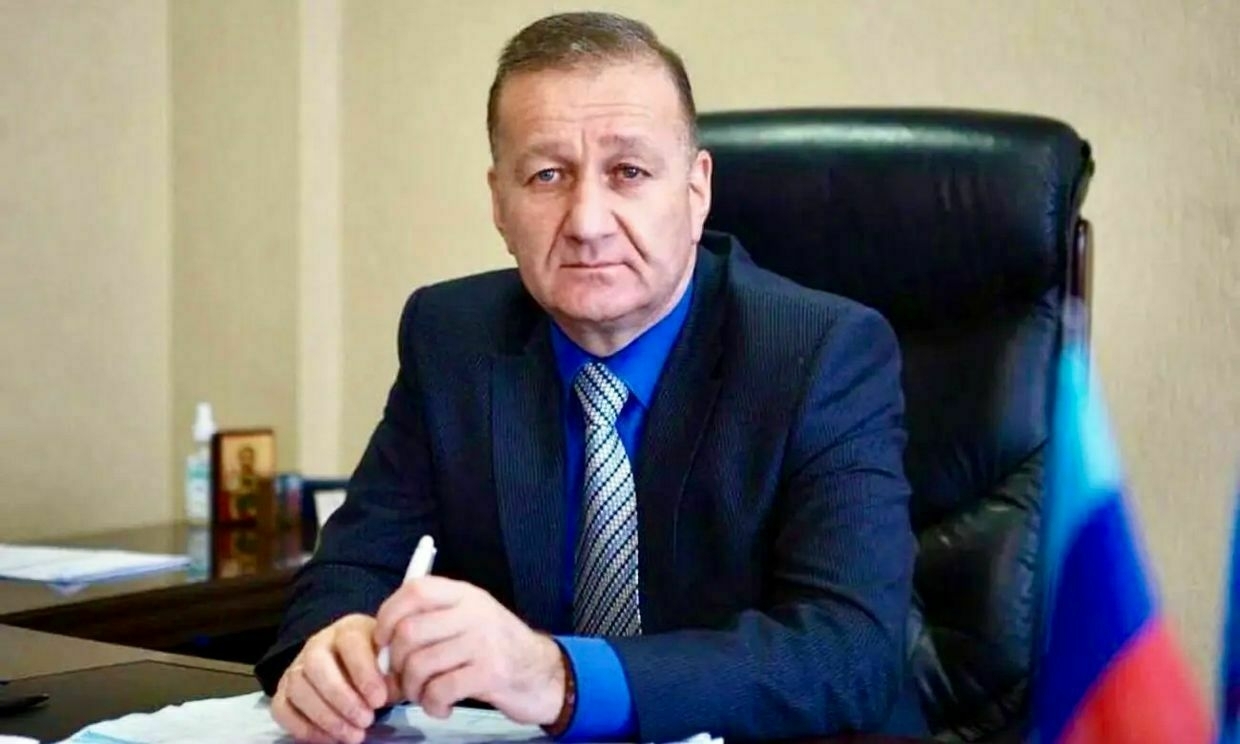
Ukraine signs major drone co-production deal with US Swift Beat, Zelensky announcesUkraine signed a major deal with U.S. company Swift Beat to co-produce hundreds of thousands of drones this year, President Volodymyr Zelensky announced on July 3 during his visit to Denmark.
The long-term strategic partnership agreement was signed by Ukraine’s Defense Minister Rustem Umerov and Eric Schmidt, the CEO of Swift Beat, in Denmark on the same day.
Under the deal, the company will produce various kinds of unmanned aerial vehicles for Ukraine, including those designed to intercept Russian drones and missiles, reconnaissance, attack, and other drones, Zelensky said in a statement published on the website of the President’s Office.
“The key priority is interceptor drones that have already proven effective in Ukraine,” Zelensky said. “We’ve tested models from several companies, and now we’re signing serious contracts."
Swift Beat will increase its production capacity, aiming to produce hundreds of thousands of drones for Ukraine this year, with plans to scale up production in 2026, according to Zelensky.
“Modern drones will be supplied to Ukraine as a priority, on special terms and at cost,” Zelensky said.
The announcement comes just a day after the U.S. Defense Department (DOD) halted shipments of some air defense missiles and other weapons previously promised to Kyiv. Ukraine has been trying to negotiate buying U.S. weapons for months after U.S. President Donald Trump, who has opposed military aid to Kyiv, took office in January.
Swift Beat has a significant presence in Ukraine, according to Zelensky’s office. It specializes in autonomous AI-powered drones and cooperates with Ukrainian engineers and the military, conducting drone testing on Ukrainian territory, the statement reads.
Zelensky arrived in Denmark on July 3 to mark the country’s assumption of the rotating presidency of the Council of the European Union.
Zelensky also said that during his visit, he plans to raise the issue of political blockages hindering Ukraine’s path to joining the European Union.
“We’re ready to open three accession clusters and want to start with one now, in the very near future. But political blockages remain, purely political,” he said.
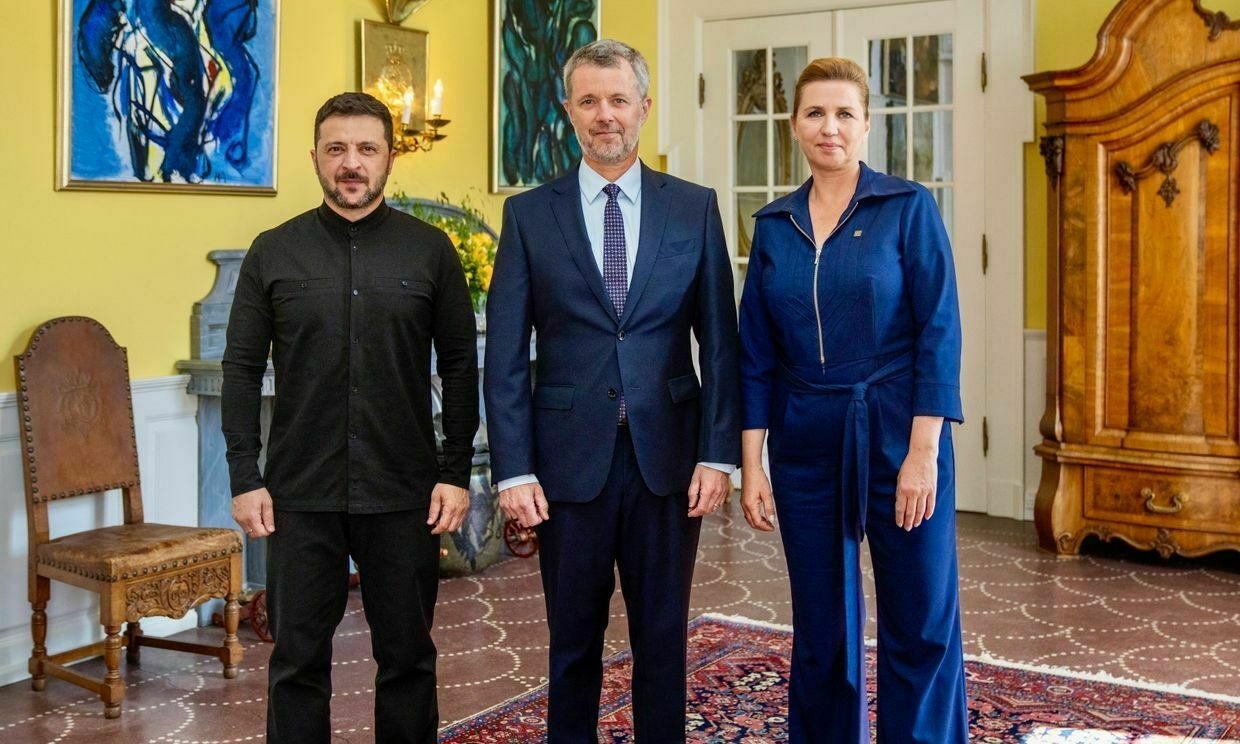
Denmark’s King Frederik (C), President Volodymyr Zelensky (L), and Denmark’s Prime Minister Mette Frederiksen (R) in Aarhus, Denmark, on July 3, 2025. (Ida Marie Odgaard / Ritzau Scanpix / AFP) While EU member states agreed to take into account the European Commission’s assessment that Ukraine is ready to open the first, Fundamentals cluster, the process remains stalled due to Hungary’s refusal to grant unanimous support.
Ukraine applied for EU membership in 2022 and was granted candidate status shortly thereafter, but full negotiations require the approval of all 27 EU member states.
Denmark has been a key backer of Ukraine since the start of Russia’s full-scale invasion in 2022. In February 2024, Copenhagen signed a 10-year bilateral security agreement with Kyiv, pledging long-term defense cooperation until Ukraine secures NATO membership.
Zelensky said he expects Denmark to expand its financial support for Ukraine’s drone and missile production initiatives.
“What we’ve just signed requires significant funding. I’m counting on our relationship with Denmark,” the president said.
The Ukrainian president will also participate in official events commemorating Denmark’s presidency of the Council. According to Danish broadcaster DR, the events will be attended by Denmark’s royal family, government officials, and EU leaders.
Ukrainian Air Force officer acting as ‘FSB mole’ arrested, SBU saysThe alleged spy, arrested during a special operation in Lviv Oblast, was reportedly recruited through his ex-wife, a former military officer now cooperating with Russian forces in occupied Melitopol. The Kyiv IndependentAnna Fratsyvir
The Kyiv IndependentAnna Fratsyvir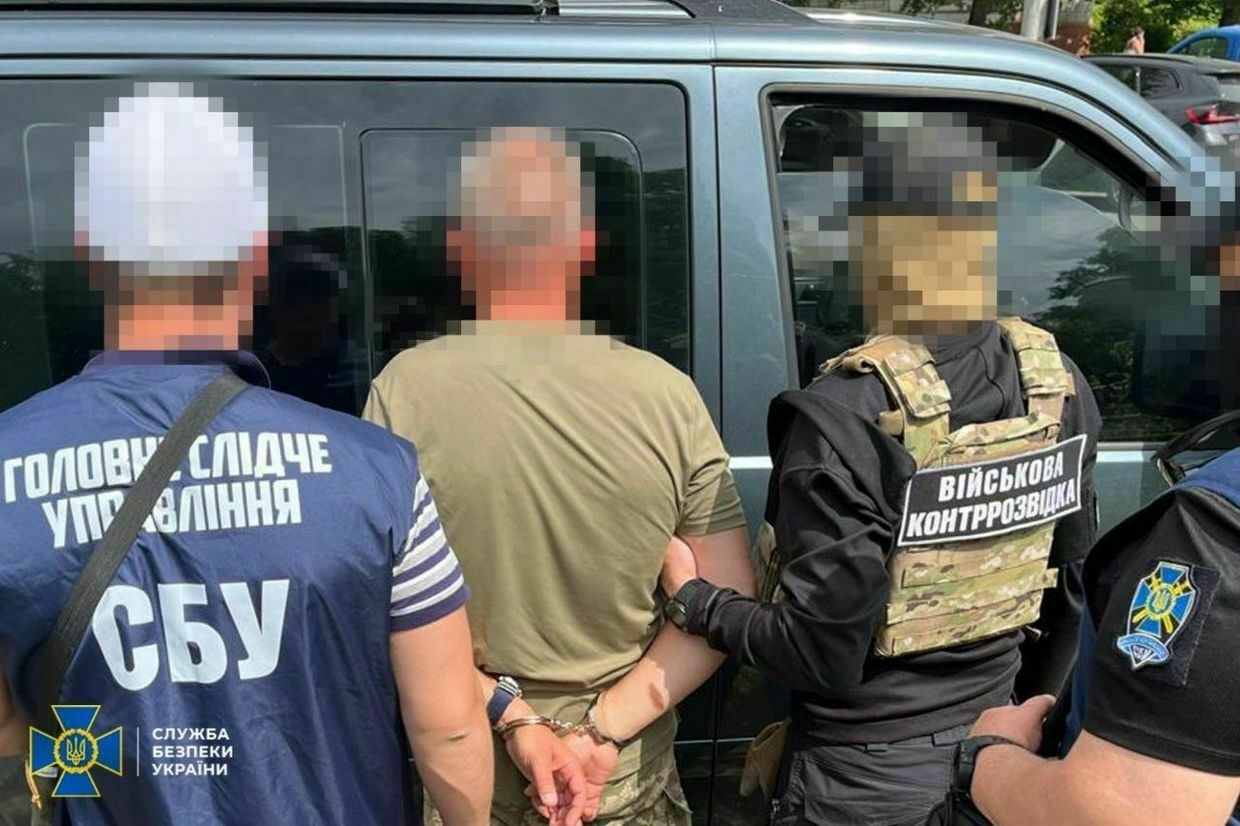
Russia targets Ukrainian conscription offices to disrupt mobilization, military spokesperson says after Poltava attackA Russian strike on Poltava, central Ukraine, killed two people and injured 47 others on the morning of July 3, local and military officials said.
The attack, which occurred around 9 a.m. local time, sparked fires and damaged civilian infrastructure, according to Governor Volodymyr Kohut and Ukraine’s Ground Forces.
The State Emergency Service reported that 84 emergency workers, including psychologists, pyrotechnicians, and medics, were deployed at the site of the attacks. Firefighters extinguished the fires, cleared the rubble, and rescued 10 people from the damaged buildings.
According to the statement of Ukraine’s Ground Forces, one of the strikes caused a fire at the Poltava conscription office, a local military facility. A separate strike near the Poltava conscription office set fire to a private residential property, authorities said.
Speaking on national television, Ukraine’s Ground Forces spokesperson Vitalii Sarantsev said that Russia was deliberately targeting conscription offices to disrupt Ukraine’s mobilization efforts.
“We will continue to strengthen our army, train our troops, and involve more people in defense to deliver a strong response to the enemy,” Sarantsev said.
This wasn’t the first time Russia has been linked to such attacks. Back in February, Moscow recruited the man who carried out a deadly bombing at a military enlistment office in the city of Rivne in northwestern Ukraine.
‘Major casualties among civilians’ — US freeze on air defense missiles is terrible news for UkraineThe halting of deliveries of air defense missiles from the U.S. will lead to“major casualties among civilians,” a deputy commander in Ukraine’s air defense told the Kyiv Independent. Politico reported on July 1 that the U.S. Defense Department (DOD) had halted shipments of some weapons previouslyThe Kyiv IndependentKollen Post
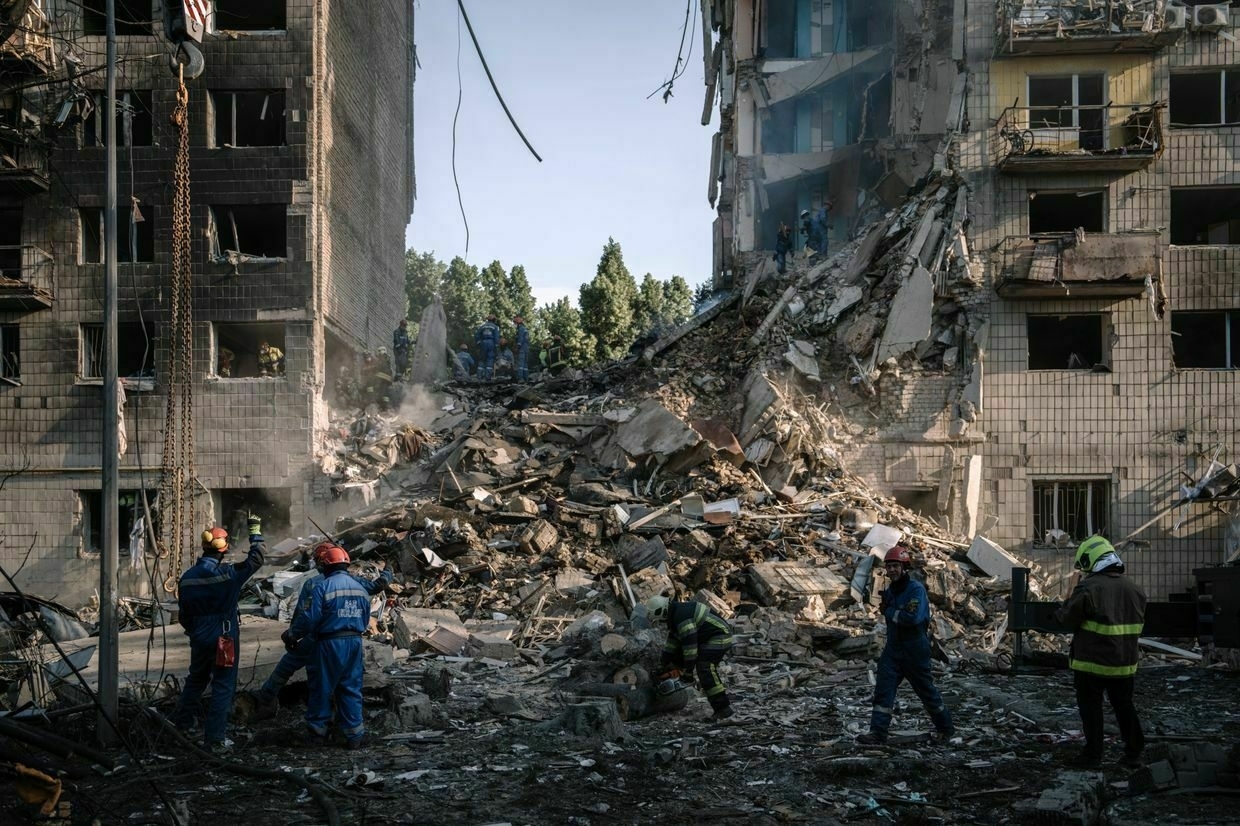
‘One of Russia’s most critical targets’ — Ukraine confirms strike on missile battery plant in LipetskUkraine confirmed strikes on the Energia factory in Russia’s Lipetsk Oblast overnight on July 3, a facility that produces components for missiles and drones, including batteries for the Iskander missile system and cruise missiles.
The attack on the Energia plant in the city of Yelets was first reported by Lipetsk Governor Igor Artamonov. Artamonov said a fire broke out near the facility after a drone strike, and residents reported multiple explosions.
Employees in nearby workshops were evacuated. No casualties have been reported. Residents of Yelets were reporting multiple explosions, according to the Russian Telegram news channel Astra.
Andrii Kovalenko, head of the Counter-Disinformation Center at Ukraine’s National Security and Defense Council, confirmed the strike, calling Energia “one of the most critical targets for Russia.” According to Kovalenko, the facility manufactures batteries for missile guidance and glider modules, including for the Iskander system and cruise missiles.
Ukraine’s General Staff later on July 3 released an official statement confirming the strike, saying the attack was carried out by the Ukrainian Armed Forces' Unmanned Systems Forces in coordination with other defense elements.
The General Staff also stated that explosions were recorded on the factory grounds and that production had been halted. “The Defense Forces continue to take measures to undermine the military and economic potential of the Russian (troops) and force Russia to stop its armed aggression against Ukraine,” the statement said.
The results of the fire damage are still being clarified, according to the military.
The Energia plant produces parts for ballistic and cruise missiles, as well as batteries for drones and glide bombs. The factory was previously targeted multiple times this past May.
The city of Yelets lies some 250 kilometers (150 miles) north of the Russia-Ukraine border.
Artamonov also claimed that drones caused damage to other areas in the region. Wreckage from an intercepted drone allegedly crashed onto a residential building, killing a woman and injuring two other people.
Explosions were also reported overnight in the Russian-occupied city of Khartsyzk in Ukraine’s Donetsk Oblast, with Russian Telegram channels citing eyewitnesses who claim a missile may have struck a Russian ammunition depot.
Several rounds of secondary detonations followed the initial blast, according to the reports.
The Kyiv Independent could not verify these claims.
Russia’s Defense Ministry claimed that its air defenses shot down a total of 69 Ukrainian drones overnight. The ministry said 27 drones were intercepted over Belgorod Oblast, 22 over Voronezh Oblast, 10 over Lipetsk Oblast, eight over Kursk Oblast, and two over Russian-occupied Crimea.
Ukraine regularly strikes military targets deep within Russian territory in an effort to diminish Moscow’s fighting power.
Note from the author:
Ukraine War Latest is put together by the Kyiv Independent news desk team, who keep you informed 24 hours a day, seven days a week. If you value our work and want to ensure we have the resources to continue, join the Kyiv Independent community.
-
Kyiv under attack as Russia launches waves of drones on Ukraine
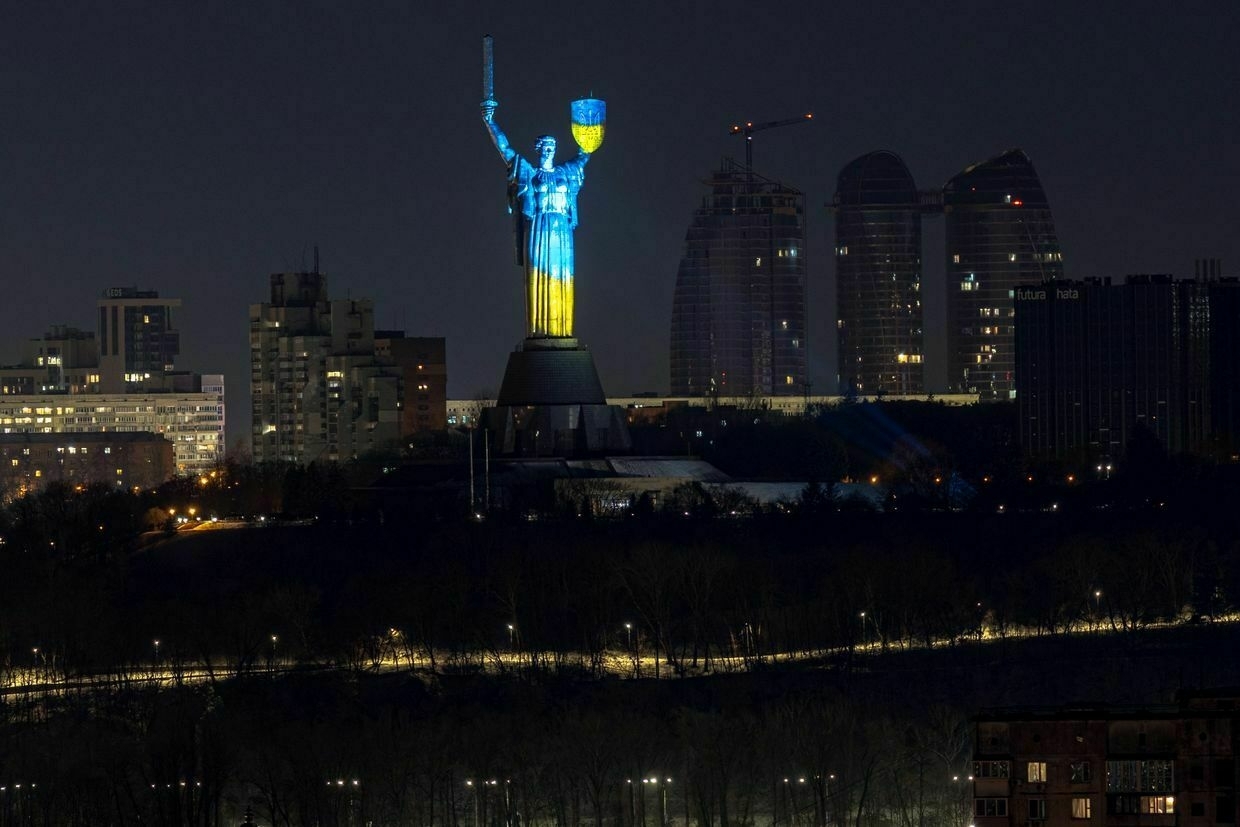
Editor’s note: This is a developing story and is being updated.
Explosions were heard in Kyiv on July 3 as Russia launched a wave of drones across Ukraine.
Tymur Tkachenko, head of the Kyiv City Military Administration, confirmed that one drone was shot down over the capital. Debris from the drone landed in an open area of the city’s Solomianskyi district. Preliminary reports indicate no casualties.
“Stay in shelters,” Tkachenko wrote on Telegram, urging residents to remain cautious.
The Kyiv Independent journalists on the ground reported hearing explosions in the capital. Ukraine’s Air Force said drones were active in eastern Kyiv Oblast at the time of the attack.
The drone assault comes hours after a phone call between Russian President Vladimir Putin and U.S. President Donald Trump, during which the Kremlin said Putin reaffirmed that “Russia will continue to pursue its goals” in Ukraine despite calls for a ceasefire from the West.
Kyiv and other major Ukrainian cities have faced intensified drone and missile strikes in recent weeks, with Russia deploying Iranian-designed Shahed drones in record numbers.
Ukrainian officials have warned that continued attacks are aimed at wearing down air defense systems and terrorizing civilians.
Ukraine scrambles to clarify extent of U.S. military aid pause and ‘whether everything will continue’When the U.S. Department of Defense (DOD) halted the transfer of critical air defense missiles and other weapons to Ukraine, Kyiv and its partners were caught off-guard and are now left scrambling for clarity on the scope and length of the Trump administration’s decision. The White House confirmed the halt after a July 1 report by Politico said shipments were paused due to concerns over the size of domestic stockpiles. The decision “was made to put America’s interests first following a DOD rev The Kyiv IndependentAndrea Januta
The Kyiv IndependentAndrea Januta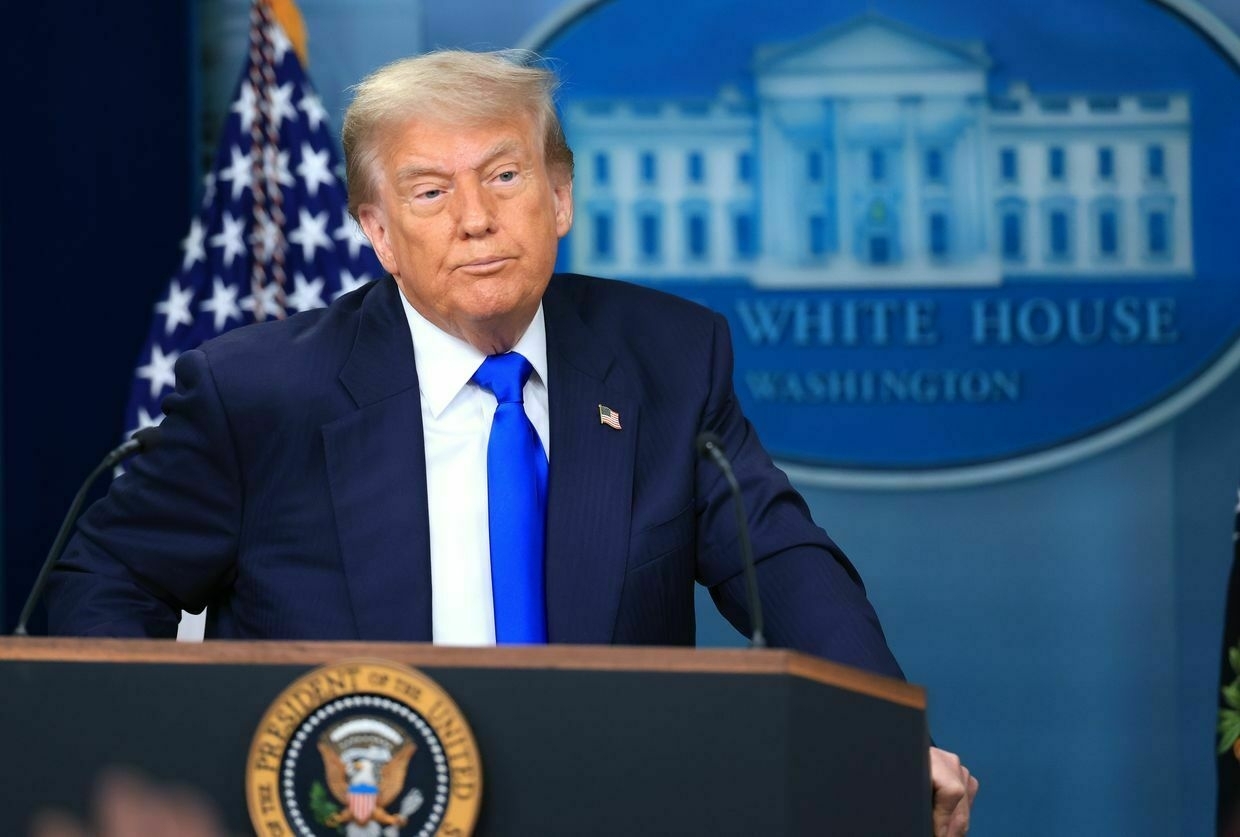
-
In landmark ruling, same-sex couple recognized as family by Ukrainian court
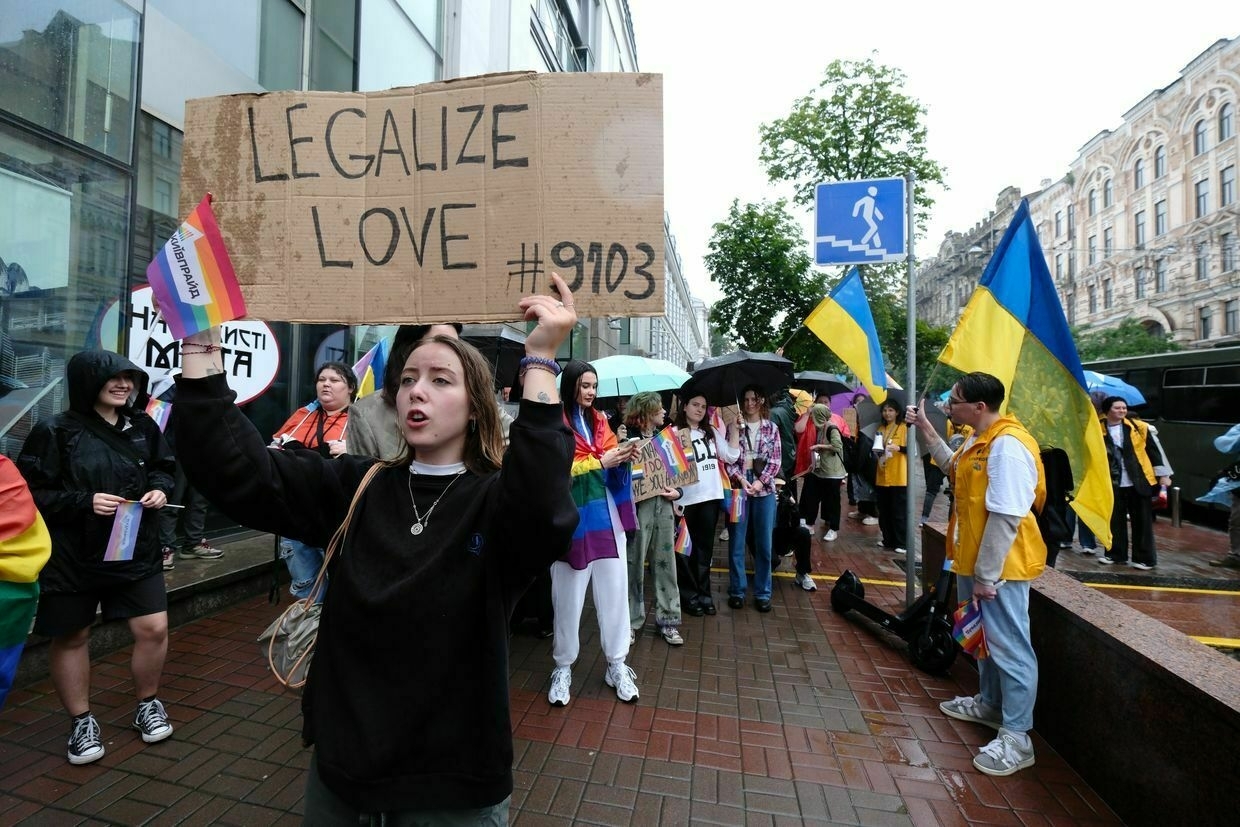
Kyiv’s Desniansky District Court has formally recognized a same-sex couple as a family, marking the first legal precedent of its kind in Ukraine, human rights organization Insight LGBTQ announced on July 3.
Ukraine does not currently recognize same-sex marriages or partnerships, and this court ruling may serve as a critical legal milestone in expanding rights for LGBTQ families.
The case involves Zoryan Kis, first secretary of Ukraine’s Embassy in Israel, and his partner Tymur Levchuk, who have lived together since 2013 and were married in the U.S. in 2021.
The court ruled on June 10 that their relationship constitutes a de facto marriage, establishing them as a family under Ukrainian law.
The ruling comes after Ukraine’s Foreign Ministry refused to acknowledge Levchuk as Kis' family member, denying him spousal rights to accompany Kis on his diplomatic posting to Israel. In response, the couple filed a legal complaint in September 2024.
In its decision, the court cited both the Ukrainian Constitution and precedents from the European Court of Human Rights (ECHR), which requires states to ensure legal recognition and protection for same-sex families.
Evidence considered by the court included shared finances, property, witness testimony, joint travel records, photographs, correspondence, and other documents establishing a long-term domestic partnership.
"A very big and important step toward marriage equality in Ukraine, and a small victory in our struggle for 'simple family happiness' for Ukrainian diplomats," Kis wrote on Facebook.
"Now we have a court ruling that confirms the feelings Tymur Levchuk and I have for each other," he added, thanking the judge who heard the case.
Public support for LGBTQ rights in Ukraine has grown in recent years, particularly since the start of Russia's full-scale invasion. According to a 2024 poll by the Kyiv International Institute of Sociology, 70% of Ukrainians believe LGBTQ citizens should have equal rights.
Despite shifting public opinion, legislative progress remains slow. A draft law recognizing civil partnerships, introduced by Holos party lawmaker Inna Sovsun in March 2023, has not advanced in parliament due to a lack of approval from the Legal Policy Committee.
The proposed bill would legalize civil partnerships for both same-sex and heterosexual couples, offering them inheritance, medical, and property rights, but not the full status of marriage.
As Trump ‘loses interest’ in Ukraine, Kyiv scrambles to clarify extent of U.S. military aid pauseWhen the U.S. Department of Defense (DOD) halted the transfer of critical air defense missiles and other weapons to Ukraine, Kyiv and its partners were caught off-guard and are now left scrambling for clarity on the scope and length of the Trump administration’s decision. The White House confirmed the halt after a July 1 report by Politico said shipments were paused due to concerns over the size of domestic stockpiles. The decision “was made to put America’s interests first following a DOD rev The Kyiv IndependentAndrea Januta
The Kyiv IndependentAndrea Januta
-
Ukrainian bank wins $1.5 billion appeal against Russia over lost Crimea assets
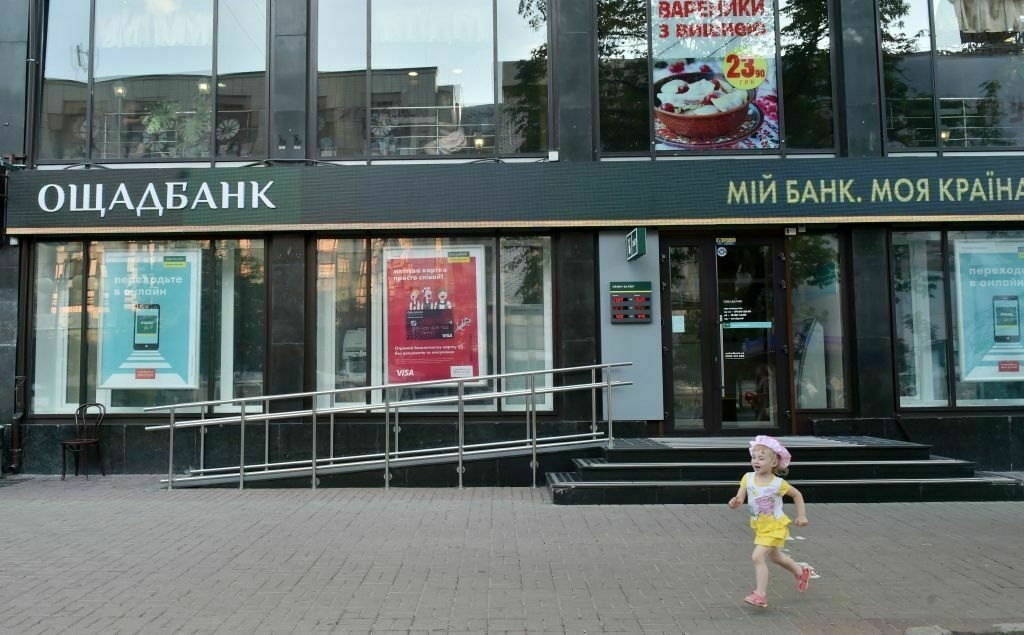
Ukraine’s Oschadbank won an appeal against Russia on July 1 after the Paris appeals court rejected Moscow’s challenge to a 2018 arbitration ruling ordering compensation for losses due to Russia’s annexation of Crimea, the bank announced in a press release on July 3.
The Paris Court of Appeal upheld the November 2018 arbitration tribunal decision requiring Russia to compensate Oschadbank for damages incurred when Moscow annexed the Ukrainian peninsula in 2014.
The ruling orders Russia to pay more than $1.5 billion in damages and an additional 300,000 euros ($330,000) in legal costs to Ukraine’s largest state-owned bank, according to a press release.
“The victory proves that efforts to force the aggressor state to answer legally for damages caused by the occupation of part of Ukraine’s territory have good prospects,” said Rosa Tapanova, a member of Oschadbank’s supervisory board.
Oschadbank Chairman Serhii Naumov said it’s the first Ukrainian bank to win such a case against Russia.
The decision follows Oschadbank’s recent seizure of over 87 million euros ($102 million) in Russian assets in France as part of its campaign to recover war-related losses. The bank has been pursuing Russian assets across multiple jurisdictions to enforce the arbitration award.
“We understand that the Russian Federation will never voluntarily comply with the court’s decision, and we are prepared for a long struggle,” said Arsen Miliutin, deputy chairman of Oschadbank’s management board.
“At the same time, we are confident that we will win, and Russia will pay not only the amount of damages caused, but also interest for all this time."
The Oschadbank victory adds to a growing list of Ukrainian legal wins against Russia. On June 23, Naftogaz CEO Serhii Koretskyi announced that an international arbitration tribunal in Switzerland had ordered Russia’s Gazprom to pay the Ukrainian state energy company $1.37 billion after the Russian firm stopped fulfilling contract obligations in May 2022.
As Trump ‘loses interest’ in Ukraine, Kyiv scrambles to clarify extent of U.S. military aid pauseWhen the U.S. Department of Defense (DOD) halted the transfer of critical air defense missiles and other weapons to Ukraine, Kyiv and its partners were caught off-guard and are now left scrambling for clarity on the scope and length of the Trump administration’s decision. The White House confirmed the halt after a July 1 report by Politico said shipments were paused due to concerns over the size of domestic stockpiles. The decision “was made to put America’s interests first following a DOD rev The Kyiv IndependentAndrea Januta
The Kyiv IndependentAndrea Januta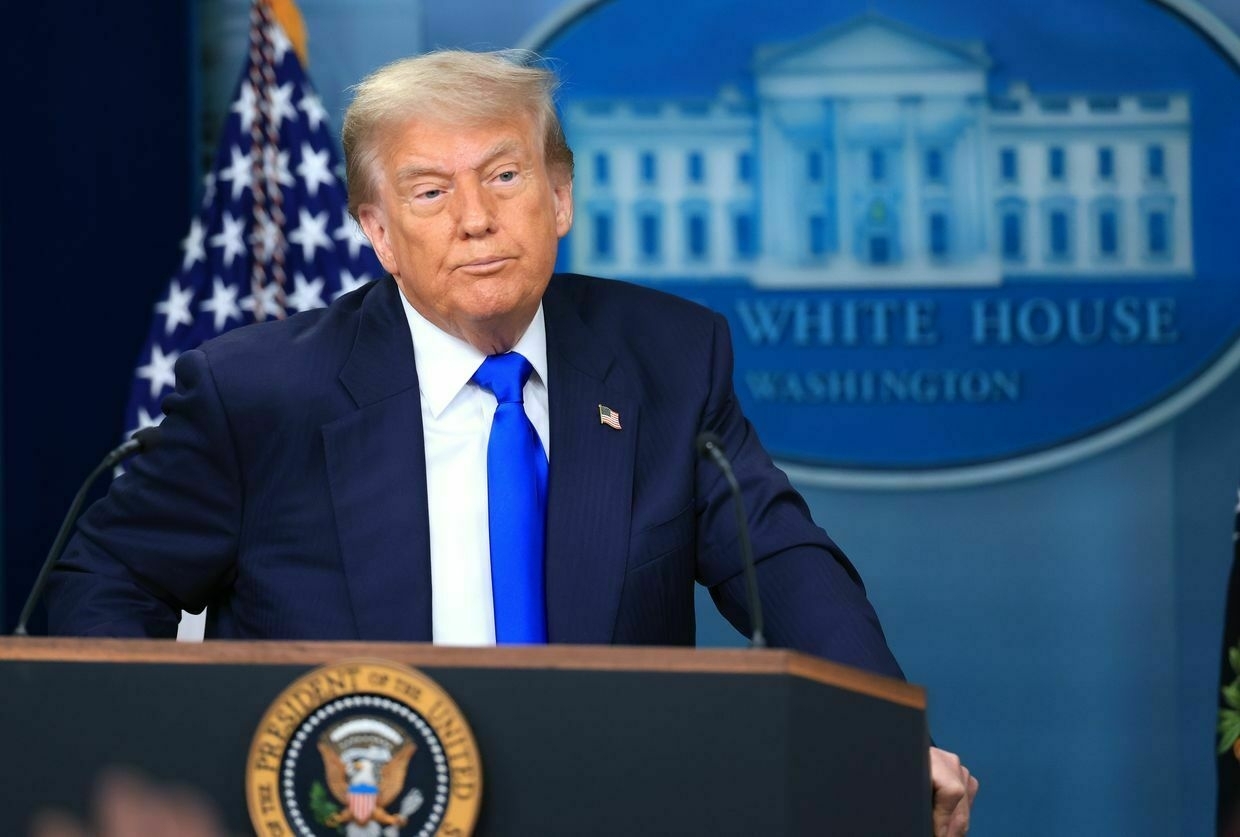
-
Putin tells Trump Russia won't back down from its war aims in Ukraine
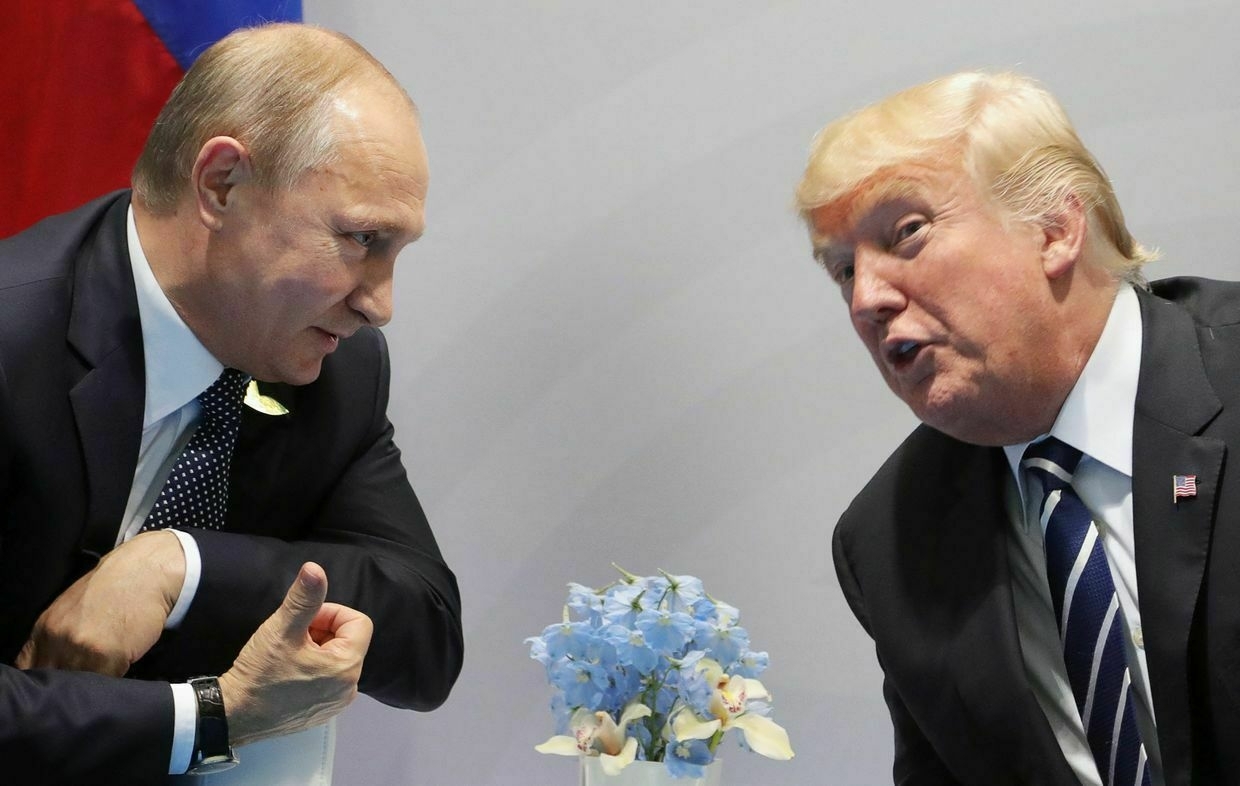
During a phone call with U.S. President Donald Trump on July 3, Russian President Vladimir Putin said “Russia will continue to pursue its goals” in the war against Ukraine, Kremlin aide Yury Ushakov said.
The hour-long conversation between the two presidents focused on Russia’s war in Ukraine and the situation in the Middle East, according to Ushakov.
“Trump once again emphasized the need to end military hostilities as soon as possible. Vladimir Putin noted that Russia continues to seek a political negotiated solution to the conflict,” Ushakov said.
“Our president said that Russia will pursue its goals, specifically addressing the root causes that led to the current situation, and will not back down from these objectives."
Putin’s message came amid a surge of Russian drone and missile attacks across Ukraine that have killed and injured hundreds of civilians in recent weeks.
The strikes have destroyed numerous infrastructure as Russia intensifies its assault despite repeated calls from Kyiv, Washington, and European leaders for an unconditional ceasefire.
The call also came days after the U.S. Defense Department paused shipments of key weapons systems to Ukraine, including Patriot air defense missiles and precision-guided munitions.
Ukraine’s Foreign Ministry has warned that the delay undermines defense efforts and risks emboldening Russia to escalate further.
President Volodymyr Zelensky, speaking from Denmark earlier in the day, said that achieving peace would require direct talks between national leaders.
The president described Trump and Putin as “completely different people” but emphasized that only Putin controls decision-making in Russia.
“In Russia, only Putin makes decisions, which is why we need a meeting at the leadership level if we want to have peace,” Zelensky said.
According to Ushakov, the presidents did not discuss the possibility of a meeting, but “the idea is in the air,” and they agreed to continue communication.
Moscow and Kyiv have held two rounds of face-to-face talks in Istanbul this year, first on May 16 and again on June 2, following more than three years without direct negotiations.
The meetings resulted in significant prisoner exchanges, but no steps toward a ceasefire.
While Trump has expressed frustration with Russia’s continued aggression, his administration has not imposed new sanctions nor taken steps to pressure the Kremlin directly.
As Trump ‘loses interest’ in Ukraine, Kyiv scrambles to clarify extent of U.S. military aid pauseWhen the U.S. Department of Defense (DOD) halted the transfer of critical air defense missiles and other weapons to Ukraine, Kyiv and its partners were caught off-guard and are now left scrambling for clarity on the scope and length of the Trump administration’s decision. The White House confirmed the halt after a July 1 report by Politico said shipments were paused due to concerns over the size of domestic stockpiles. The decision “was made to put America’s interests first following a DOD rev The Kyiv IndependentAndrea Januta
The Kyiv IndependentAndrea Januta
-
As Trump 'loses interest' in Ukraine, Kyiv scrambles to clarify extent of U.S. military aid pause
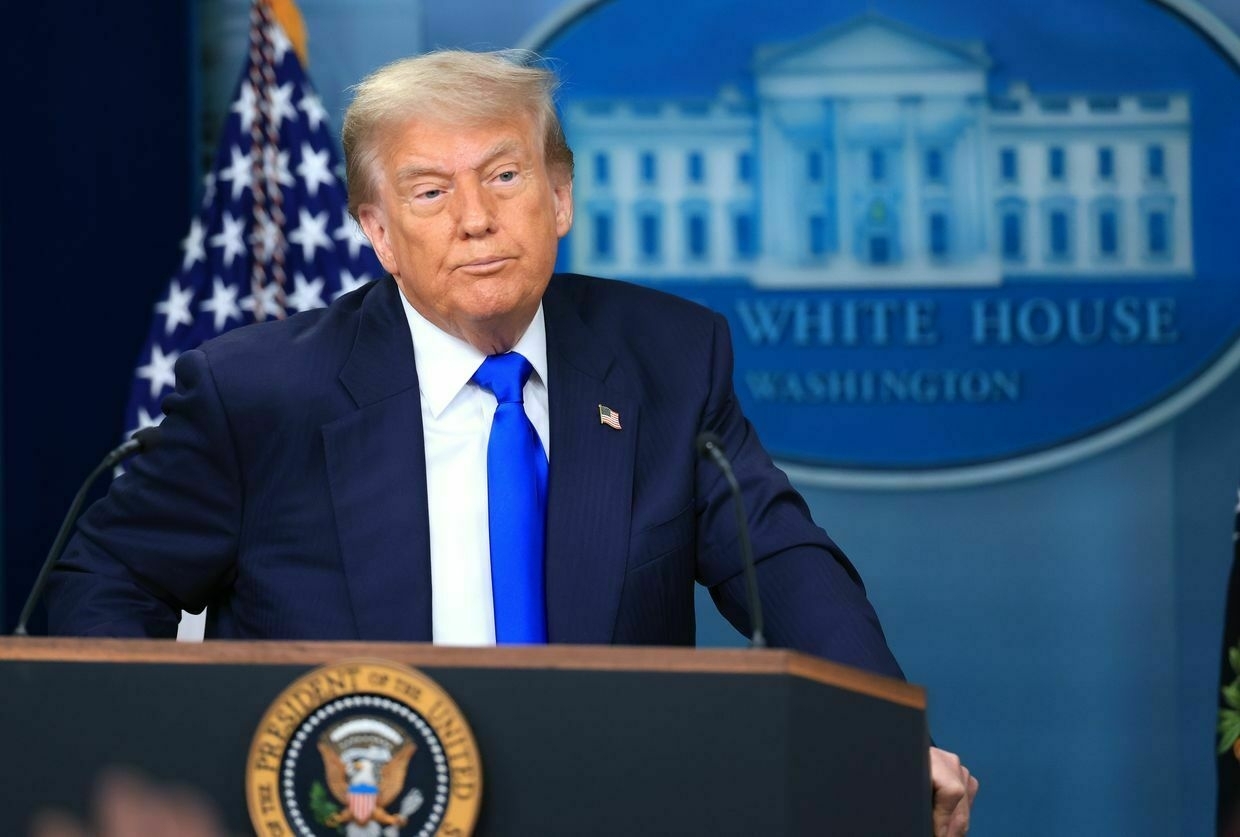
When the U.S. Department of Defense (DOD) halted the transfer of critical air defense missiles and other weapons to Ukraine, Kyiv and its partners were caught off-guard and are now left scrambling for clarity on the scope and length of the Trump administration’s decision.
The White House confirmed the halt after a July 1 report by Politico said shipments were paused due to concerns over the size of domestic stockpiles.
The decision “was made to put America’s interests first following a DOD review of our nation’s military support and assistance to other countries across the globe,” White House Deputy Press Secretary Anna Kelly said in a statement.
The Pentagon referred to the halt as a “capability review."
U.S. State Department spokeswoman Tammy Bruce emphasized that the halt was limited in scope. “This is not — I will reinforce this — this is not a cessation of us assisting Ukraine or of providing weapons,” Bruce said, according to media reports.
“This is one event in one situation, and we’ll discuss what else comes up in the future. But be wary of painting too broad a brush there."
But Ukraine, which was not notified of the pause in advance of media reports, responded with alarm at the prospect of a reduction in weapons and the lack of clarity from its partner on when — if at all — shipments could resume.
“They’ve stopped the flow while they find out what (stockpiles) they really have, but it is not yet clear whether this is a valid reason and whether everything will continue,” a source in Ukraine’s President’s Office told the Kyiv Independent.
Also still unclear, said the source, was whether the U.S. will allow Ukraine to purchase Patriot air defense missiles, which President Volodymyr Zelensky has repeatedly expressed a desire to buy.
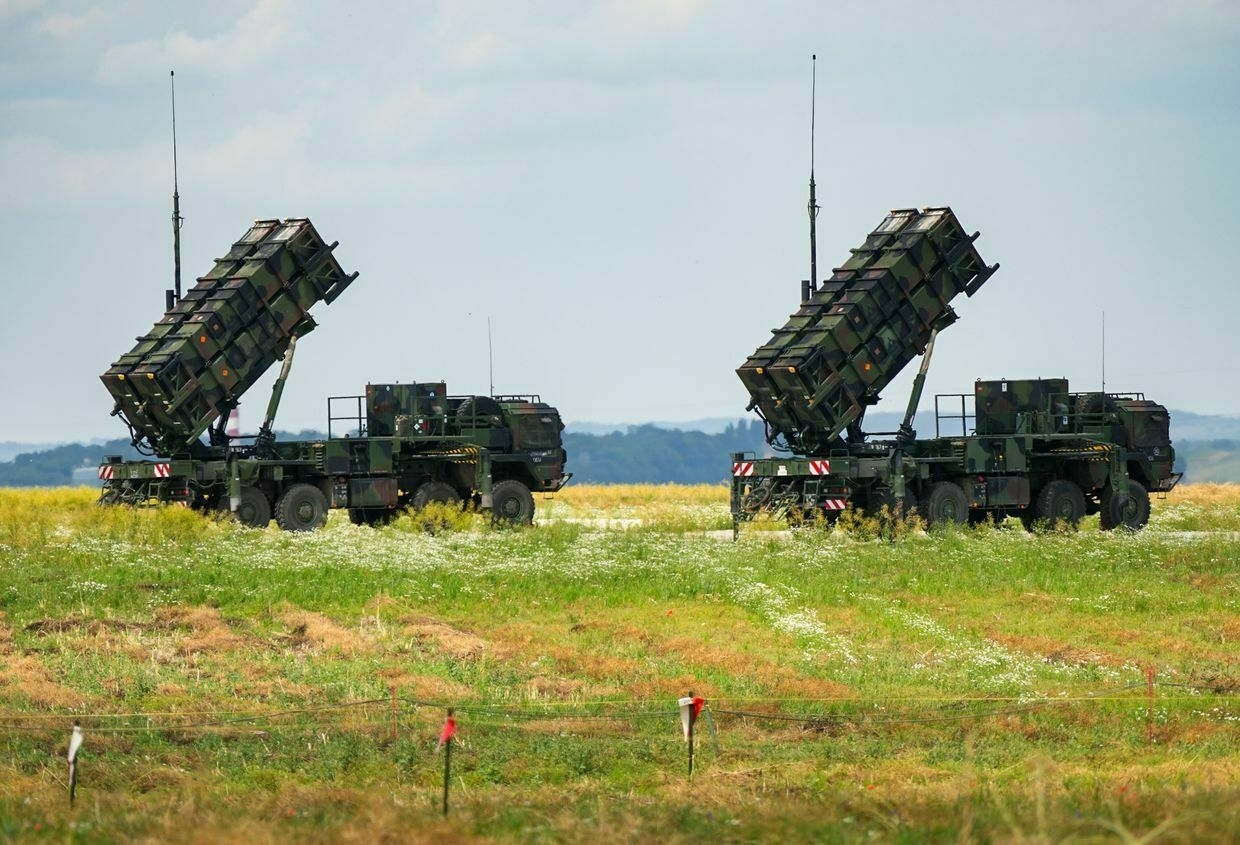
Two Patriot air defense systems in Zamosc, Poland, on July 3, 2023. (Soeren Stache/picture alliance via Getty Images) The Foreign Ministry summoned the acting U.S. Chargé d’Affaires in Ukraine to discuss the matter, and “emphasized that any delay or slowing down in supporting Ukraine’s defense capabilities would only encourage the aggressor to continue war and terror, rather than seek peace,” according to a statement from the ministry.
A shift in U.S. prioritiesThe decision comes as Russia sharply steps up aerial attacks, launching a record-breaking 5,337 drones against Ukraine in the month of June and unleashing some of the war’s deadliest strikes on civilians. Even before the announcement, Kyiv’s stockpiles of critical air defense interceptor missiles were running low.
“Cutting off delivery of missiles for Patriot anti-air systems will mean a weaker air defense system over the country, and as a result, destruction of civilian infrastructure and major casualties among civilians,” a deputy commander in Ukraine’s air defense told the Kyiv Independent.

Russian drones launched against Ukraine by month. (Nizar al-Rifai/The Kyiv Independent) The move sparked fears of a repeat of events in early March, when the U.S. cut off all military aid to Ukraine after a contentious meeting in the White House between Zelensky and Trump. The freeze was lifted on March 11 following bilateral talks in Saudi Arabia.
Trump ‘losing interest’ in UkraineSince the Trump administration took power in January, the U.S. has not agreed to send any new additional weapons packages to Ukraine. However, shipments that were previously greenlit under the Biden administration are still in the queue.
“[Trump] has lost interest in the Ukraine war as there are no quick political gains for him in being involved in a conflict he can’t easily control.”
While March's pause was a result of tensions between Ukraine and the U.S., the latest pause appears to be a result of a change in U.S. priorities as tensions rise in the Middle East and Trump administration officials shift focus away from Russia and Ukraine.
"The president knows he can’t impose a ceasefire on either Russia or Ukraine," Peter Layton, a military expert at the Royal United Services Institute, told the Kyiv Independent.
"Given this, he has lost interest in the Ukraine war as there are no quick political gains for him in being involved in a conflict he can’t easily control. The president is now moving on to other agendas."
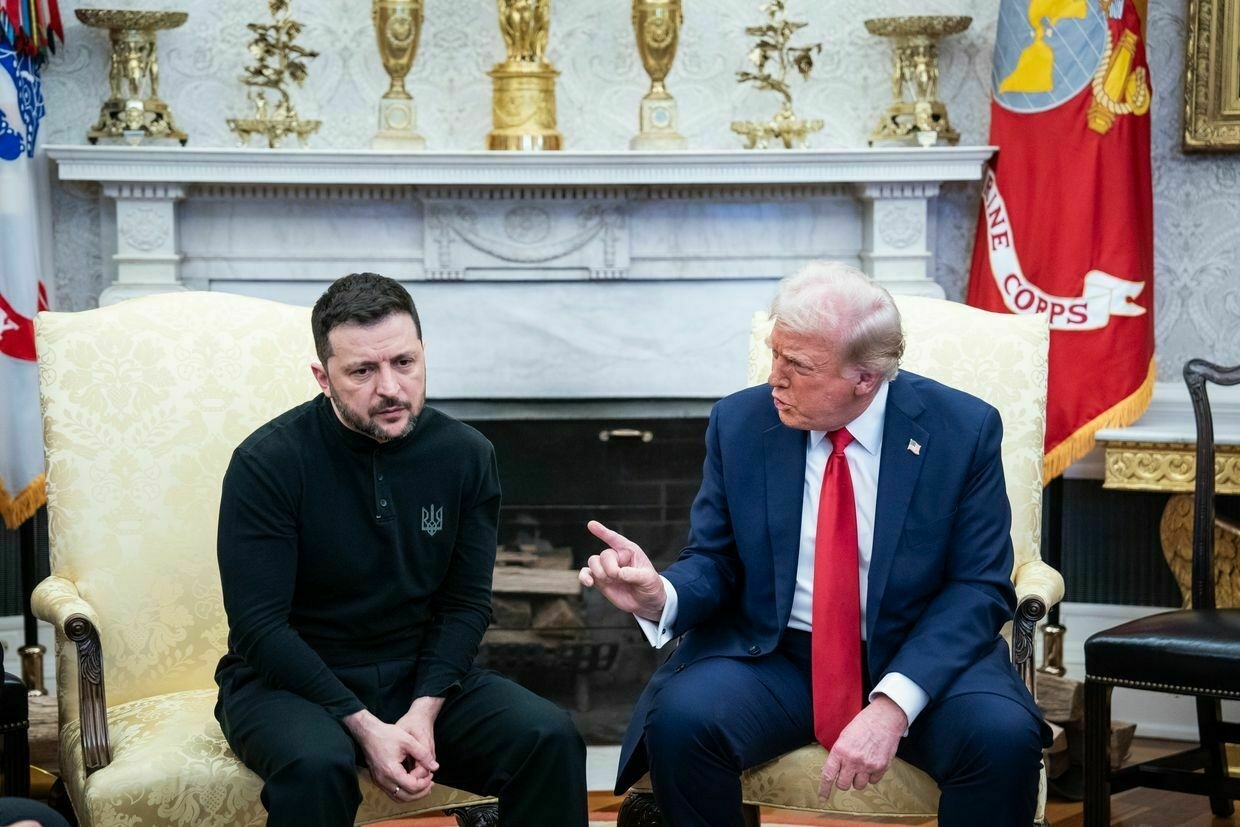
President Donald Trump and President Volodymyr Zelensky in the Oval Office at the White House on Feb. 28, 2025. (Jabin Botsford/The Washington Post via Getty Images) "I think the resources have instead been flowing to the Middle East and principally to Israel to help in its war with Iran," Layton added.
"Some resources may have bolstered U.S. air and missile defenses at American bases in the Gulf but I think most has been sent to Israel. The U.S. administration seems to have had some warning of Israel’s attack on Iran and moved resources into the Middle East in anticipation."
Neil Quillian, a Middle East expert at Chatham House, agreed that the escalation in the Middle East was a contributing factor to the halt in supplies, as well as waning interest in Ukraine among Trump's advisors.
"The U.S. is resupplying Israel at pace. Another factor will be Washington's limited capacity to manage multiple conflicts at once, given that President Trump depends on so few advisers," Quillian said.
The future of U.S. military aid to Ukraine
The largest question looming for Kyiv is when — and if — deliveries will continue. So far, the Trump administration hasn't clarified what to expect."While Trump does not really seem to care what happens to Ukraine, he does crave approval and praise," Jenny Mathers, a lecturer in international politics at the U.K.'s Aberystwyth University, told the Kyiv Independent.
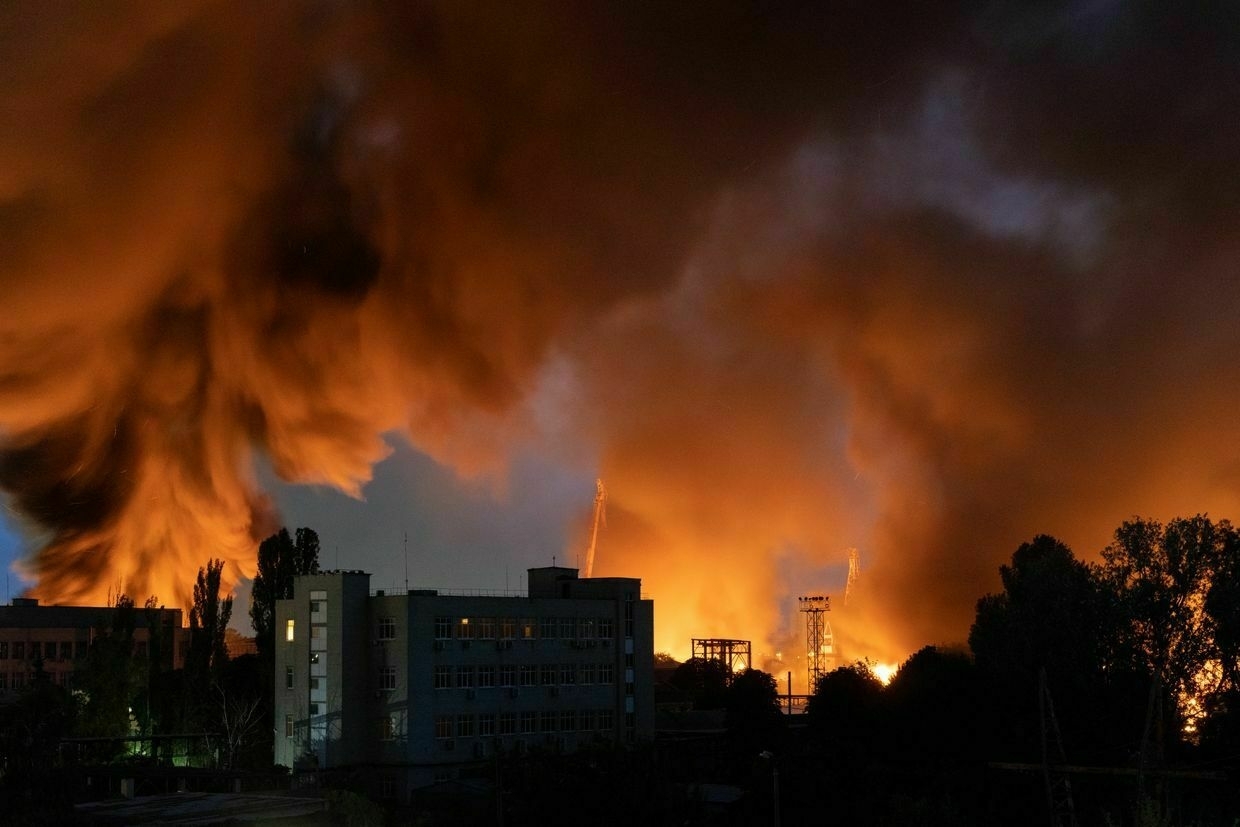
Fire and smoke rise after Russian drone strikes in Kyiv, Ukraine, on June 10, 2025. (Oles Kromplias / Global Images Ukraine via Getty Images) "If U.S. military aid is suspended or withdrawn and the spotlight turns to other countries that step up, he might want to make a dramatic gesture to again become the centre of attention. But ultimately this kind of support is not something that Ukraine can count on."
Layton said he didn't expect the aid to restart "unless there is some dramatic event that leads to the American public turning against the president over Ukraine."
BREAKING: Deputy commander of Russian Navy killed in Ukrainian strike in Kursk, Russian official confirmsMajor General Mikhail Gudkov also led a brigade involved in combat operations against Ukraine. His death reportedly occurred during a Ukrainian attack on a Russian command post. The Kyiv IndependentAnna Fratsyvir
The Kyiv IndependentAnna Fratsyvir
-
Pentagon confirms 'capability review' amid pause in aid deliveries to Ukraine
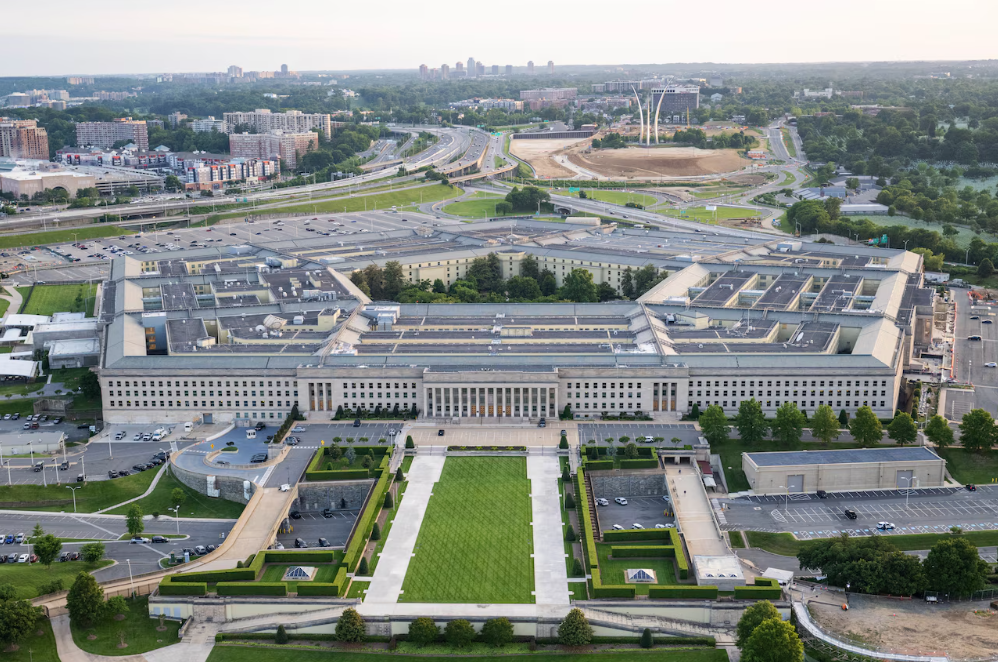
Pentagon spokesperson Sean Parnell confirmed on July 2 that some assistance to Ukraine has been halted as the U.S. Defense Department conducts a review of foreign aid deliveries.
“This capability review… is being conducted to ensure U.S. military aid aligns with our defense priorities… We see this as a common-sense, pragmatic step towards having a framework to evaluate what munitions are sent and where,” Parnell said.
The White House earlier confirmed the pause in shipments, citing a broader reassessment of U.S. military stockpiles amid media reports of the halt in military assistance.
The weapons reportedly being held back include two dozen Patriot air defense missiles, over two dozen Stinger air-defense systems, precision artillery rounds, Hellfire missiles, drones, and more than 90 AIM air-to-air missiles launched from F-16 fighter jets.
New U.S. military aid packages have not been approved since U.S. President Donald Trump was inaugurated in January, raising concern among Ukraine’s allies.
“Ultimately, our job here at the Department of Defense is to pursue the president’s ‘America First’ agenda and make sure that we achieve peace through strength throughout the world,” Parnell said at a Pentagon press briefing.
The U.S. Defense Department will not provide updates on the timeline and quantity or type of munitions provided to Ukraine, he added.
“What we’ve done here at the Department of Defense is create a framework to analyze what munitions we’re sending (and) where,” Parnell said.
A bipartisan group of U.S. lawmakers has voiced their opposition to the decision to halt military aid shipments to Ukraine.
“We must build up our own Defense Industrial Base here in the U.S. while simultaneously providing the needed assistance to our allies who are defending their freedom from brutal invading dictators. To not do both is unacceptable,” Republican Rep. Brian Fitzpatrick, the co-chair of the Congressional Ukraine Caucus, said.
Democratic Senator Richard Blumenthal, a member of the Senate Armed Services Committee, described the military aid pause as “fallacious and maybe even disingenuous."
NATO Secretary General Mark Rutte said on July 2 that he understands the White House’s need to safeguard its own defense capabilities, but underscored that Ukraine urgently requires sustained support.
“I totally understand that the U.S. always has to make sure its interests are covered… When it comes to Ukraine, in the short term, Ukraine cannot do without all the support it can get,” Rutte said.
The Washington Post reported that the military aid was already in Poland, being prepared for delivery to Ukraine.
‘Major casualties among civilians’ — US freeze on air defense missiles is terrible news for UkraineThe halting of deliveries of air defense missiles from the U.S. will lead to“major casualties among civilians,” a deputy commander in Ukraine’s air defense told the Kyiv Independent. Politico reported on July 1 that the U.S. Defense Department (DOD) had halted shipments of some weapons previouslyThe Kyiv IndependentKollen Post

-
'They're going to lose more lives' — US lawmakers voice opposition to Trump administration halting air defense shipments to Ukraine

A bipartisan group of U.S. lawmakers are voicing their opposition to the Trump administration’s decision to halt shipments of some air defense missiles and other weapons previously promised to Kyiv.
The U.S. Defense Department (DOD) made the decision to pause the aid deliveries after conducting a review of U.S. munitions stocks, reportedly concerned about dwindling levels of artillery rounds, air defense missiles, and precision munitions.
Among the items being held back from Ukraine are over two dozen Patriot air defense missiles, over two dozen Stinger air-defense systems, precision artillery rounds, Hellfire missiles, drones, and more than 90 AIM air-to-air missiles that Ukraine launches from F-16 fighter jets. The Washington Post reported that the weapons were already in Poland being prepped for delivery to Ukraine.
Republican Rep. Brian Fitzpatrick, the co-chair of the Congressional Ukraine Caucus, lambasted the decision in a post on X.
I will be aggressively looking into this matter and will be demanding accountability. We must build up our own Defense Industrial Base here in the U.S. while simultaneously providing the needed assistance to our allies who are defending their freedom from brutal invading… https://t.co/pRTOMCghWh
— Rep. Brian Fitzpatrick 🇺🇸 (@RepBrianFitz) July 2, 2025Fitzpatrick, a staunch ally of Ukraine who has previously visited the front line, said he "will be aggressively looking into this matter and will be demanding accountability."
"We must build up our own Defense Industrial Base here in the U.S. while simultaneously providing the needed assistance to our allies who are defending their freedom from brutal invading dictators. To not do both is unacceptable," the Congressman added.
In a letter to U.S. President Donald Trump about the reported halt of air defense deliveries, Fitzpartick requested an emergency briefing from the White House and DOD on the shipments.
"Ukraine's courage must continue to be met with action, and the United States must continue to lead with clarity and purpose," Fitzpartick wrote.
Another Republican House member, Rep. Michael McCaul, said he is examining "very intensely" whether the Pentagon’s freeze breaches legislation on aid to Ukraine passed in 2024, Politico reported.
As Trump continues to call for a ceasefire from Moscow, McCaul said that the decision comes "at the wrong time."
"If you want to get (Russian President Vladimir Putin) to the negotiating table in good faith, you have to put leverage and pressure on him, and that would be (Senator) Lindsey Graham’s economic sanctions and the flow of weapons," McCaul said. "If you take the flow of weapons out, yeah, then you’re not, you don’t have the leverage over Putin to negotiate."
Other Republican members of Congress have thus far dismissed concerns over the reported halts, stating that they are waiting to be briefed with additional information before speaking about the reports.
On the other side of the isle, Democratic lawmakers have also lambasted the real world implications of halting military aid for Ukraine.
Senator Richard Blumenthal, a member of the Senate Armed Services Committee, said in an interview that more civilians are "going to lose more lives, more people will be maimed and injured — more homes, hospitals, schools will be destroyed," calling the decision, "fallacious and maybe even disingenuous."
Since his inauguration in January, Trump has not approved any additional military aid packages for Ukraine. Defense Secretary Pete Hegseth also announced recently that the U.S. will reduce the total aid it sends to Ukraine in its upcoming defense budget.
In his evening address on July 2, President Volodymyr Zelensky said Ukrainian and U.S. officials are working through the aid issue at a "working level," including discussions on critical air defense support. Head of the Presidential Office Andriy Yermak held a late night phone call with Rep. Brian Mast, Chair of the House Committee on Foreign Affairs.
Ukraine's Defense Ministry said it has not received any formal notification of delays or cancellations but has requested urgent consultations with U.S. defense officials.
The Foreign Ministry also summoned U.S. Charge d'Affaires John Ginkel, warning that "any hesitation" in military support would encourage further Russian aggression.
The Kremlin welcomed the decision, with spokesperson Dmitry Peskov saying, "The fewer weapons that are supplied to Ukraine, the closer the end of the (war)."
NATO Secretary General Mark Rutte expressed understanding of Washington's desire to safeguard its stockpiles but said, "Ukraine cannot do without all the support it can get."
Ukraine war latest: As Russia ramps up missile attacks, US halts promised air defense shipments to UkraineKey developments on July 2: * As Russia ramps up missile attacks, US halts promised air defense shipments to Ukraine * North Korea to send up to 30,000 more troops to aid Russia’s war against Ukraine, CNN reports * Ukraine denies another Russian claim of Dnipropetrovsk Oblast breakthrough, says small incursion repelledThe Kyiv IndependentThe Kyiv Independent news desk
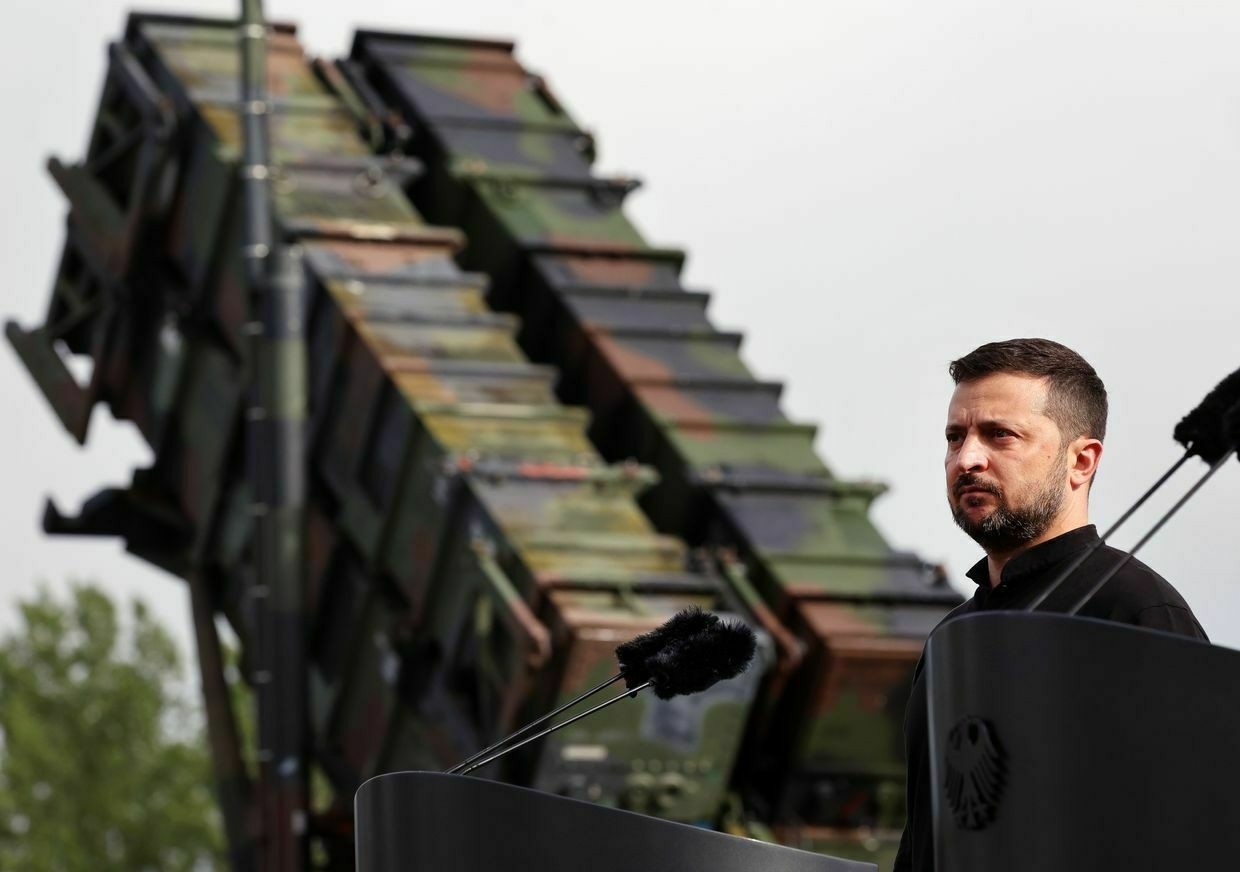
-
Ukraine's Constitutional Court appointments: A test of EU commitment
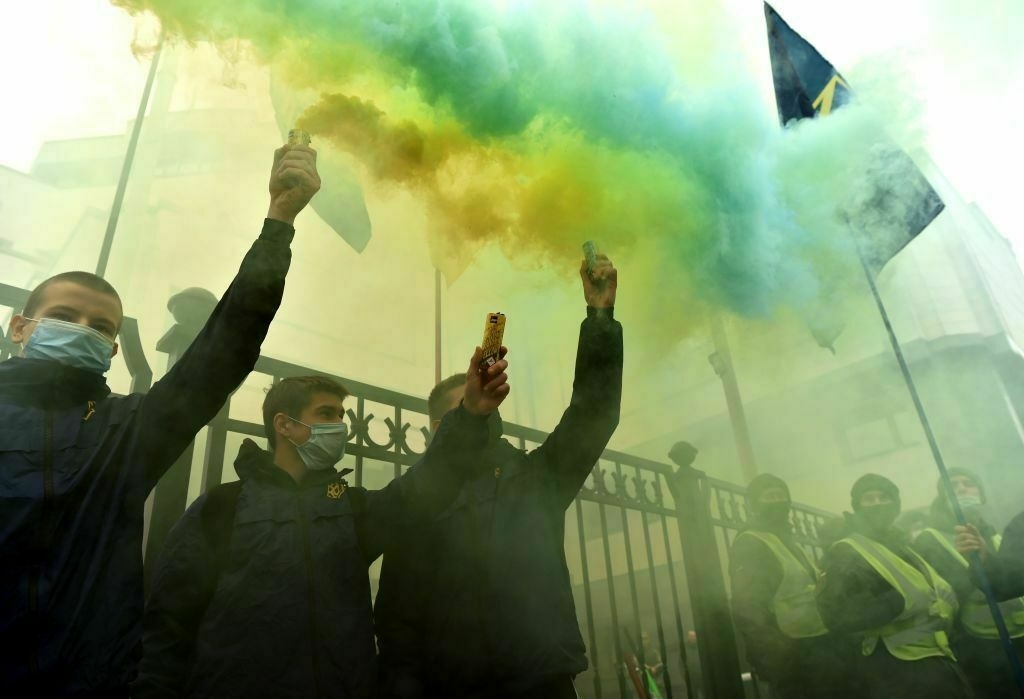
As Ukraine continues its path toward European integration while defending itself against Russian aggression, the strength of its democratic institutions remains paramount.
Among these institutions, the Constitutional Court plays a unique role in protecting citizens' rights and maintaining the rule of law.
Yet today, this crucial judicial body still lacks the judges needed for full functionality, with six out of 18 seats remaining vacant.
This situation, while concerning in any circumstances, takes on particular importance as Ukraine works to show its commitments as an EU candidate country.
With Trump disengaged and EU complacent, Ukrainian reforms lose momentumRussia’s all-out war has accelerated Ukraine’s push to join the European Union and NATO, as well as its dependence on Western loans and aid. Before, these things would have been heavily preconditioned on Ukraine implementing crucial reforms. However, the war has also eased the pressure on Kyiv to carry outThe Kyiv IndependentOleg Sukhov
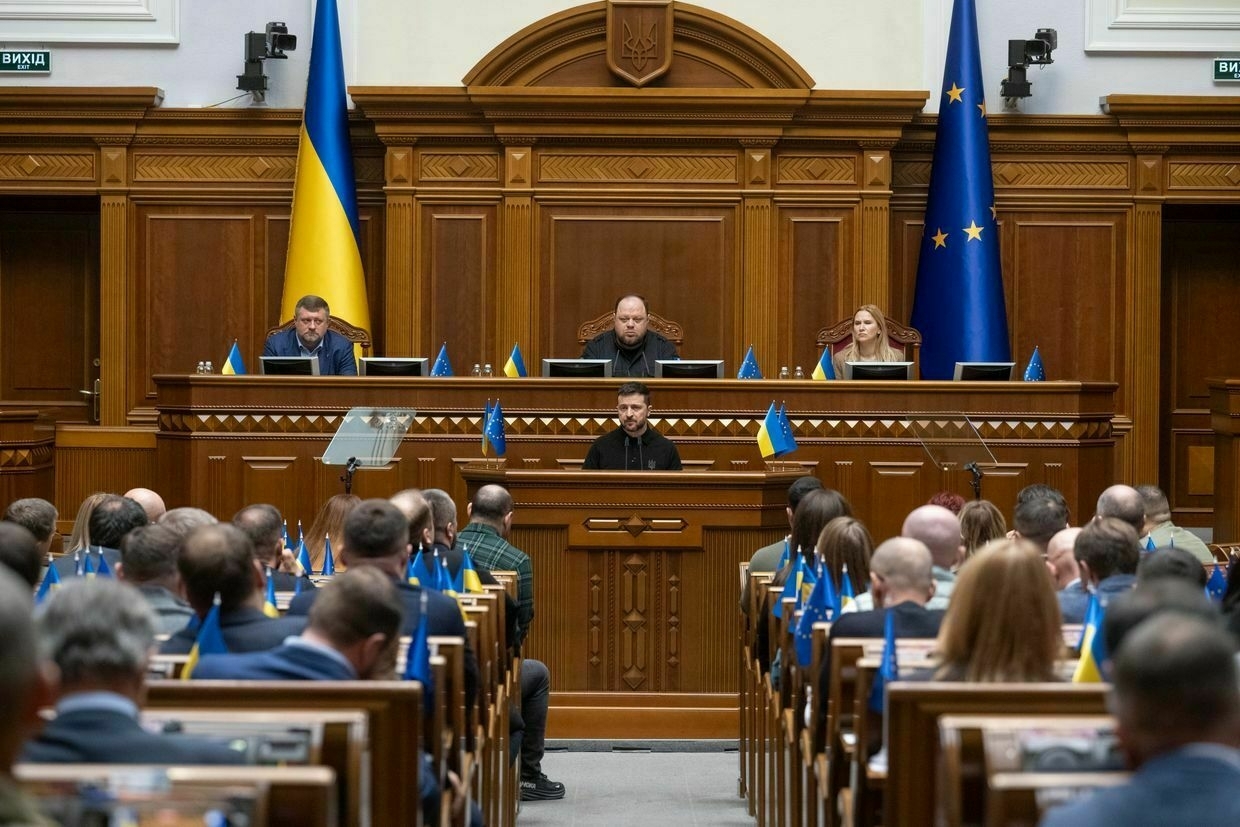
The situation reached a tipping point in January 2025 when three Constitutional Court judges completed their terms. For five months, the court lacked the quorum necessary for its Grand Chamber sessions, which required the presence of 12 judges and at least 10 votes to adopt decisions.
On June 28, President Volodymyr Zelensky appointed Oleksandr Vodiannikov, former coordinator of OSCE projects in Ukraine, as a judge of the Constitutional Court. Formally, it restored the quorum, but the underlying problem of the lack of judges remains unsolved.
The reform of the Constitutional Court is among the biggest challenges the country is facing.
The urgency became undeniable in 2020, when the court effectively dismantled a key anti-corruption reform, overturning the electronic asset declaration system. This crisis prompted the Venice Commission to recommend depoliticizing the judge selection process.
However, real momentum to reform the tainted court emerged only in the summer of 2022, when the European Commission identified the Constitutional Court reform as the primary condition for opening EU membership negotiations. It became the first of the seven key requirements for maintaining Ukraine’s candidate status. This external pressure pushed the needle, something domestic activists couldn’t achieve alone.
In response, Ukraine adopted legislation on July 27, 2023, introducing a competitive selection process for Constitutional Court judges through the Advisory Group of Experts (AGE).
This new body, where international experts nominated by partner countries held decisive influence, was designed to ensure that candidates meet the high moral standards and professional competence required by the constitution.
The Constitutional Court reform was not just another bullet point on a checklist, it was identified as the foremost priority among the seven key requirements for EU candidacy.
The AGE, formally established in October 2023, initially showed promising results. It successfully vetted candidates, rejecting those with questionable political affiliations who failed to meet the required moral standards.
In 2024, this process led to the appointment of two new judges, Alla Oliynyk and Serhiy Riznyk, by the Congress of Judges and parliament, respectively. These appointments were a sign of hope that the Constitutional Court would finally consist of truly independent judges.
Then, progress stalled.
Three months ago, in February 2025, the AGE submitted lists of recommended candidates to both parliament and the president for their respective appointment quotas.
Both largely ignored the advisory group's recommendation.
While Zelensky has now made one appointment with Vodiannikov on June 28, additional appointments from both the president and parliament remain pending.
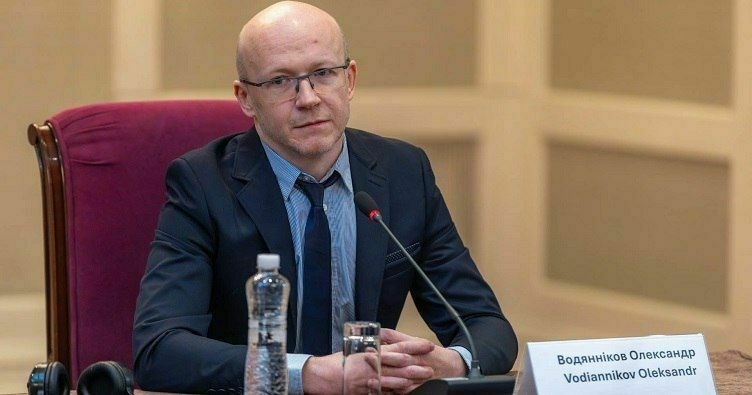
Oleksandr Vodiannikov, former coordinator of OSCE projects in Ukraine, now appointed as a judge of the Constitutional Court in an undated photo. (Telegram) The president has established an additional commission to re-verify candidates, which has already recommended three candidates for appointment. With one presidential appointment now made, one more appointment from the president remains necessary. At the same time, Vodyannikov's appointment demonstrates that progress is possible when political will exists.
This paralysis sends a troubling signal about Ukraine's commitment to European integration.
The Constitutional Court reform was not just another bullet point on a checklist, it was identified as the foremost priority among the seven key requirements for EU candidacy. By failing to implement this reform in practice, Ukraine risks undermining its credibility with European partners who have invested significant political capital in supporting Ukraine's membership bid.
This sends a particularly damaging message, given the current geopolitical context. While Ukrainian soldiers defend European values on the battlefield, the failure to appoint Constitutional Court judges suggests that the political elite may not be equally committed to defending those values through institutional reform.
This disconnect between wartime sacrifice and peacetime governance could prove costly for Ukraine's European aspirations.
The solution is straightforward: Parliament and the president must immediately appoint the vetted candidates recommended by the AGE.

President Volodymyr Zelensky speaks to the media in Berlin, Germany, on June 30, 2025. (Juliane Sonntag / German Federal Foreign Office via Getty Images) This is not a complex legislative challenge requiring months of preparation, it is a simple matter of political will. The candidates have been thoroughly vetted by a process that Ukraine itself designed to meet European standards. Further delay only deepens the damage to Ukraine's international standing.
Completing these appointments would demonstrate that Ukraine's commitment to EU integration extends beyond rhetoric to concrete action. It would show that even during wartime, Ukraine can maintain and strengthen its democratic institutions. This is precisely the resilience and determination that will secure European support for Ukraine's membership bid.
Ukraine cannot afford to leave its Constitutional Court in limbo with a limited quorum. Every day without a functioning Court would be a day when citizens' constitutional rights go unprotected and when crucial wartime decisions would lack proper constitutional review.
Beyond these immediate concerns, however, there is a deeper question: Can Ukraine demonstrate the institutional maturity required for EU membership?
The appointment of Constitutional Court judges has become a litmus test for Ukraine's European future. It is time for Ukraine's political leadership to pass this test by completing the appointments without further delay.
The technical work is done, the candidates are ready, and the only missing element is the political decision. By taking this step, Ukraine would not only fill in the vacancies within the Constitutional Court but also reaffirm its unwavering commitment to the European path, proving that even in the darkest hours of war, Ukraine remains dedicated to building a democratic, law-binding state worthy of EU membership.
Ukraine’s tainted judges get a helping hand from law enforcement to stay in officeAs Ukraine struggles to reform its tainted judiciary, investigators and top officials are allegedly helping controversial judges to keep their seats. As part of the judicial reform, the High Qualification Commission was scheduled to vet 41 judges, including those from Ukraine’s two most dubious courts — the Pechersk Court and theThe Kyiv IndependentOleg Sukhov
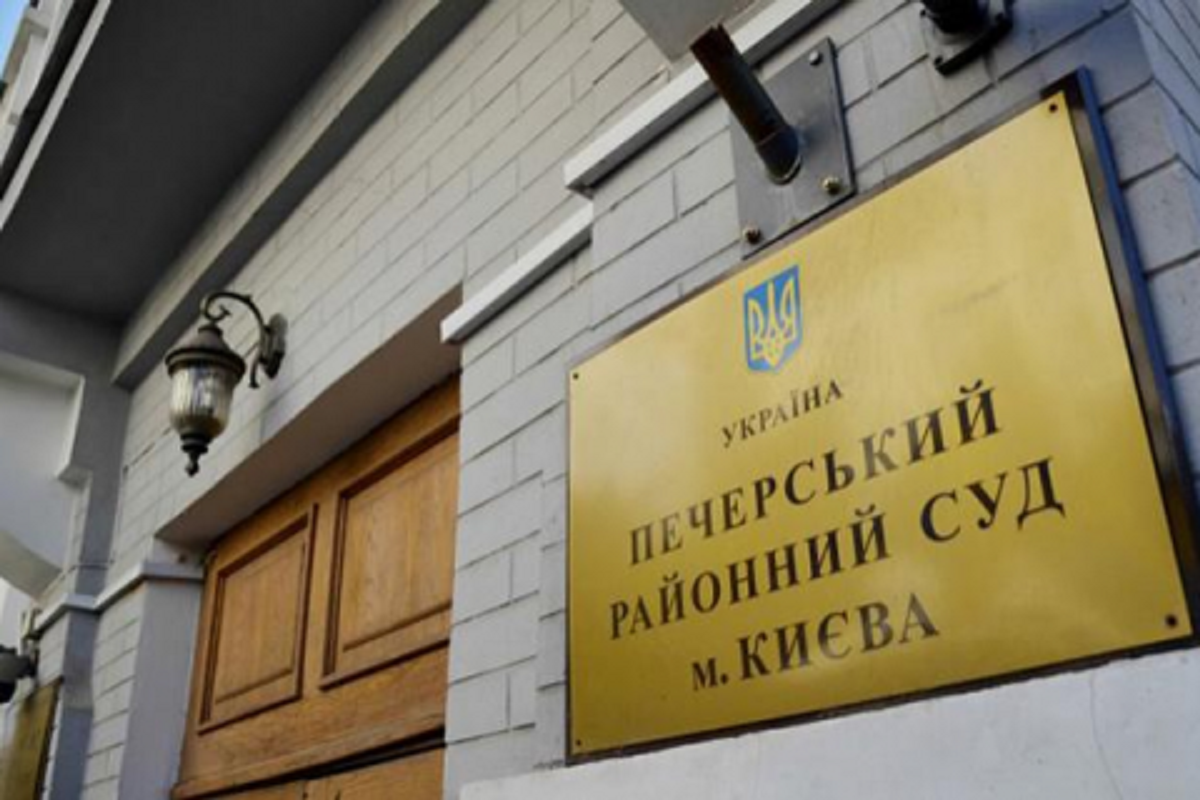
Editor’s Note: The opinions expressed in the op-ed section are those of the authors and do not purport to reflect the views of the Kyiv Independent.
-
Ukraine war latest: As Russia ramps up missile attacks, US halts promised air defense shipments to Ukraine

Key developments on July 2:
- As Russia ramps up missile attacks, US halts promised air defense shipments to Ukraine
- North Korea to send up to 30,000 more troops to aid Russia’s war against Ukraine, CNN reports
- Ukraine denies another Russian claim of Dnipropetrovsk Oblast breakthrough, says small incursion repelled
- Russia’s Kupol military plant reportedly halts operations after Ukrainian drone strike
- Russia killed at least 273 Ukrainian POWs during full-scale war, prosecutors say
The U.S. Defense Department (DOD) has halted shipments of some air defense missiles and other weapons previously promised to Kyiv out of concerns over the size of U.S. stockpiles, Politico reported on July 1, citing sources familiar with the matter.
The suspension comes as Ukraine faces a shortage of air defense munitions along with increasingly intense and deadly Russian bombardments. In June 2025, Russia launched 5,337 Shahed-type drones at Ukraine, shattering its previous monthly record.
Pentagon policy chief Elbridge Colby made the decision to pause the aid deliveries after conducting a review of U.S. munitions stocks, three sources told Politico. Colby was reportedly concerned about dwindling levels of artillery rounds, air defense missiles, and precision munitions.
Among the items being held back from Ukraine are Patriot air defense missiles, precision artillery rounds, Hellfire missiles, drones, and other missiles that Ukraine launches from F-16 fighter jets.
Colby made the decision in June, amid a surge in Russian mass aerial attacks against Ukraine. The White House later confirmed the pause.
The Pentagon’s decision “was made to put America’s interests first following a DOD review of our nation’s military support and assistance to other countries across the globe,” White House Deputy Press Secretary Anna Kelly said in a statement issued after Politico published the story.
“The strength of the United States Armed Forces remains unquestioned — just ask Iran,” she said.
Since his inauguration in January, U.S. President Donald Trump has not approved any additional military aid packages for Ukraine. Defense Secretary Pete Hegseth also announced recently that the U.S. will reduce the total aid it sends to Ukraine in its upcoming defense budget.
In his evening address on July 2, President Volodymyr Zelensky said Ukrainian and U.S. officials are working through the aid issue at a “working level,” including discussions on critical air defense support.
Ukraine’s Defense Ministry said it has not received any formal notification of delays or cancellations but has requested urgent consultations with U.S. defense officials.
The Foreign Ministry also summoned U.S. Charge d’Affaires John Ginkel, warning that “any hesitation” in military support would encourage further Russian aggression.
The Kremlin welcomed the decision, with spokesperson Dmitry Peskov saying, “The fewer weapons that are supplied to Ukraine, the closer the end of the (war)."
NATO Secretary General Mark Rutte expressed understanding of Washington’s desire to safeguard its stockpiles but said, “Ukraine cannot do without all the support it can get."
‘Major casualties among civilians’ — US freeze on air defense missiles is terrible news for UkraineThe halting of deliveries of air defense missiles from the U.S. will lead to“major casualties among civilians,” a deputy commander in Ukraine’s air defense told the Kyiv Independent. Politico reported on July 1 that the U.S. Defense Department (DOD) had halted shipments of some weapons previouslyThe Kyiv IndependentKollen Post
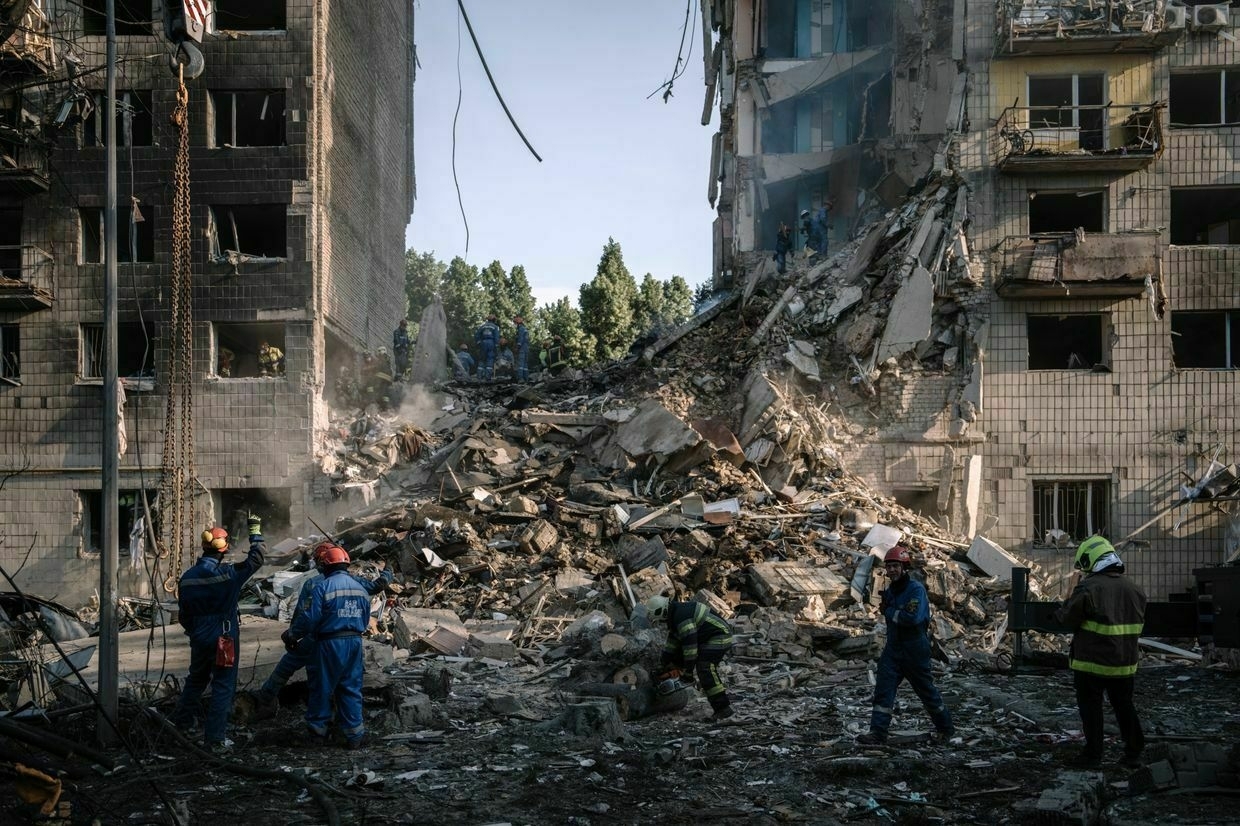
North Korea to send up to 30,000 more troops to aid Russia’s war against Ukraine, CNN reportsNorth Korea is preparing to set an additional 25,000-30,000 soldiers to join Russian forces fighting against Ukraine, almost three times as many as were dispatched last year, CNN reported on July 2, citing undisclosed Ukrainian officials.
The fresh units may arrive in the coming months and are likely to be engaged in combat in Russian-occupied Ukrainian territories, including during “large-scale offensive operations,” according to a Ukrainian military intelligence (HUR) assessment reviewed by CNN.
The news underscores North Korea’s growing involvement in the Russia-Ukraine war and the deepening military ties between Pyongyang and Moscow.
North Korea initially dispatched around 11,000 soldiers to Russia in the fall of 2024 to help fend off a Ukrainian incursion into Russia’s Kursk Oblast. According to various estimates, North Korean soldiers suffered between 4,000 and 6,000 casualties during this deployment.
Ukraine’s HUR also noted signs that Russian military aircraft are being refitted to transport North Korean troops from their homeland across Russia’s Siberia, CNN reported. Satellite imagery detected a ship involved in last year’s deployment at a Russian port and a cargo aircraft at North Korea’s Sunan airport, according to the outlet.
Estimates reported by CNN exceed those of South Korea’s intelligence, which expects Pyongyang to send an additional 15,000 soldiers to Russia as early as July or August.
Following his visit to Pyongyang in June, Russian Security Council Secretary Sergei Shoigu also announced that North Korea would send 1,000 sappers and 5,000 military engineers to Russia’s Kursk Oblast.
Pyongyang’s assistance to Russia has not been limited to troops, with North Korea being a key source of artillery shells and ballistic missiles for Russian forces.
Russian President Vladimir Putin and North Korean dictator Kim Jong Un signed the Comprehensive Strategic Partnership Agreement in Pyongyang in June 2024. Under the treaty, the two countries pledged to provide aid to one another if either is attacked.
While the countries initially denied involvement of North Korean troops in the Russia-Ukraine war, both Putin and Kim acknowledged the deployment earlier this year.
Arrests, raids, beaten and bloodied suspects — how Russia-Azerbaijan relations have unravelledDeaths in custody, media offices raided, and beaten and bloodied suspects paraded in court — relations between Russia and Azerbaijan, once considered close, have sharply deteriorated in recent days amid a series of high-profile incidents. The latest tensions erupted over the weekend when Russian law enforcement officers detained over 50 AzerbaijaniThe Kyiv IndependentTim Zadorozhnyy
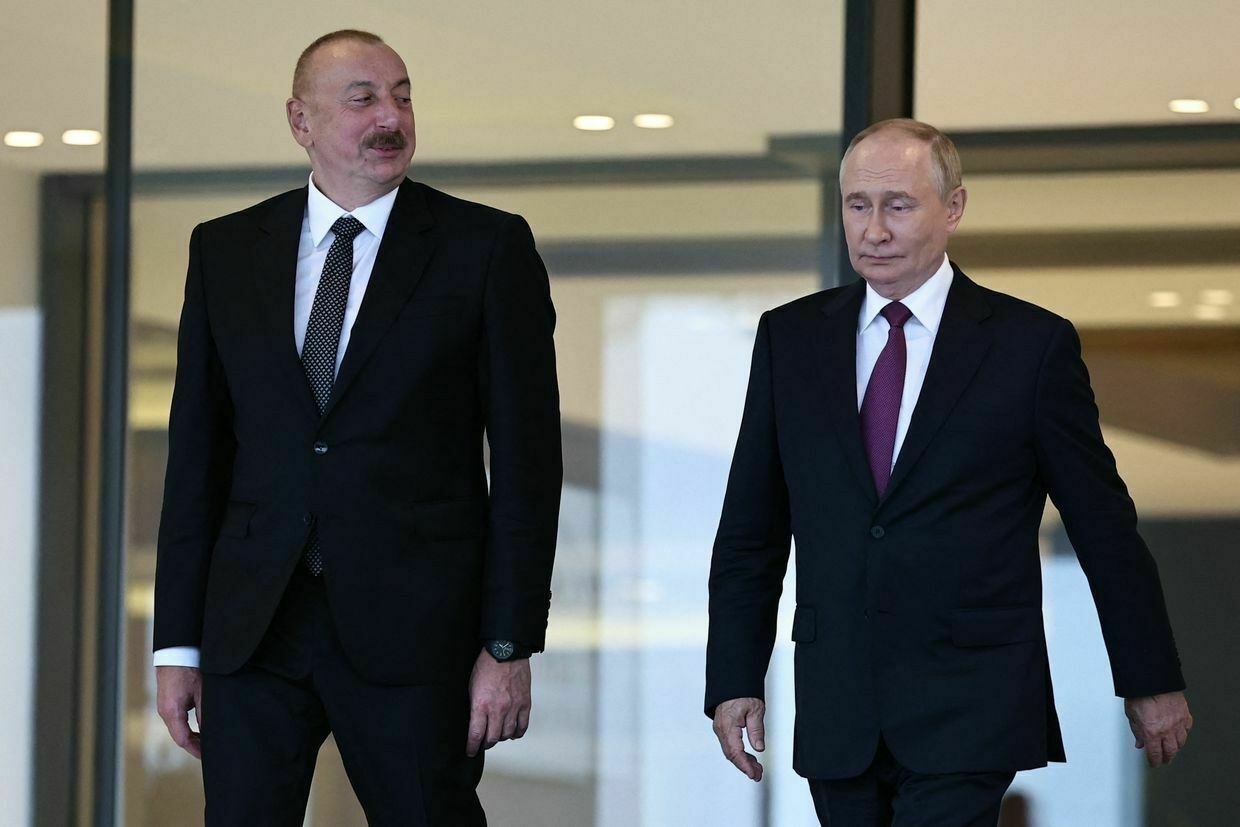
Ukraine denies another Russian claim of Dnipropetrovsk Oblast breakthrough, says small incursion repelledRussian forces have not succeeded in crossing into Dnipropetrovsk Oblast, Ukraine’s military said on July 2, refuting another Russian claim of a breakthrough into the central-eastern region.
The General Staff of the Armed Forces of Ukraine dismissed Russian claims of territorial gains as disinformation and said a recent small incursion was repelled.
According to the statement, a small Russian reconnaissance group managed to briefly enter the village of Dachne, located on the edge of Dnipropetrovsk Oblast. The group reportedly took photos with a Russian flag, but Ukrainian forces “eliminated them."
Russian troops have intensified efforts to breach the administrative border between Donetsk and Dnipropetrovsk oblasts in eastern Ukraine, but have failed to gain ground despite repeated assaults, the military said.
"(Russian troops) have had no success in achieving this demonstrative goal, no matter how many ‘meat wave assaults’ they launch with small infantry units and sabotage-reconnaissance groups,” the General Staff said in a statement.
Donetsk Oblast, which has been a focal point of Russia’s invasion since 2014 and a major battleground since the full-scale invasion in 2022, borders the more centrally located Dnipropetrovsk Oblast. Russian forces have not entered Dnipropetrovsk Oblast territory in force, although they regularly strike the region with missiles, drones, and aerial bombs.
In a separate incident, two Russian soldiers were captured during a subsequent assault on Dachne and are now in Ukrainian custody, the military said. They were detained by a unit of Ukrainian Marines and added to “Ukraine’s prisoner exchange pool."
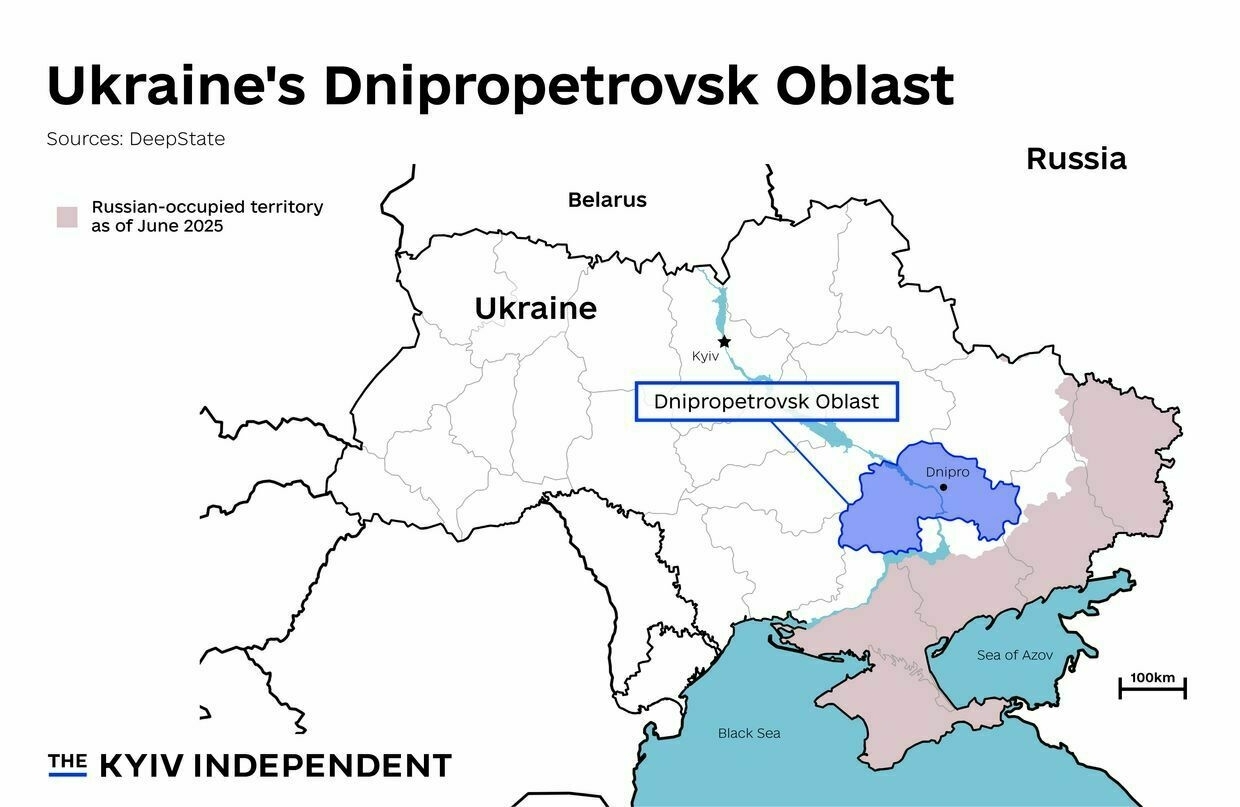
Ukraine’s Dnipropetrovsk Oblast (Nizar al-Rifai/The Kyiv Independent) “Therefore, the Russian propaganda about the seizure of the bridgehead in Dnipropetrovsk Oblast is not true. Dachne remains under the control of the Ukrainian Defense Forces,” the statement read.
The new claims echo a similar incident in May when Russian sources circulated a photo purporting to show Russian troops at the border of Dnipropetrovsk Oblast near the village of Novomykolaivka.
At the time, Ukrainian officials, including Dnipropetrovsk Oblast Governor Serhii Lysak, dismissed the photo as fake. The monitoring group DeepState later confirmed that the image had been taken in the village of Troitske in Donetsk Oblast and featured a Ukrainian vehicle abandoned under fire, which Russian forces later used for staged photos.
Russian forces have recently stepped up offensive operations across multiple sectors of the front line. Viktor Tregubov, spokesperson for Ukraine’s Khortytsia group of forces, said on June 16 that Moscow had increased attacks in the Novopavlivka sector.
Tregubov noted that the escalation near Novopavlivka indicates an effort to breach into Dnipropetrovsk Oblast. “But they have failed to succeed,” he said in a televised address.
Kremlin spokesperson Dmitry Peskov told Russian state-controlled media on June 9 that Russian forces were conducting operations in Dnipropetrovsk Oblast as part of efforts to create a so-called “buffer zone” on Ukrainian territory.
These remarks followed Russian President Vladimir Putin’s May 22 statement that Russia was working to establish a “security buffer zone” along the Ukrainian border regions of Kursk, Bryansk, and Belgorod.
Russia's Kupol military plant reportedly halts operations after Ukrainian drone strikeThe Kupol plant in Russia's Udmurt Republic ceased operations following a Ukrainian drone attack, independent media outlet Astra reported on June 2, citing emergency service sources.
Located more than 1,300 kilometers (800 miles) from the front line, the plant produces Tor and Osa air defense systems, as well as Harpy-type attack drones. It is under international sanctions as part of Russia's defense-industrial complex.
Two drones hit their intended targets during the strike with one flying through the windows of one workshop, and the second hitting the roof of another, causing an explosion and fire. The resulting blaze led to the collapse of 1,300 square meters of roofing, Astra reported.
Four workshops were destroyed in the first building of the complex, reportedly halting operations in areas responsible for metalworking, microchip soldering, and drone production.

The consequences of a Ukrainian drone strike on the Kupol plant in Russia's Udmurt Republic, published on June 2, 2025. (Astra / Telegram) Udmurt Republic Governor Alexander Brechalov said on June 1 that three people were killed and 45 injured in the attack, including 35 hospitalizations and six in serious condition.
Astra earlier reported that no air raid siren was issued in Izhevsk ahead of the attack. Residents claimed to be unable to receive emergency alerts due to persistent mobile internet outages.
Ukraine's General Staff confirmed the strike via its official Telegram channel, framing it as part of Kyiv's campaign to degrade Russia's defense-industrial base far from the front.
The plant was previously targeted in a Ukrainian drone strike on Nov. 17, 2024. That attack damaged equipment used to produce Tor missile systems and radar components.
Izhevsk, the capital of the Udmurt Republic, is known as a center of Russia's arms manufacturing industry and the birthplace of the Kalashnikov rifle.
The latest attack underscores Ukraine's capacity to strike deep into Russian territory.
Russia increasingly targets Ukraine’s cities with cluster munitions, raising civilian tollAmid stalled peace talks, Russia is increasingly attacking Ukrainian cities with cluster munitions, banned by international organizations for the indiscriminate damage they cause to civilians. The civilian casualty toll in Ukraine in 2025 rose by 37% compared with the same period last year, mostly due to Russia’s use ofThe Kyiv IndependentNatalia Yermak
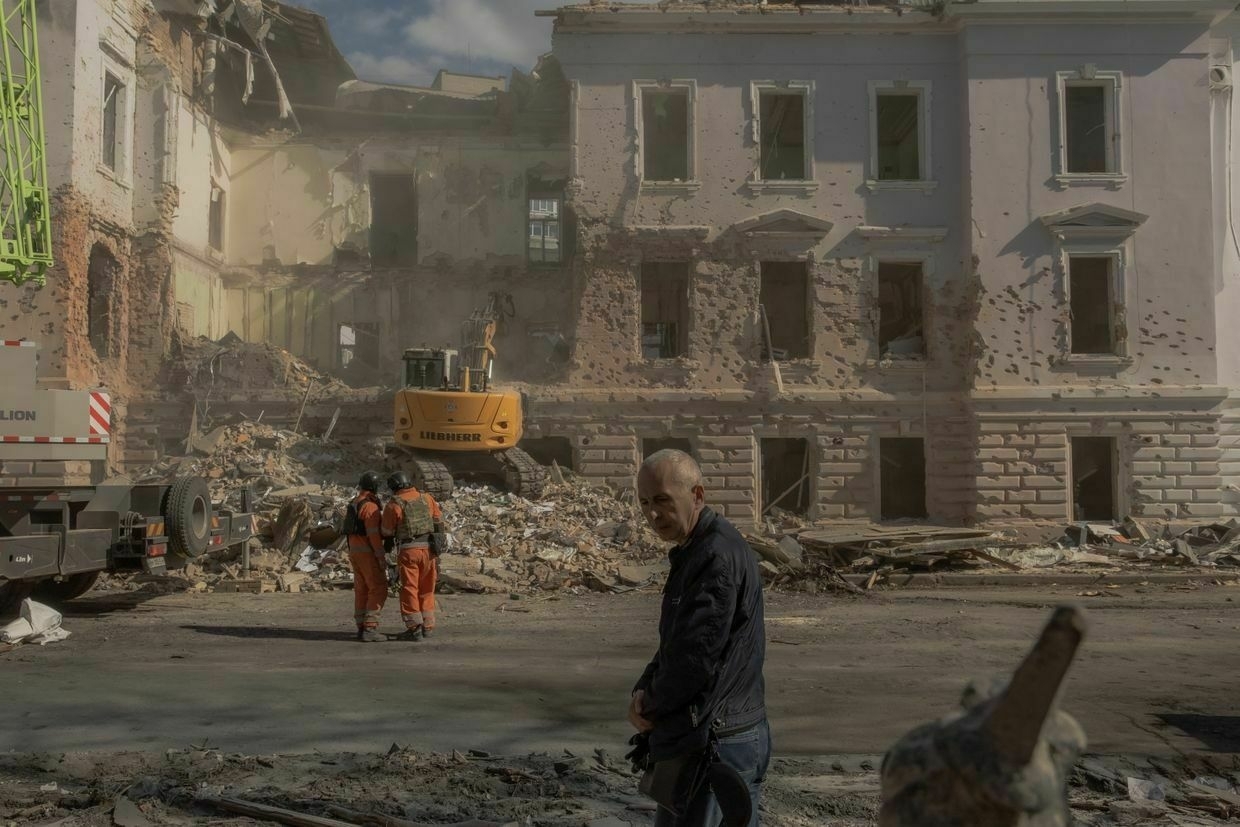
Russia killed at least 273 Ukrainian POWs during full-scale war, prosecutors sayUkrainian prosecutors have documented cases of Russian forces summarily executing 273 Ukrainian prisoners of war (POWs), the Liga.net news outlet reported, citing a statement from the Prosecutor General's Office.
Kyiv and the UN have raised alarm over the rising number of such cases, saying they point to a systematic policy by Russia to murder Ukrainian captives. Half of the document cases were recorded this year alone.
Seventy-seven criminal cases have been launched in connection with the killings of POWs, while only two people were convicted, and a trial against a third person is ongoing. The statement did not clarify whether the convictions were issued in absentia.
A total of 188 people have been convicted of various war crimes, including 18 captured Russian soldiers and one civilian, who were convicted in person. The rest were convicted in absentia.
Earlier this week, Ombudsman Dmytro Lubinets reported a case of the likely murder of a Ukrainian POW who was apparently tied to a motorcycle by Russian soldiers and dragged along the road.
Ukraine's military intelligence agency (HUR) said in May that it alone had documented more than 150 cases of Ukrainian soldiers being executed after surrendering to Russian forces. Multiple intelligence reports suggest that Russian soldiers have received explicit orders to kill prisoners of war.
The United Nations Independent International Commission of Inquiry on Ukraine confirmed in March growing numbers of incidents in which Russian forces killed or maimed surrendering Ukrainian troops.
A separate Ukrainian investigation is also underway into the killing of around 50 Ukrainian POWs in the Russian-run Olenivka prison in 2022. Kyiv blamed the killings on Russia, saying Moscow's forces deliberately put Azov fighters in a separate building that was later destroyed.
Russia denied responsibility, claiming the explosion was caused by a Ukrainian HIMARS strike — a version UN investigators have rejected.
Although Moscow blocked an independent investigation by denying UN monitors access, Lubinets recently said that an internal UN analysis concluded Russia was to blame.
Note from the author:
Ukraine War Latest is put together by the Kyiv Independent news desk team, who keep you informed 24 hours a day, seven days a week. If you value our work and want to ensure we have the resources to continue, join the Kyiv Independent community.
-
Arrests, raids, beaten and bloodied suspects — how Russia-Azerbaijan relations have unravelled
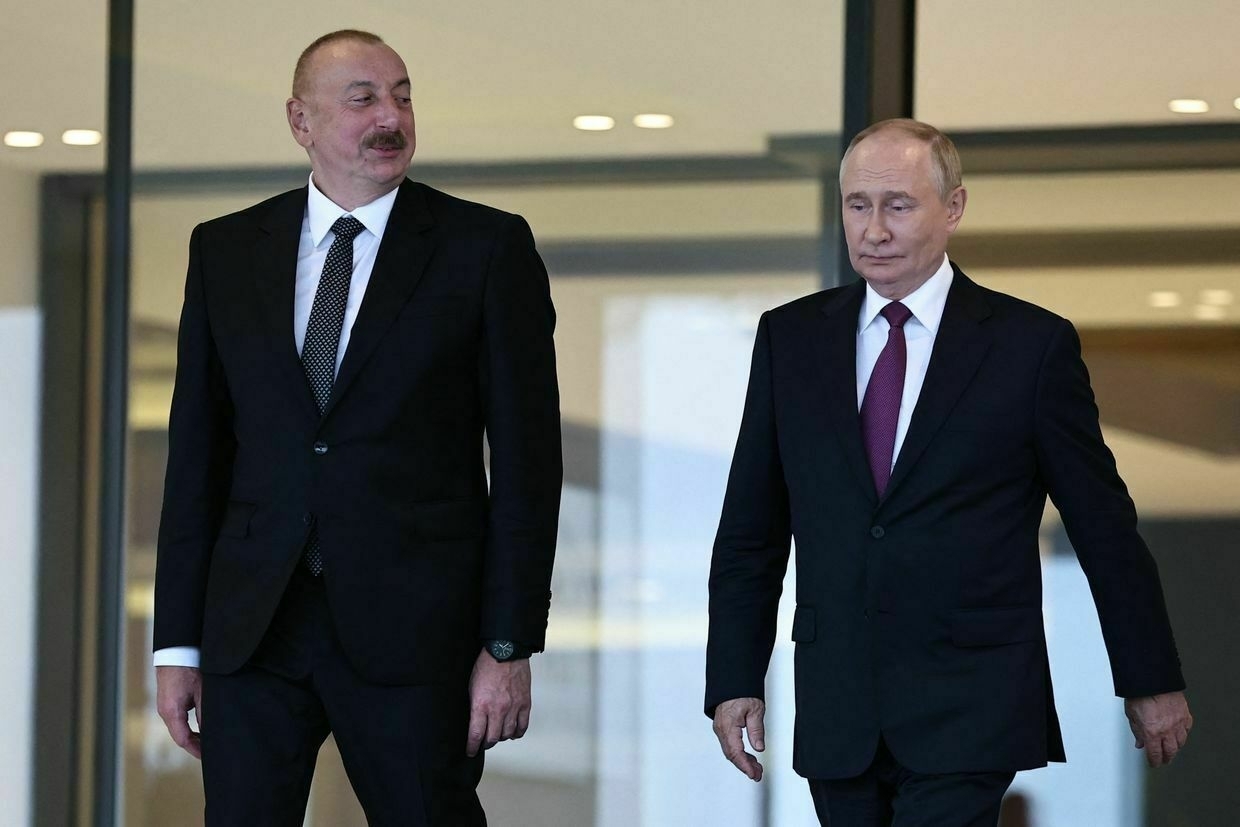
Deaths in custody, media offices raided, and beaten and bloodied suspects paraded in court — relations between Russia and Azerbaijan, once considered close, have sharply deteriorated in recent days amid a series of high-profile incidents.
The latest tensions erupted over the weekend when Russian law enforcement officers detained over 50 Azerbaijani nationals in Yekaterinburg, Russia, as part of an investigation into a murder case from 2001.
Two men — brothers Ziyaddin and Huseyn Safarov — were killed during the operation, and several others were injured.
The incident prompted a sharp response from Baku.
On June 28, Azerbaijan’s Foreign Ministry released a statement describing the killings as “ethnically motivated public and deliberate unlawful actions,” adding that Russia’s actions have “recently taken on a systematic nature."
The incident is just the latest development in a years-long reshaping of the geopolitical landscape in the South Caucasus. Azerbaijan, Armenia, and Georgia were all Soviet republics, and Russia still views the region as its own backyard.
But Russia’s hold and influence over them has been challenged, a process which began before the full-scale invasion of Ukraine and has continued to pick up speed in the following nearly three and a half years.
Moscow’s relationship with Baku has been particularly complex. Vadim Dubnov, a columnist for Radio Free Europe/Radio Liberty’s Echo of the Caucasus project, told the Kyiv Independent that the latest confrontation is part of a broader and long-running shift in the bilateral relationship.
“The deterioration of relations was systemic,” he said.
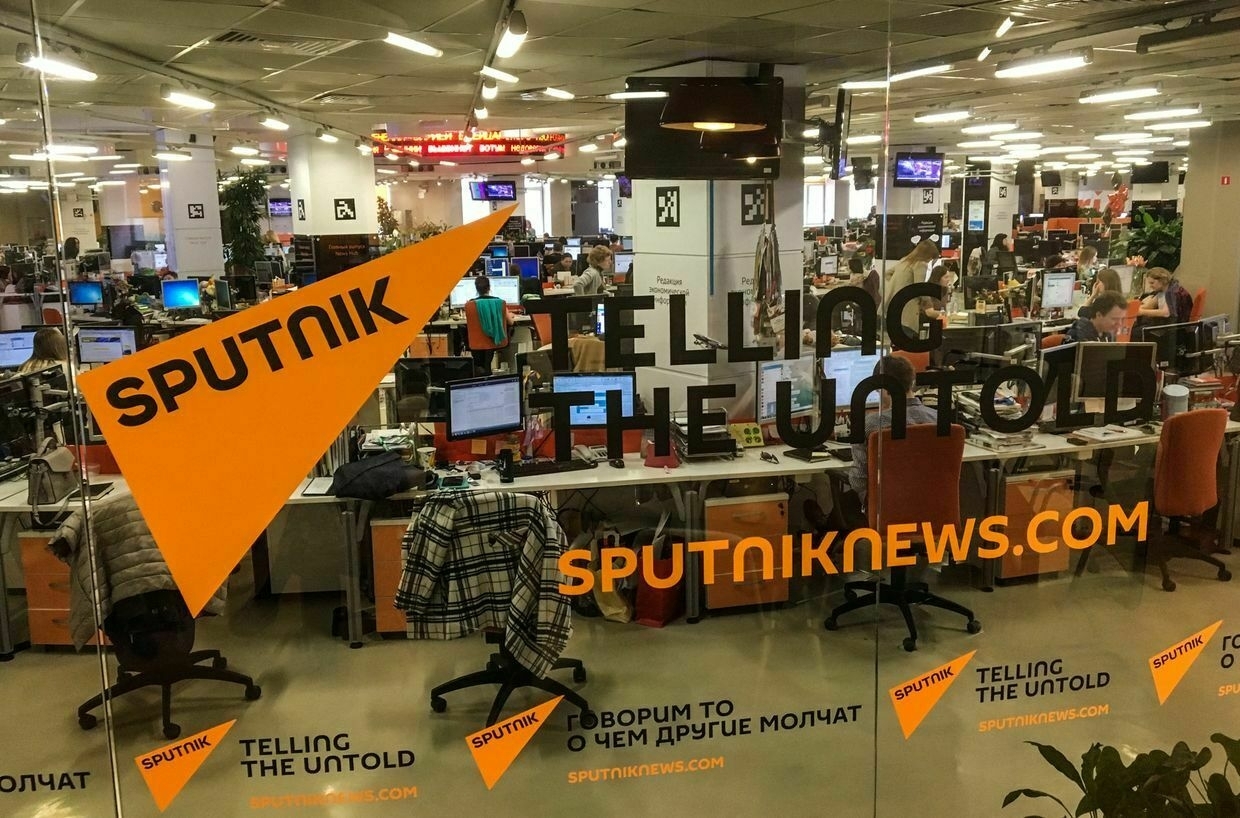
A view shows the main newsroom of Sputnik news, part of the state-run media group Russia Today, in Moscow, Russia, on April 27, 2018. (Mladen Antonov / AFP via Getty Images) Russia’s decreasing clout
Before 2020, Russia’s closest ally in the region was Armenia, which had been locked in a decades-long, on-off conflict with Azerbaijan over the disputed region of Nagorno-Karabakh.
But after Russian “peacekeepers” failed to act in either the Second Karabakh War in 2020 or the Azerbaijani lightning offensive in 2023, both of which saw Azerbaijan reclaim its lost territory, this relationship soured greatly.
“Armenia has realized that its only security guarantee is not Russia but peace with its neighbors,” Dubnov said.
Buoyed by its military success, Azerbaijan has been seeking to reassert influence over the region and redefine its relationship with Moscow.
“After the Karabakh war, I think (Azerbaijan President Ilham) Aliyev may have believed that he had obtained everything he could from Moscow,” Dubnov said.
Armenia, which has lambasted Moscow for failing to help it during the Nagorno-Karabakh conflict, was now drifting closer to the West.
Armenian Prime Minister Nikol Pashinyan has suspended the country’s membership in a Russian-led Collective Security Treaty Organisation (CSTO) military alliance and announced plans to join the European Union. Recently, there has also been a crackdown on the pro-Russian opposition in Armenia.
As Russia is losing its grip over Armenia and Azerbaijan, the only country in the region where its influence remains strong is Georgia.
Dubnov said that Russia’s position in the South Caucasus is weaker now, and Turkey, an ally of Azerbaijan, has emerged as a major regional player.
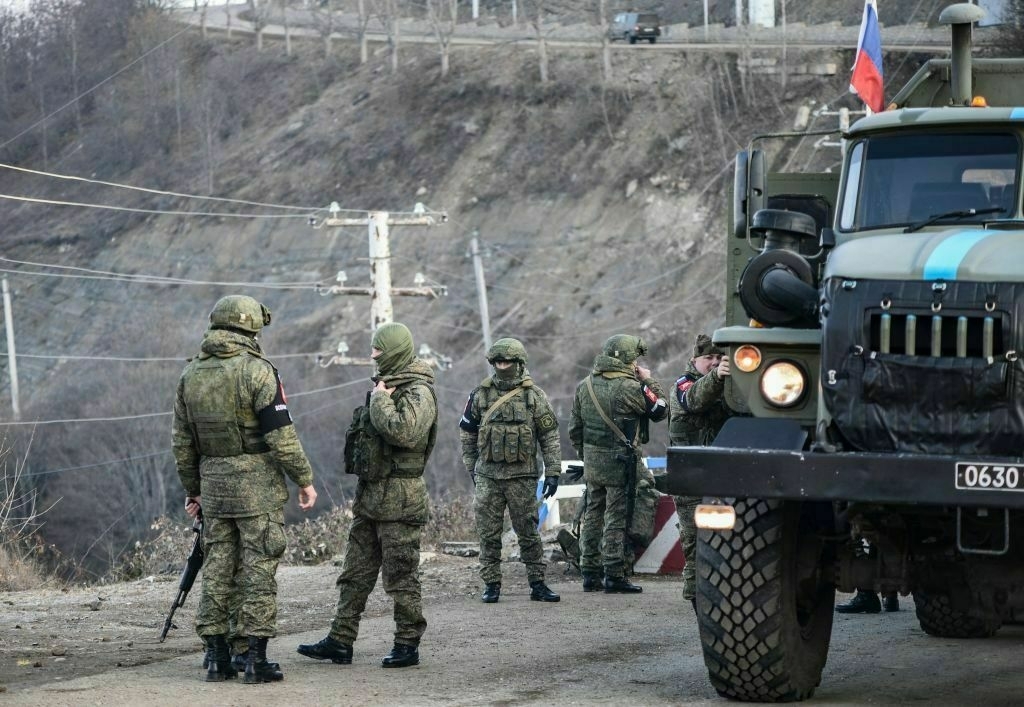
Russian soldiers are deployed at the Lachin corridor, Nagorno-Karabakh region’s only land link with Armenia, in Nagorno-Karabakh, on Dec. 26, 2022. (Tofik Babayev / AFP via Getty Images) Russia-Azerbaijan tensionsWhile recent incidents have brought tensions into the open, analysts say the rupture reflects a longer, structural shift in Azerbaijan’s foreign policy.
Dubnov described the shift as “systemic and inevitable,” pointing to a gradual breakdown since Russia’s annexation of Crimea in 2014 and the beginning of its war in eastern Ukraine.
“Azerbaijan was quite seriously concerned about its northern borders and the possibility of Moscow’s influence on national minorities,” Dubnov said.
Dubnov said Baku’s moves should not be seen purely as a pivot away from Moscow, but as an effort to restore geopolitical balance.
“Aliyev began to improve relations with the West, especially after (U.S. President Donald) Trump returned to the White House, and to restore this balance,” he said.
“So, it’s not so much about worsening relations with Russia or moving away from Russia, but about restoring that balance. And now there is simply a greater distance between the two."
But as this distance increases, it’s presenting itself in ever more dramatic fashion in what appears to be a series of tit-for-tat actions.
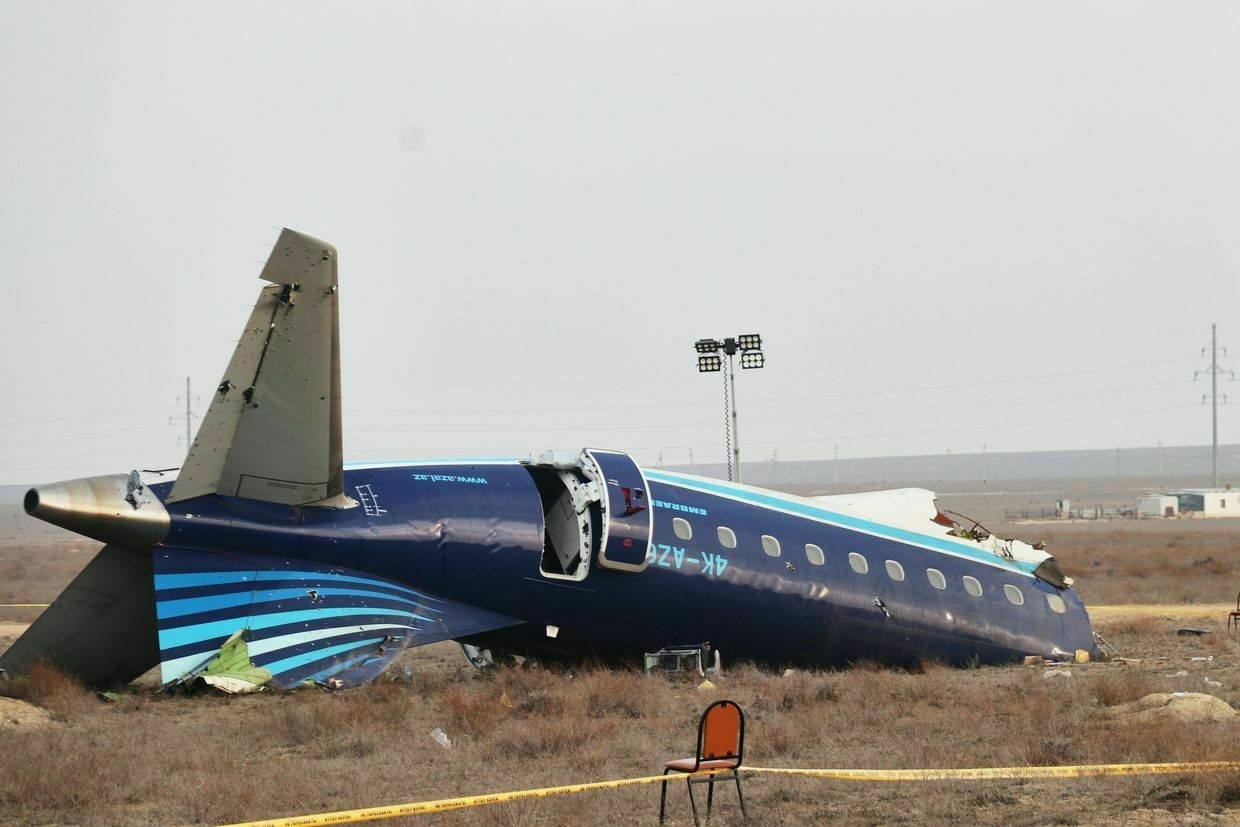
Evidence collection efforts at the crash site of an Azerbaijan Airlines (AZAL) passenger plane near Aktau, Kazakhstan, on Dec. 27, 2024. (Meiramgul Kussainova/Anadolu via Getty Images) Crash of AZAL airlinerThe current deterioration goes back further than just this weekend and has its roots in a tragedy late last year when a Russian air defense system shot down an Azerbaijani passenger plane.
The aircraft en route from Baku to Grozny in Russia’s Chechen Republic suddenly changed course and crashed near Aktau, Kazakhstan, on Dec. 25, 2024, killing 38 people out of 67 on board.
While Russian President Vladimir Putin called Aliyev shortly after the incident to offer condolences, he did not take responsibility for the crash.
Aliyev later criticized Russia’s handling of the incident, accusing its agencies of suppressing evidence and spreading “absurd versions” of what happened.
Dubnov noted that while the incident was not the origin of the diplomatic rupture, it served as a catalyst.
“The story with the plane was not the primary issue,” he said. “It was not the beginning of the quarrel, but rather an opportunity for Baku to start, legalize, and formalize this quarrel."
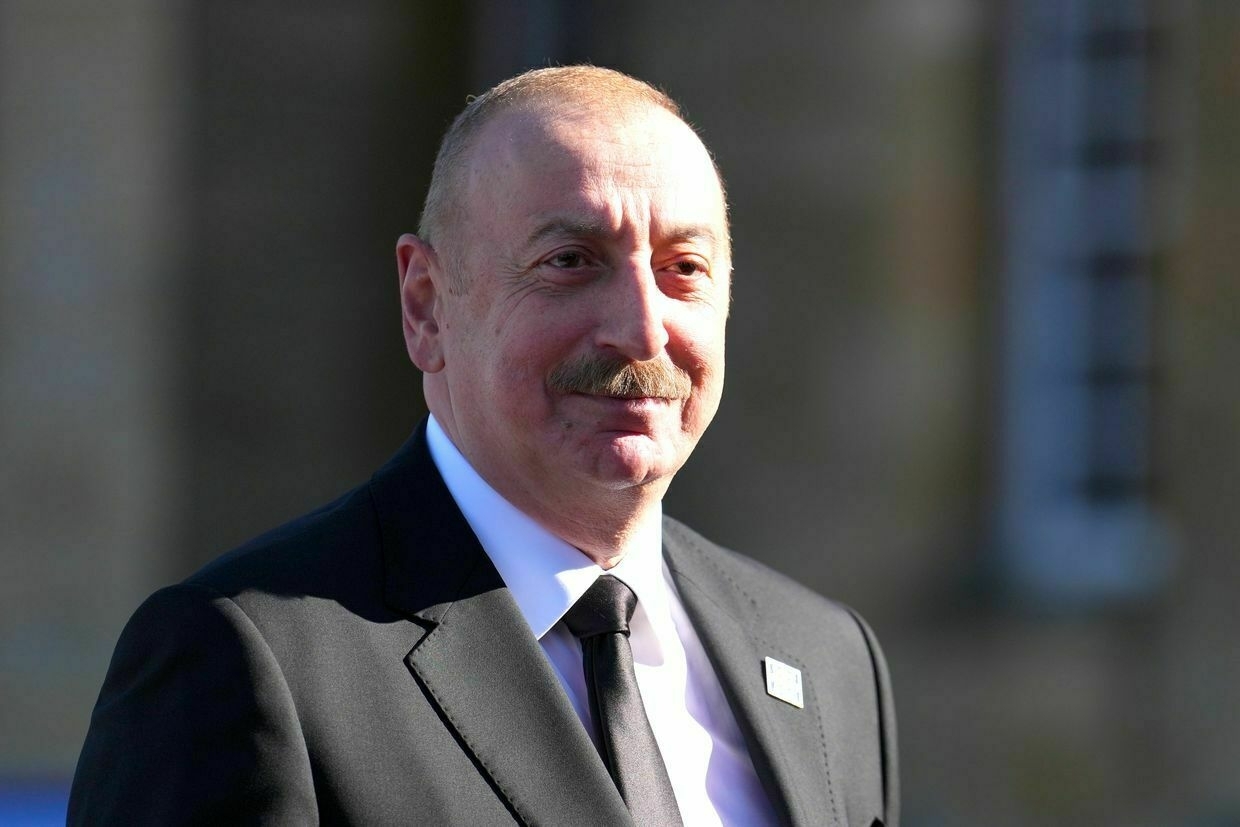
President of Azerbaijan Ilham Aliyev talks to the press at the European Political Community Summit in Woodstock, England, on July 18, 2024. (Carl Court / Getty Images) Aliyev’s Moscow parade tripThe fallout from the plane crash spilled over into symbolic diplomacy.
In March, both Russian and Azerbaijan confirmed that Aliyev had accepted an invitation to attend Russia’s May 9 Victory Day parade in Moscow — a significant gesture, as he had last attended in 2015.
But just days before the event, Aliyev abruptly canceled his trip without explanation.
Dubnov said the decision sent a clear message.
“I think that after Aliyev didn’t come to Moscow on May 9, it became clear that there would be no apology for the downed plane,” he said.
“No one expected a direct apology. What everyone was really waiting for was a form of compromise that could substitute for one."
Dubnov added that Aliyev’s no-show served as a signal to Moscow that “no improvement in relations was coming — at least not publicly."
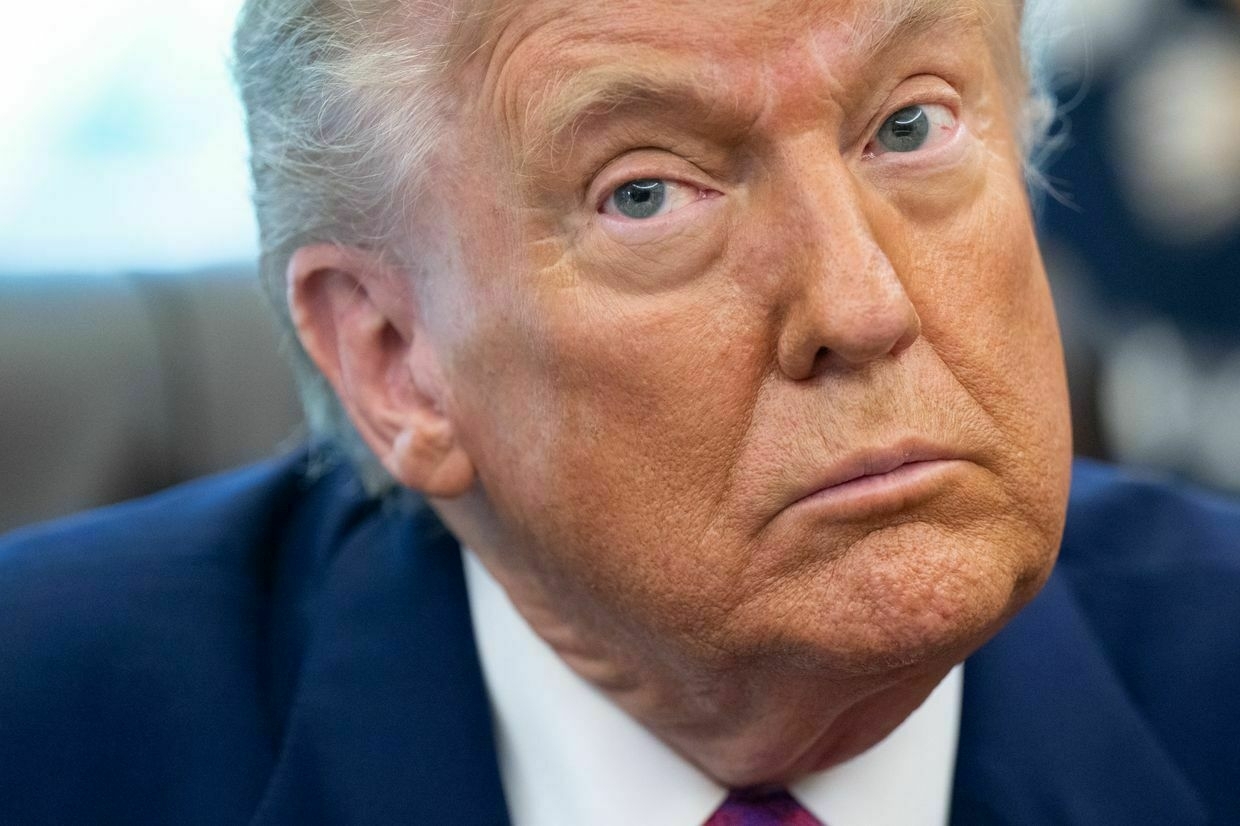
U.S. President Donald Trump at the White House in Washington, DC, U.S. on June 10, 2025. (Saul Loeb / AFP via Getty Images) The current situation
Tension has simmered since May 9 and erupted in recent days with the deaths in Yekaterinburg over the weekend, with Azerbaijan’s reaction going well beyond just official statements.
The government canceled all Russian-organized events scheduled to take place across Azerbaijan. A planned visit by a parliamentary delegation to Moscow was also suspended.
The diplomatic rupture escalated further on June 30, when Azerbaijani police raided the Baku offices of Sputnik Azerbaijan, a Russian state-controlled media outlet that operates as one of the Kremlin’s main propaganda tools.
Several employees were detained, with Azerbaijani authorities claiming two of the individuals arrested were operatives of Russia’s Federal Security Service (FSB).
Among the detainees were Sputnik Azerbaijan’s chief editor, Igor Kartavykh, and managing editor, Yevgeniy Belousov. In response, the outlet called the allegations “absurd."
Russia retaliated by summoning Azerbaijani Ambassador Rahman Mustafayev to the Foreign Ministry on July 1, where he was informed of Moscow’s formal protest over Baku’s “unfriendly steps and deliberate measures to dismantle relations with Moscow."
A day later, Azerbaijan arrested eight Russian citizens described as “members of two organized crime groups” accused of cybercrimes and smuggling drugs from Iran.
They were presented in court handcuffed, bruised, and bloodied.
Arrested Russian citizens as they appeared in a Baku court. What a grim statement by Aliyev.
— Leonid Ragozin (@leonidragozin) July 1, 2025
Meanwhile, Russian law enforcement agencies are arresting Azeri diaspora leaders across the country, specifically targeting owners of large markets allegedly controlled by ethnic… pic.twitter.com/iiFAbHKHKvReflecting on the sharp escalation in tensions — from deadly detentions to the raid on Sputnik's bureau — Dubnov suggested that while the fallout appears serious, it is unlikely to result in a full diplomatic rupture.
"So I believe this will last for a while — not just a few days, but perhaps a few weeks — yet I don't think it will lead to anything truly consequential," he said.
Note from the author:
Hi, this is Tim. Thank you for reading this article. The Kyiv Independent doesn't have a wealthy owner or a paywall. Instead, we rely on readers like you to keep our journalism funded. If you liked this article, consider joining our community today.
Ukraine’s new interceptor UAVs are starting to knock Russia’s long-range Shahed drones out of the skyRussia’s Shahed drone swarms are pummeling Ukraine on a nightly basis, inflicting ever more death and destruction in cities that had managed to carve out some sense of normalcy amid wartime. Civilian alarm has grown. With traditional air defense stockpiles running low, the government is banking on newly createdThe Kyiv IndependentKollen Post
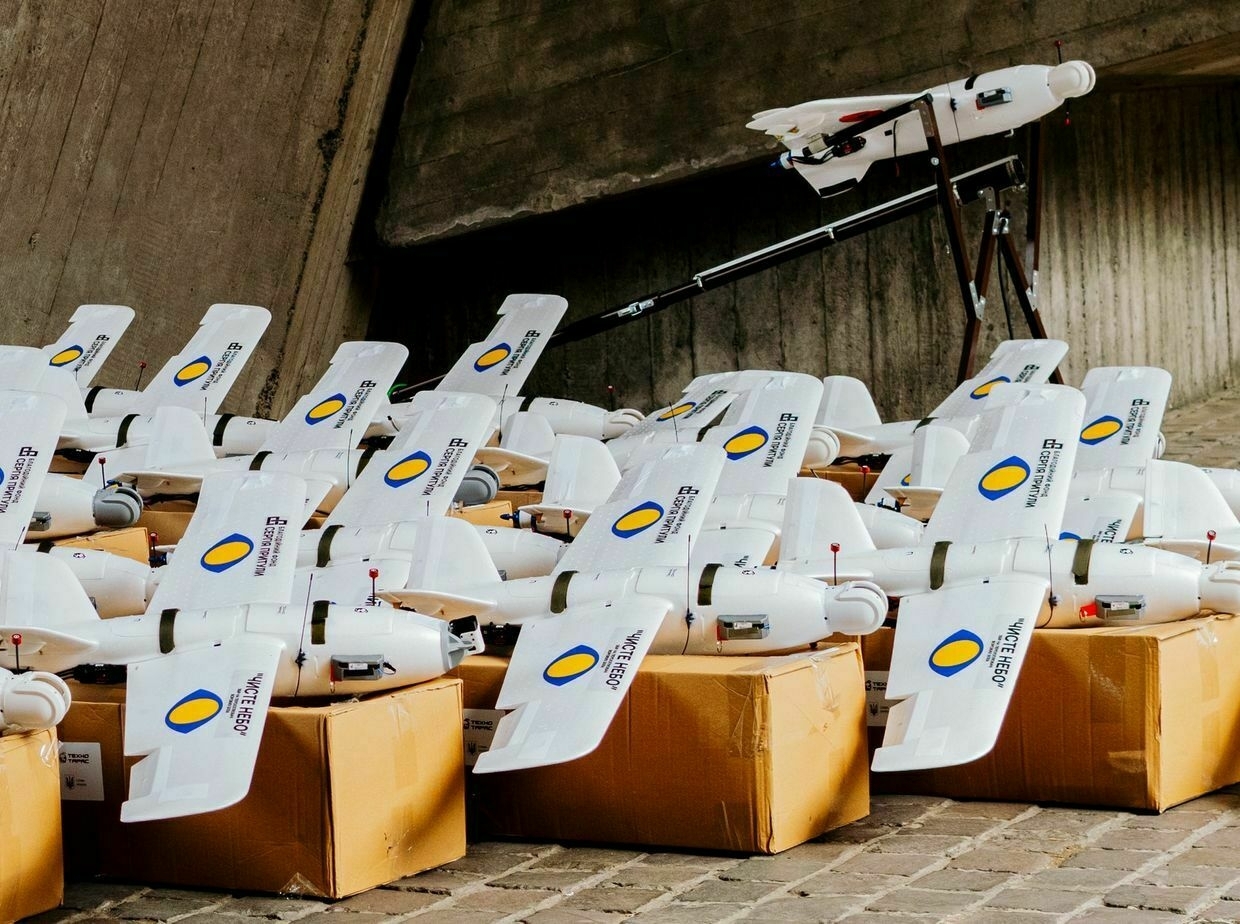
-
European partners reportedly caught off guard as US halts arms shipments to Ukraine
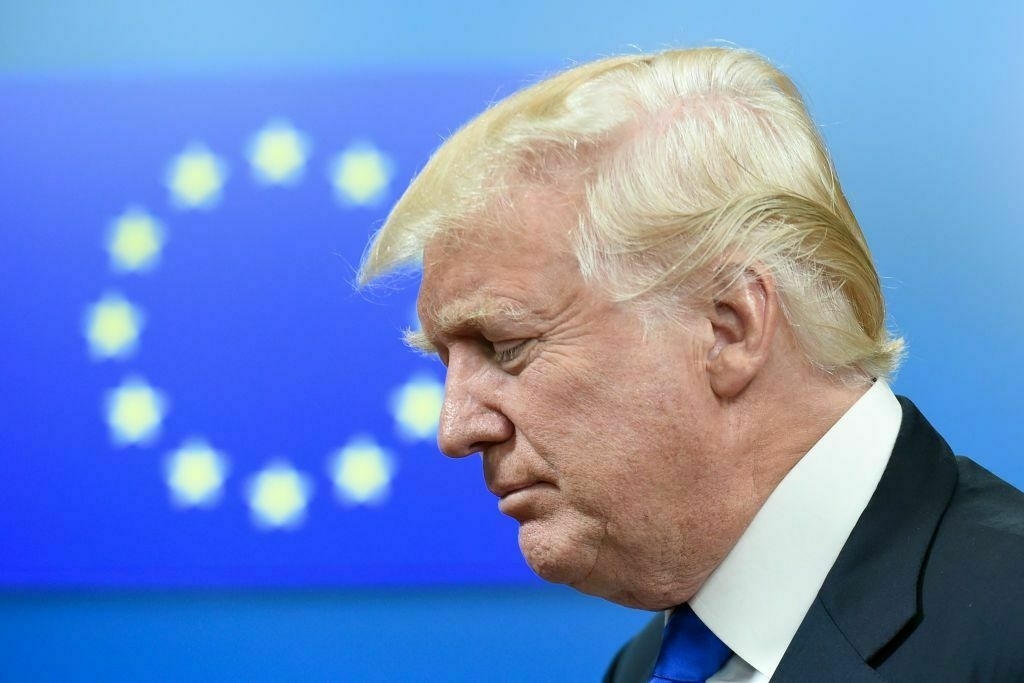
The Trump administration’s decision to halt deliveries of key military aid to Ukraine has caught European partners off guard and prompted urgent requests for clarification, Bloomberg reported on July 2, citing unnamed sources.
The pause affects the delivery of several weapons critical to Ukraine’s defense, including Patriot air defense missiles, precision-guided artillery shells, Hellfire missiles, and munitions for F-16 fighter jets.
The White House confirmed the hold, describing it as part of a broader reassessment of U.S. military stockpiles. Since U.S. President Donald Trump took office in January, the U.S. has not approved any new military aid packages for Ukraine.
According to Bloomberg, some European allies hope the Trump administration will soften or reverse the decision. The timing of the pause has raised particular concern as Ukraine faces one of the most intense waves of Russian missile and drone attacks since the start of the war.
In his evening address on July 2, President Volodymyr Zelensky said Ukrainian and U.S. officials are working through the aid issue at a “working level,” including discussions on critical air defense support.
Ukraine’s Defense Ministry said it has not received any formal notification of delays or cancellations but has requested urgent consultations with U.S. defense officials.
The Foreign Ministry also summoned U.S. Charge d’Affaires John Ginkel, warning that “any hesitation” in military support would encourage further Russian aggression.
The Kremlin welcomed the decision, with spokesperson Dmitry Peskov saying, “The fewer weapons that are supplied to Ukraine, the closer the end of the (war)."
NATO Secretary General Mark Rutte expressed understanding of Washington’s desire to safeguard its stockpiles but said that “Ukraine cannot do without all the support it can get."
U.S. Defense Secretary Pete Hegseth previously signaled a shift in policy, indicating that future defense budgets would prioritize domestic needs over military support for Ukraine.
‘Major casualties among civilians’ — US freeze on air defense missiles is terrible news for UkraineThe halting of deliveries of air defense missiles from the U.S. will lead to“major casualties among civilians,” a deputy commander in Ukraine’s air defense told the Kyiv Independent. Politico reported on July 1 that the U.S. Defense Department (DOD) had halted shipments of some weapons previouslyThe Kyiv IndependentKollen Post
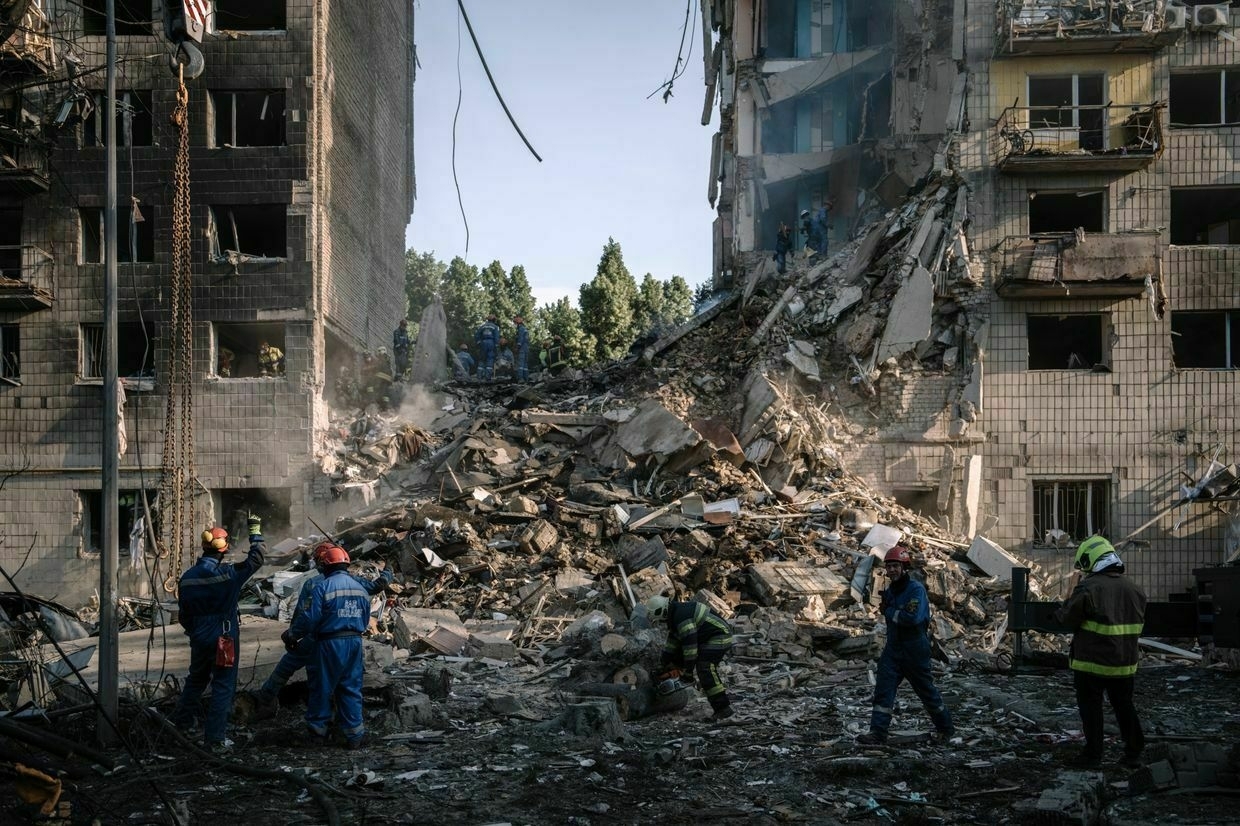
-
'Major casualties among civilians' — US freeze on air defense missiles is terrible news for Ukraine

The halting of deliveries of air defense missiles from the U.S. will lead to“major casualties among civilians,” a deputy commander in Ukraine’s air defense told the Kyiv Independent.
Politico reported on July 1 that the U.S. Defense Department (DOD) had halted shipments of some weapons previously promised to Kyiv out of concerns over the size of U.S. stockpiles, citing sources familiar with the matter.
The aid in question included several pieces of U.S. weaponry that have been critical to Ukraine’s ability to conduct the war.
Nick Schifrin, a reporter for PBS NewsHour, wrote on X that the halt included “PAC3 Patriots, 155mm artillery rounds, GMLRS, Stinger, AIM-7, and Hellfire missiles."
While the economics of losing such systems hurts the Ukrainian war effort, Ukraine’s military has managed to build its own equivalent to several of those since the war’s outset. The critical exception is air defense.
“Cutting off delivery of missiles for Patriot anti-air systems will mean a weaker air defense system over the country, and as a result, destruction of civilian infrastructure and major casualties among civilians,” Oleksii, a deputy commander who coordinates mobile air defense groups in Kyiv Oblast, told the Kyiv Independent.
In line with Ukrainian military policy, he asked not to be identified by last name.
Patriot missile systems are the best air defense Ukraine has ever had. More specifically, PAC-3 missiles for those systems are by far the most effective measure against Russian ballistic missiles like Iskander and Kinzhal.
Ukraine is highly secretive about the anti-missile missiles that remain in its stocks, but recent Russian strikes have been far more deadly than they were a year or two prior, with interception rates of ballistic missiles in particular dropping precipitously.
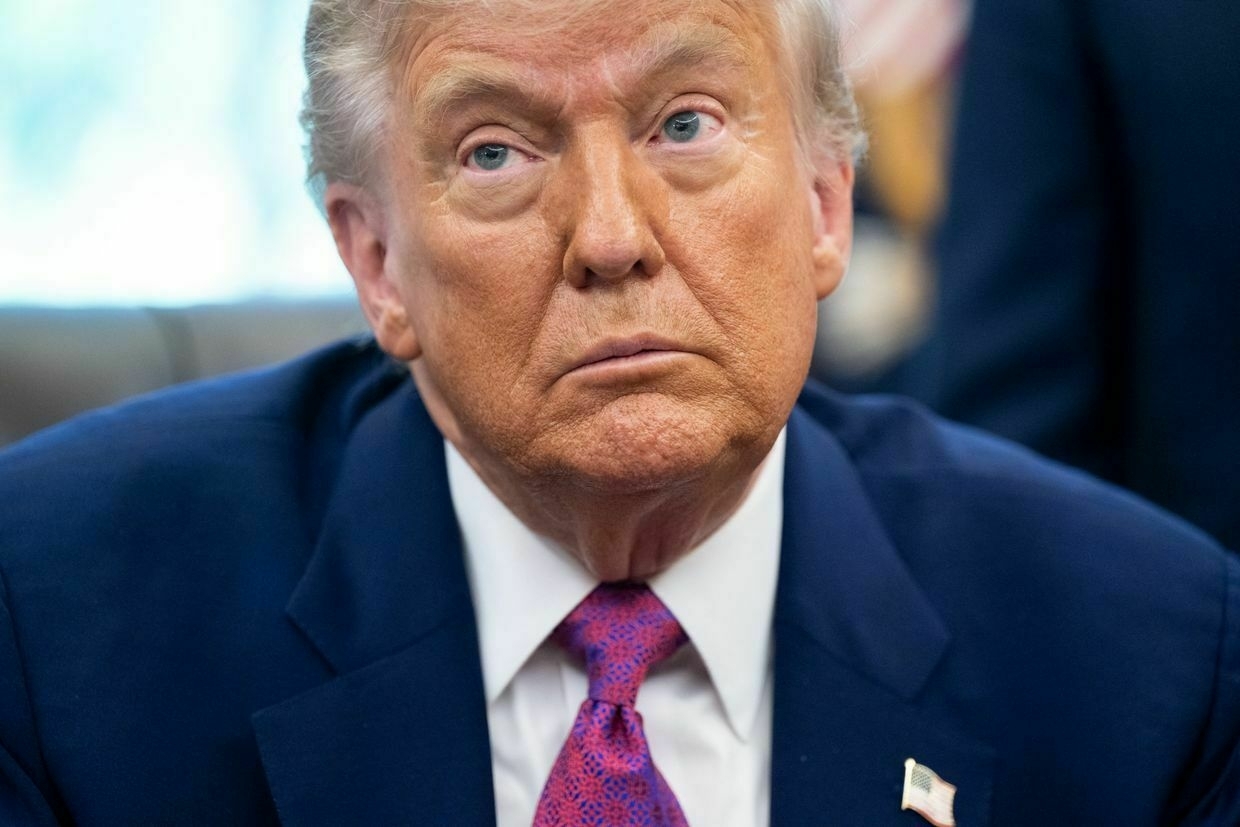
U.S. President Donald Trump speaks about the upcoming wildfire and hurricane seasons in Washington, DC, U.S. on June 10, 2025. (Saul Loeb / AFP via Getty Images) That is in large part because the U.S. has already been slow-walking its aid deliveries since U.S. President Donald Trump took office, particularly when it comes to air defense.
Russian ballistic missiles travel several times the speed of sound. In the case of the Kinzhal, Russia touts a max speed of Mach 10. They arc far above the surface of the earth, unlike cruise missiles, which maintain a relatively low, flat trajectory, giving more time for a surface-based interception.
Why Ukraine can’t build Patriots and PAC-3sU.S. defense giant Raytheon has built Patriot missile launchers since the early 1980s, over the course of which it has progressively upgraded the system’s software. Lockheed Martin makes the PAC-3 missiles themselves, which are uniquely good at targeting ballistic missiles.
PAC-3s destroy incoming ballistic missiles by physically hitting them in the air, a feat of targeting that requires remarkably precise measurements and timing for launch calculations.
They are equipped with sensors from Boeing that are able to spot proximate ballistic missiles and make the high-speed, last-minute adjustments necessary to collide with them.
A Russian airstrike targeted Boeing’s office in Kyiv just weeks ago. The aerospace giant employs some 1,000 people in Ukraine.
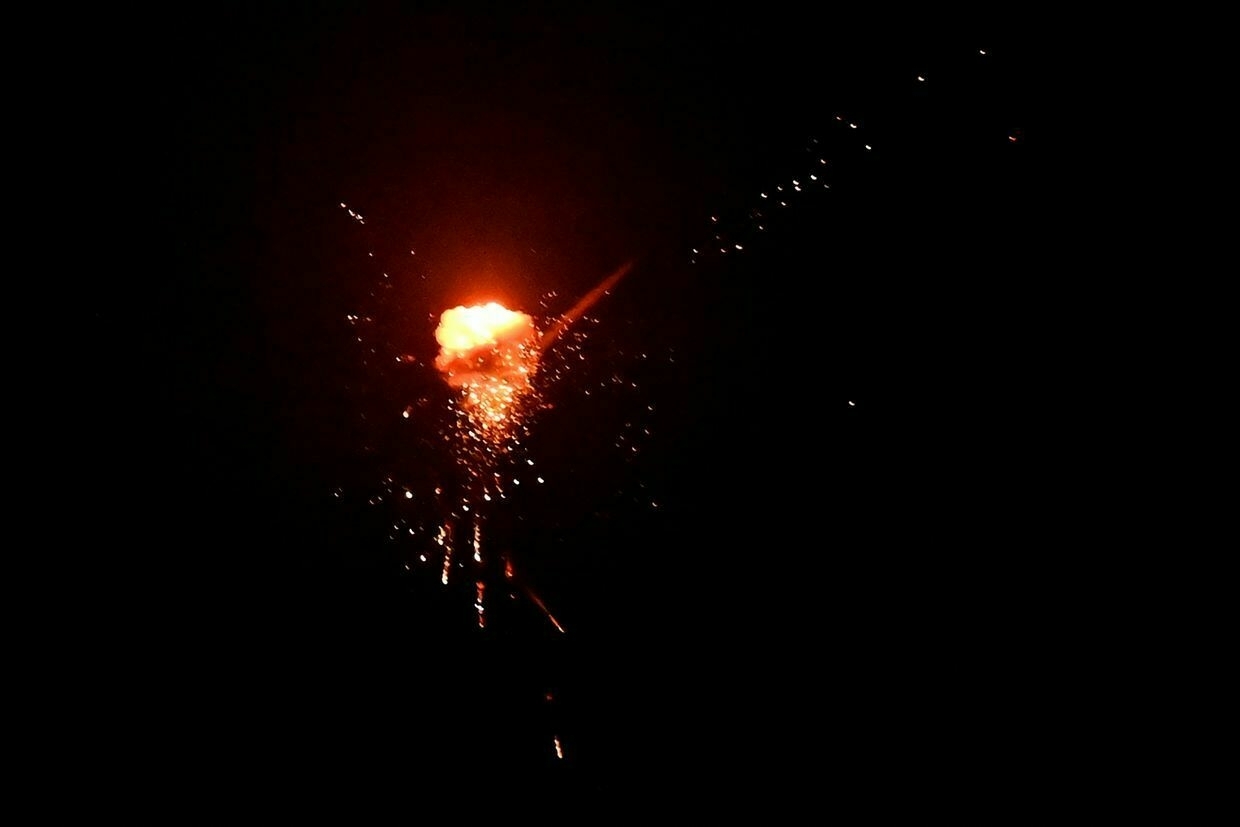
A Russian drone is shot down by Ukrainian air defenses during a night strike in Kyiv, Ukraine, on June 17, 2025. (Sergei Supinsky / AFP via Getty Images) 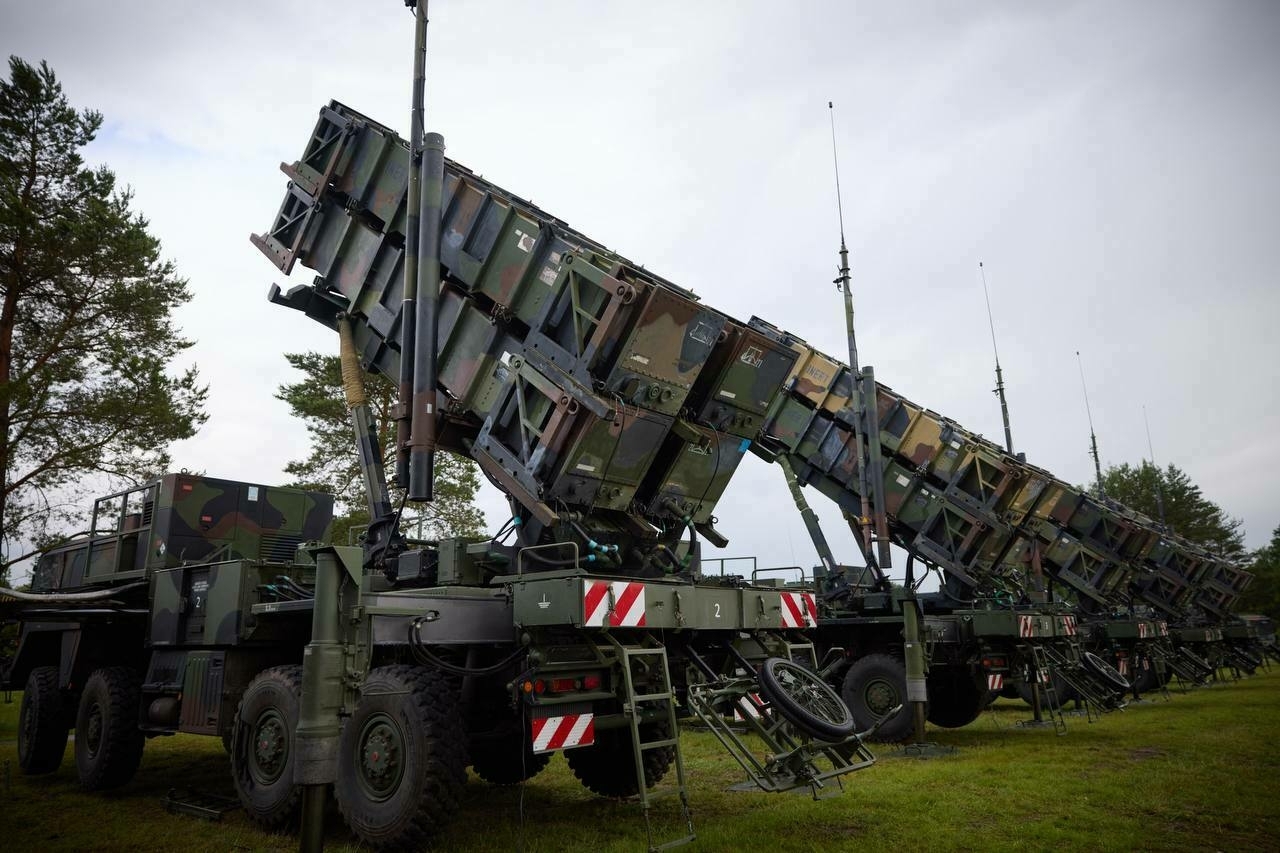
Patriot air defense launchers are seen at a German military base in Sanitz, Germany, on June 11, 2024. (President Volodymyr Zelensky / Telegram) Ukrainian weapons production has been remarkably innovative since the war’s start. But the interlinking expertise and precision that makes the Patriot PAC-3 system work took decades to build while backed by the budget of the U.S. Department of Defense — and with nobody bombing their factories.
Raytheon, Lockheed Martin, and Boeing each individually report revenues of well over $60 billion annually, which is significantly greater than the Ukrainian government’s annual tax revenue.
What Ukraine does — and doesn’t — haveUkraine still has a huge number of Soviet-made S-300 anti-air systems left over. But it is also running out of missiles for those systems — and many of the other former Warsaw Pact nations that earlier in the war sent their residual stockpiles to Ukraine have run out as well.
While S-300 munitions would, in theory, be cheaper to make than PAC-3s, they still require industrial facilities beyond what is required to make drones. While Russia still has them, Ukraine has never really had the chance to build them out.
Ukraine’s major weapons factories were set up by the Soviet Union and were not designed to operate independently. Ukraine-based factories made components for complex weapons systems that were only to be completed when they joined with engines or controllers, or launch vehicles from other Soviet manufacturers.
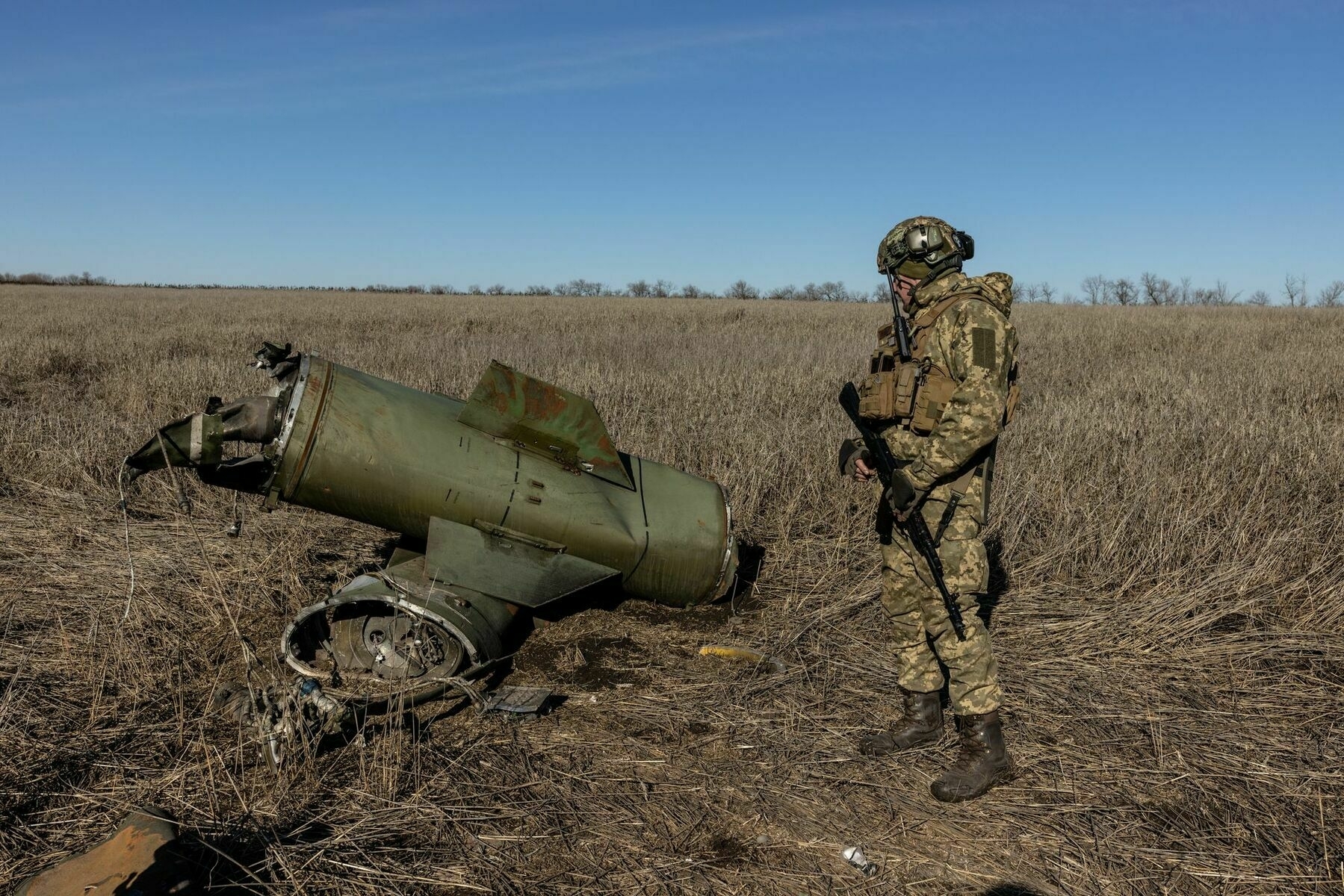
A Ukrainian soldier stands near the wreckage of an S-300 missile in Chasiv Yar, Donetsk Oblast, Ukraine, on March 6, 2023. (Diego Fedele / Getty Images) Given that the Soviet Union built them, Russia also knows exactly where many of those huge post-Soviet factories are and routinely bombs them.
Can Europe fill the gap?There are European manufacturers that make theoretically comparable air-defense systems, but they have proved themselves less effective within Ukraine and, maybe more importantly, are not made at the mass scale of Patriot missiles.
The U.S. government also controls the flow of Patriot systems and ammunition, meaning that if it wants to embargo Ukraine’s access to them, it can.
Overall, the U.S. denial of sophisticated air defense to Ukraine is a serious blow for which there is no ready technological solution.
“Likely – or certainly – that decision is aimed at weakening the tough negotiating position of our country, and at us accepting conditions that are dictated to us from outside,” Oleksii said.
Note from the author:
Hi, this is Kollen, the author of this article. Thanks for reading. With Russian forces massing at the front and air attacks intensifying across the country, Ukraine is holding up in the face of a tense summer. If you want more stories like this, consider joining our community today to help support our work.
Why Ukraine isn’t building its own version of US PatriotA series of Russian ballistic missile attacks on Ukrainian cities have killed dozens of civilians in recent weeks, shaking an already uneasy sense of safety for Ukrainians living far from the front lines. The Russian strikes are growing more lethal as foreign air defense aid to Ukraine has dwindled, particularlyThe Kyiv IndependentKollen Post


